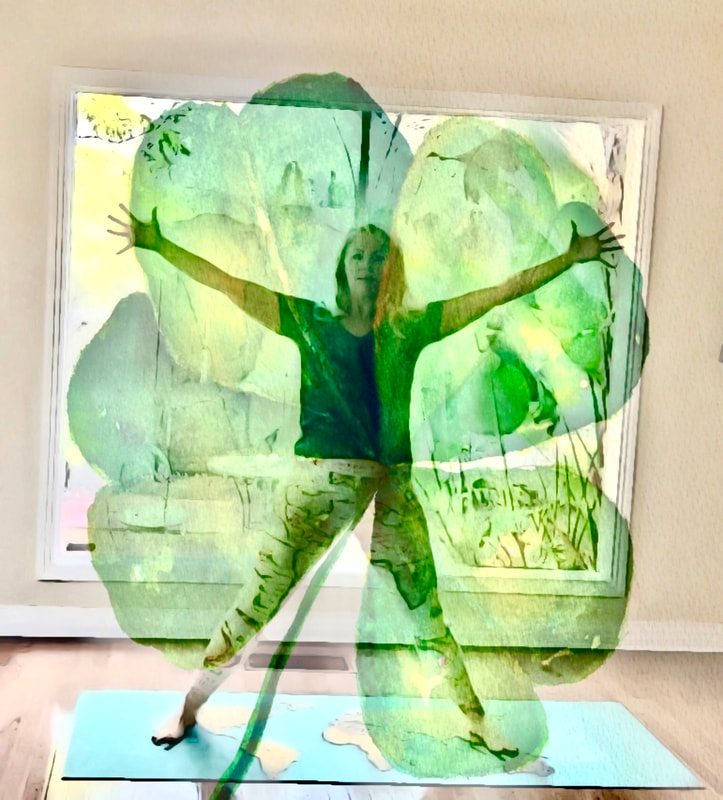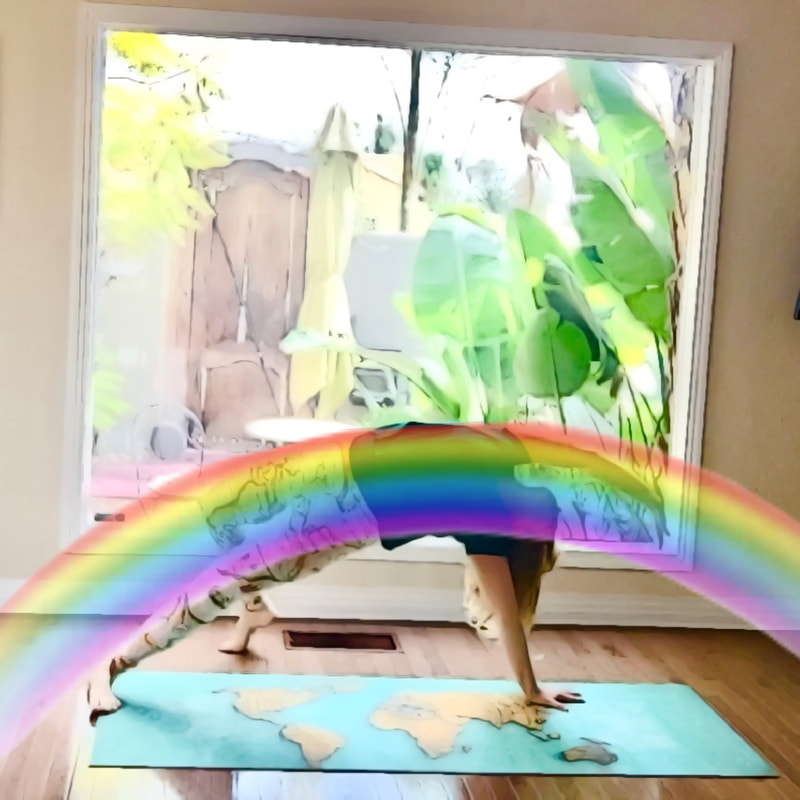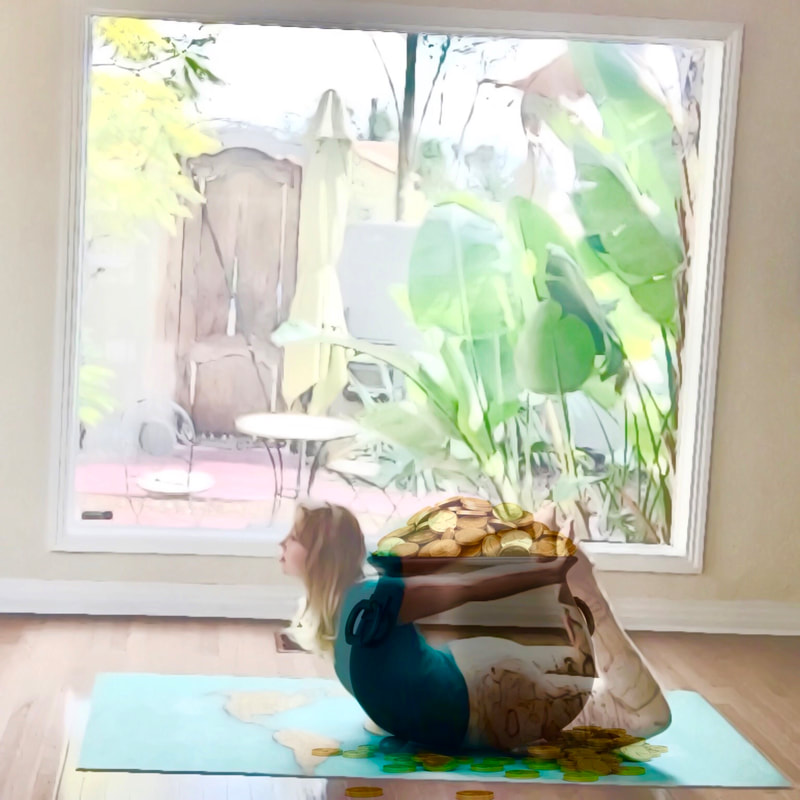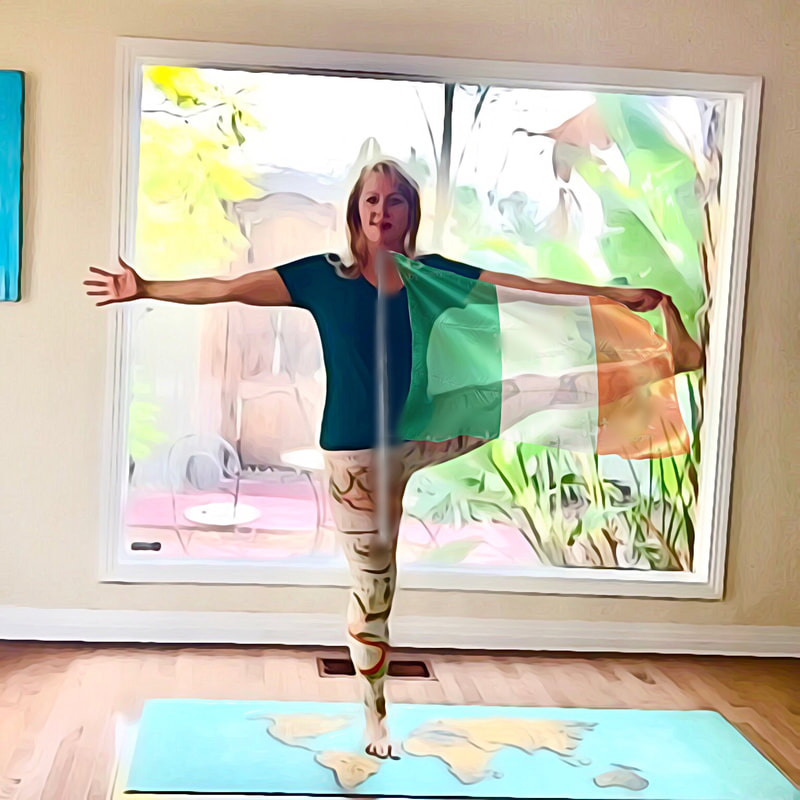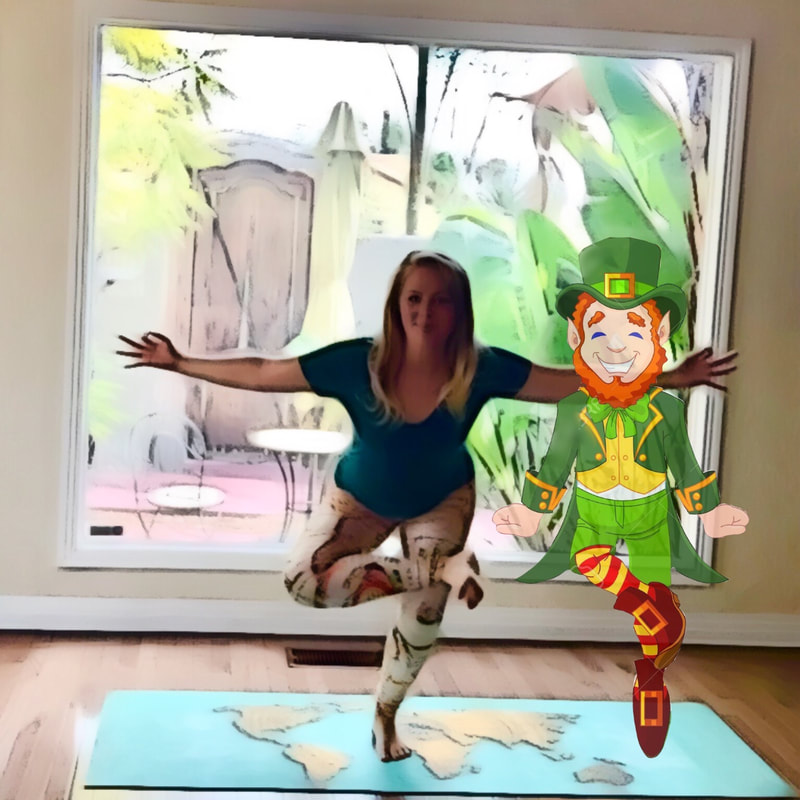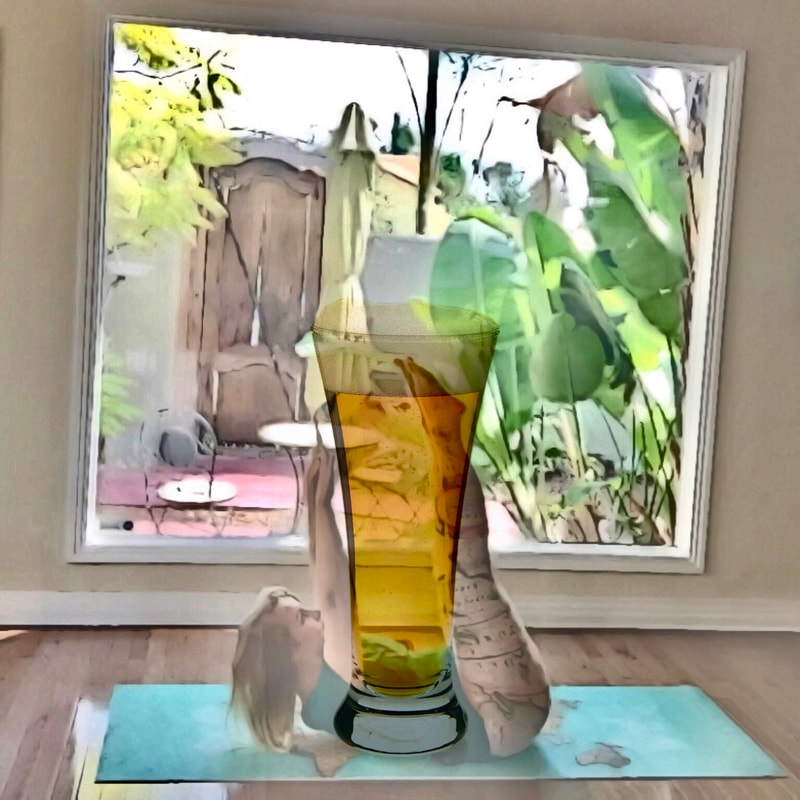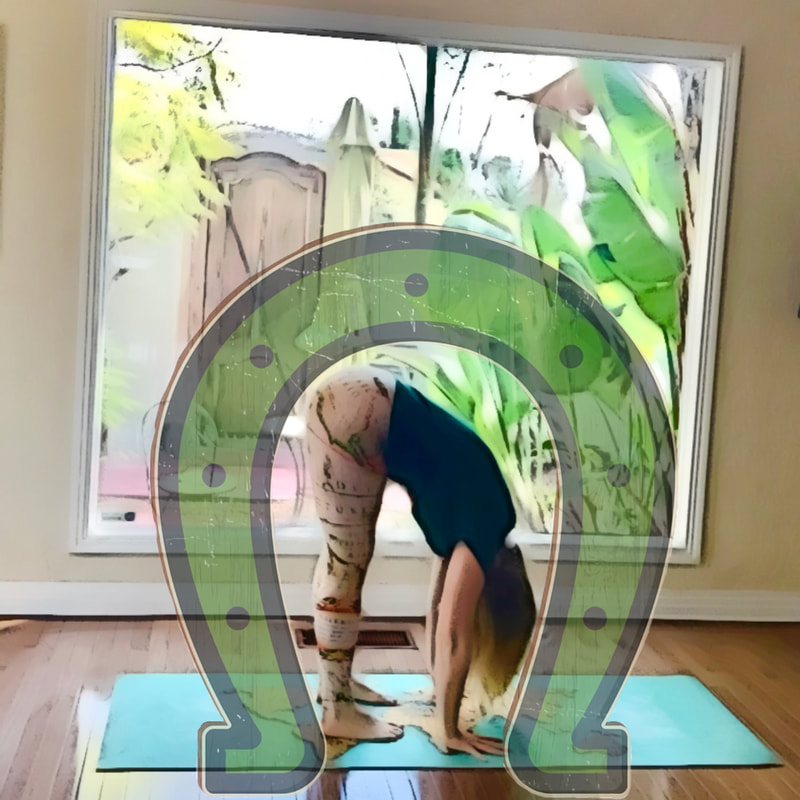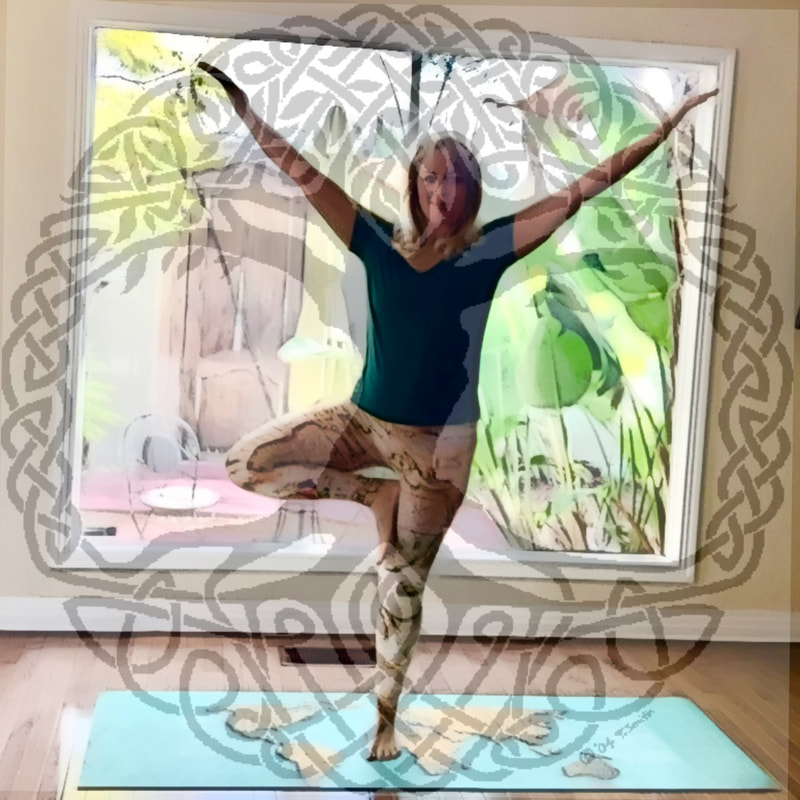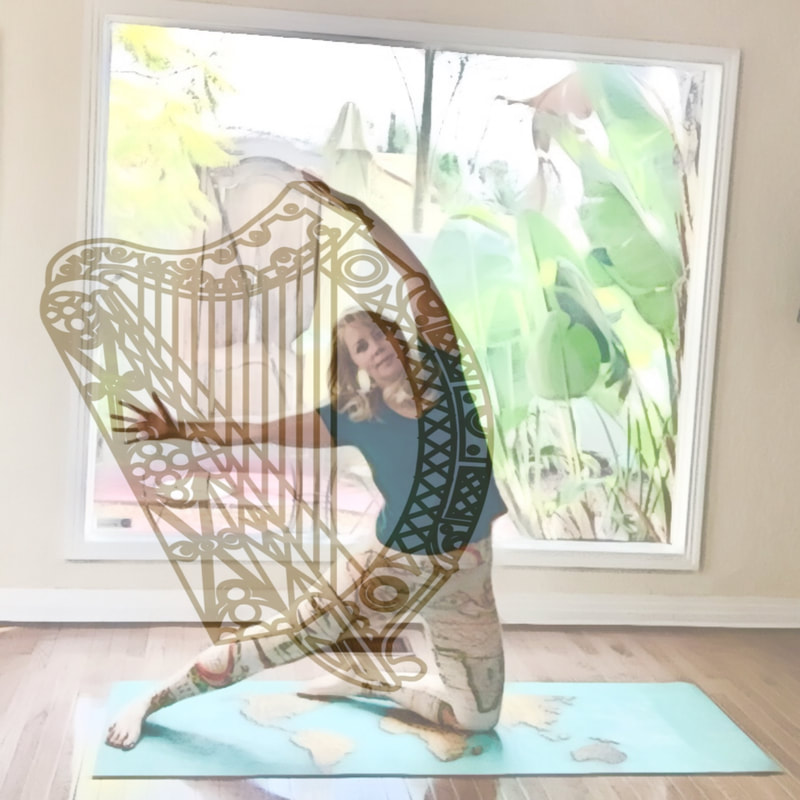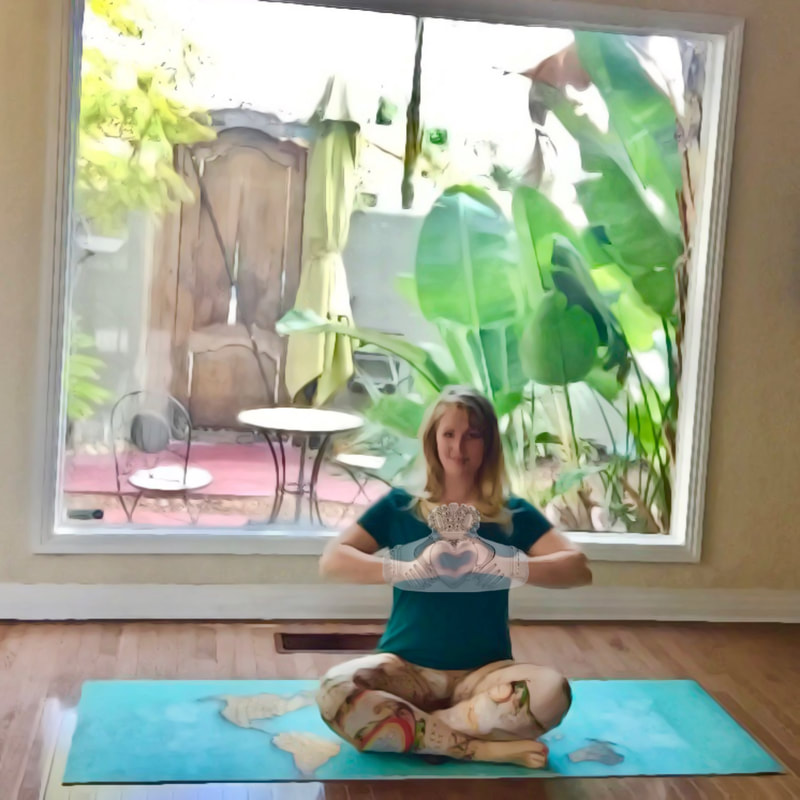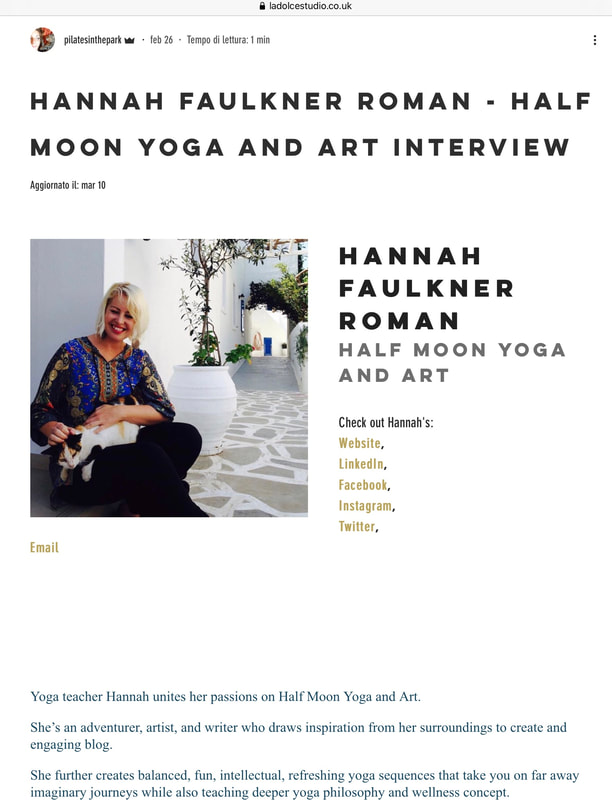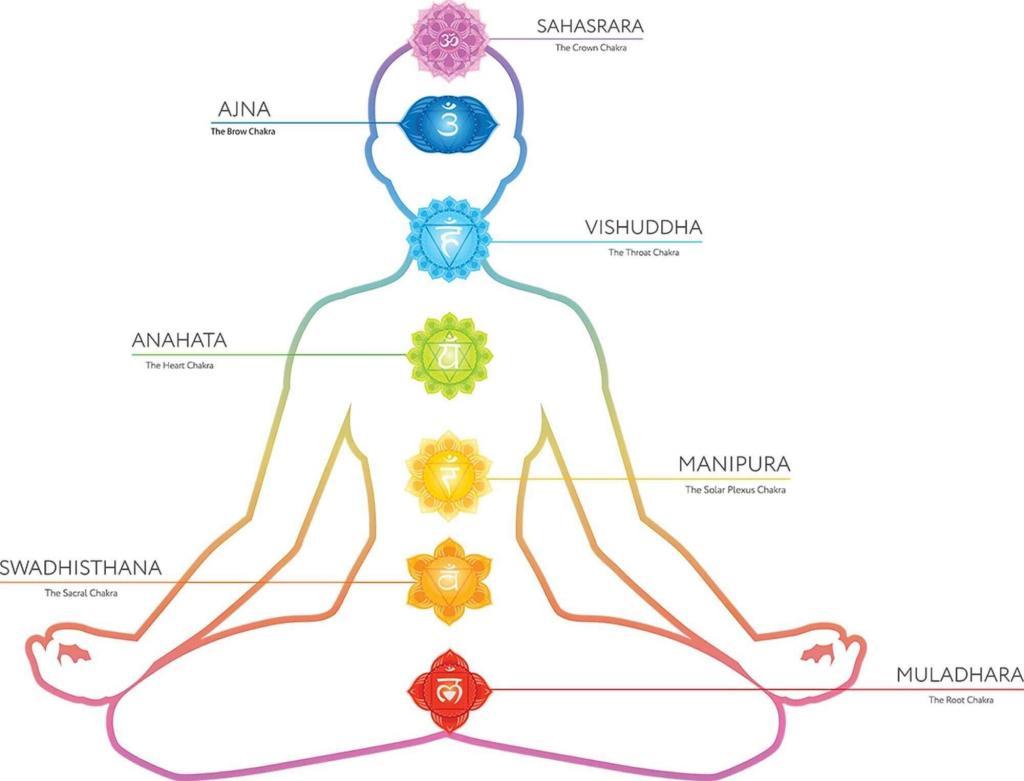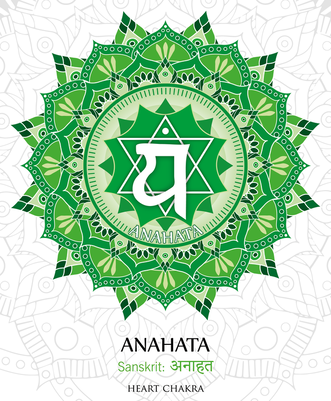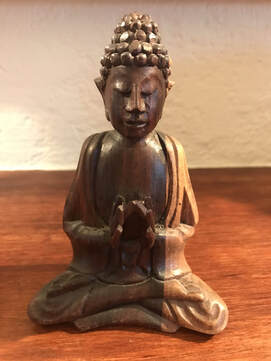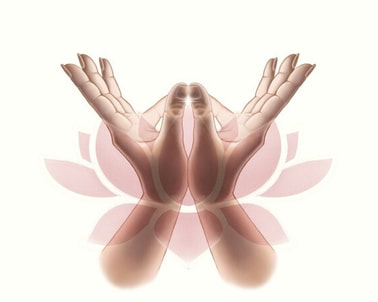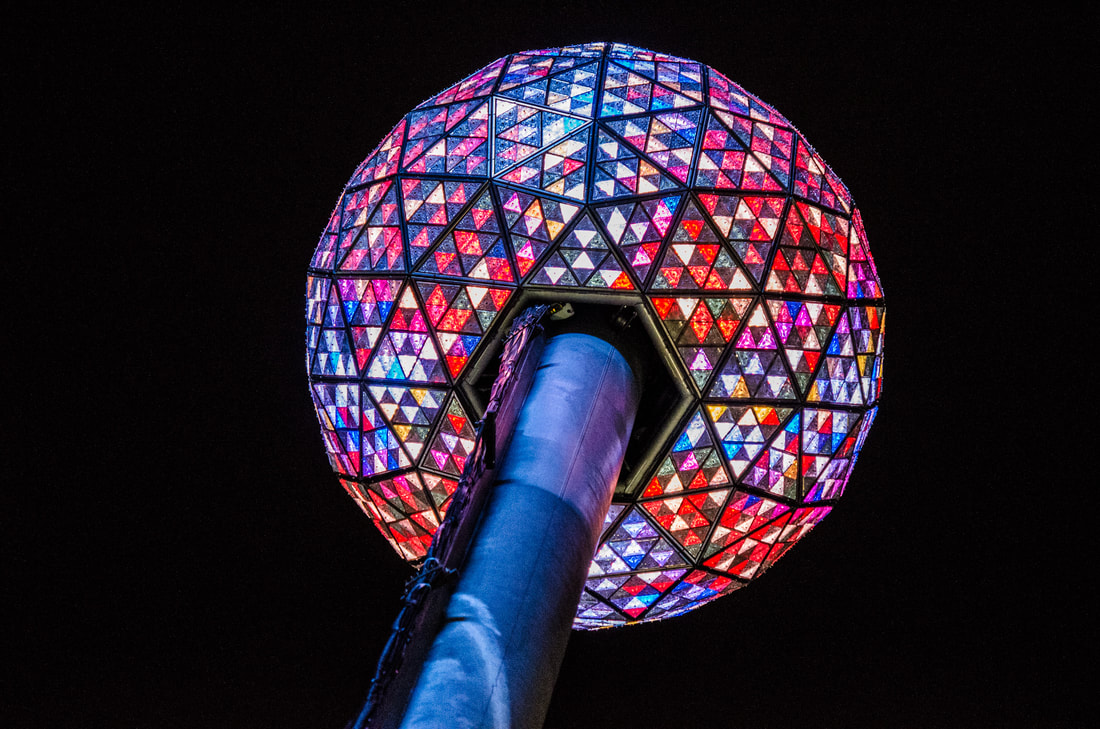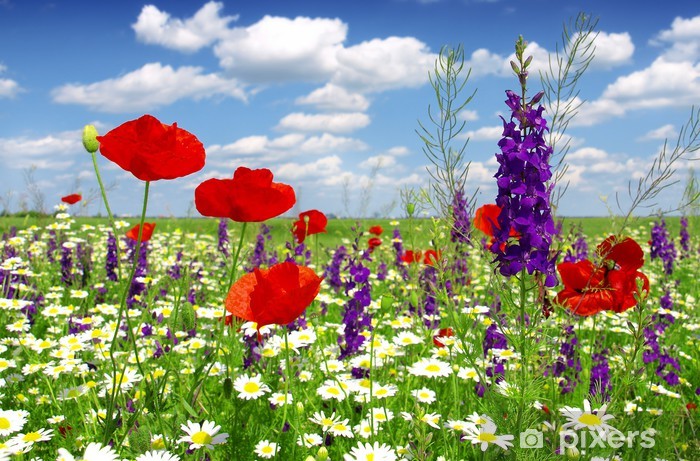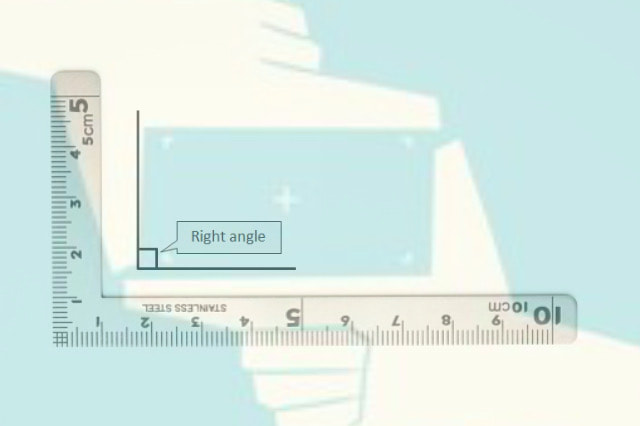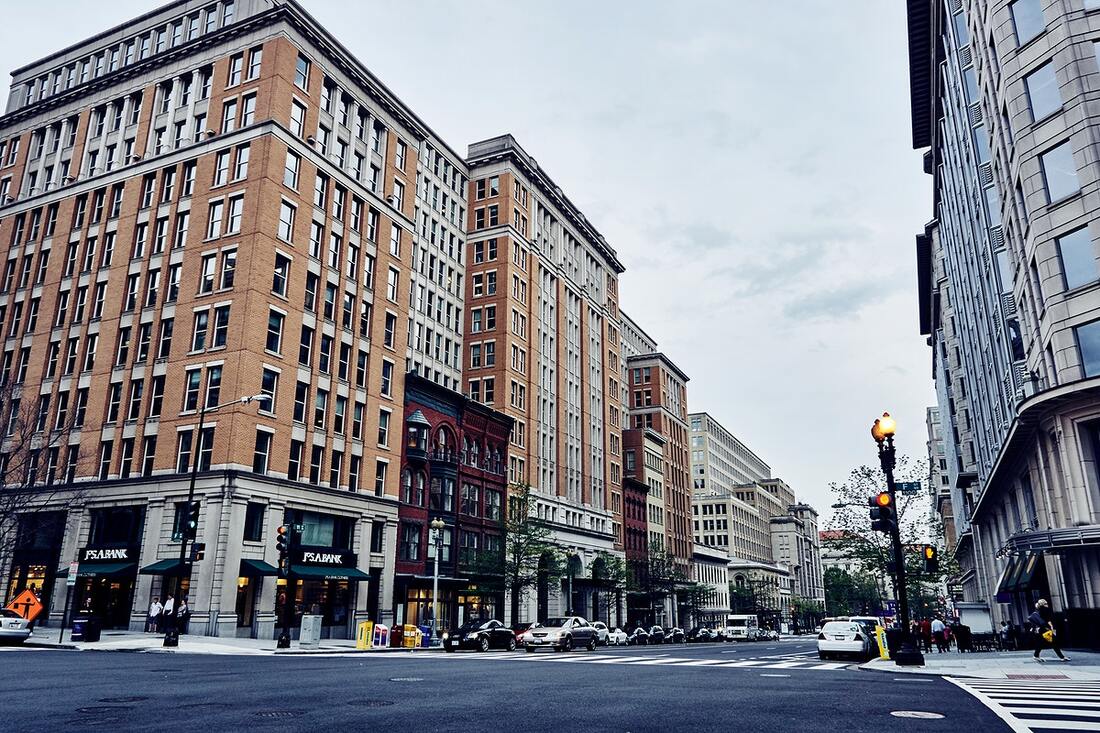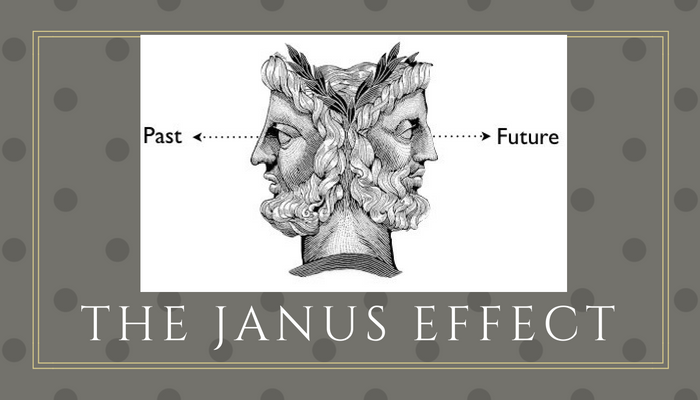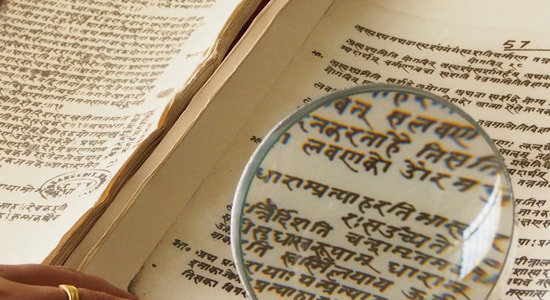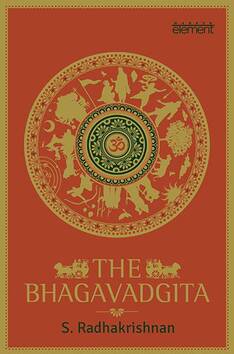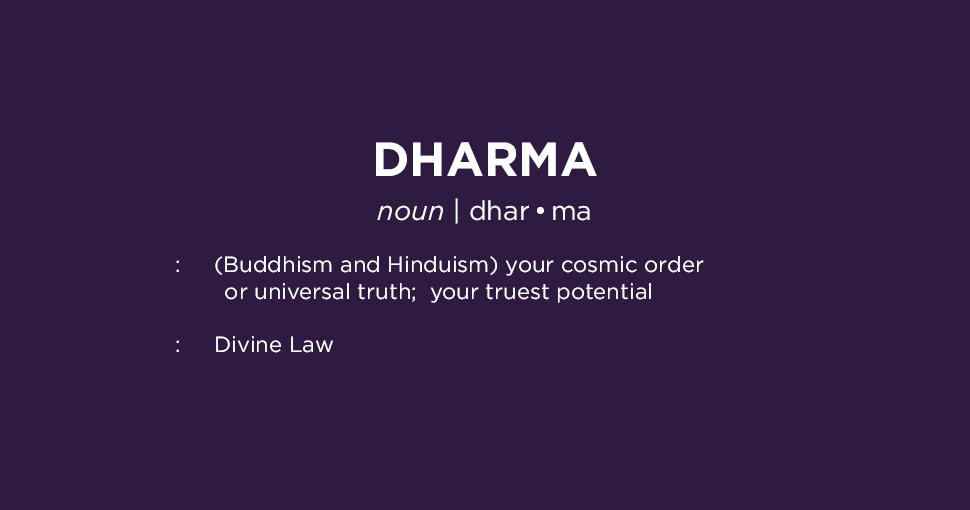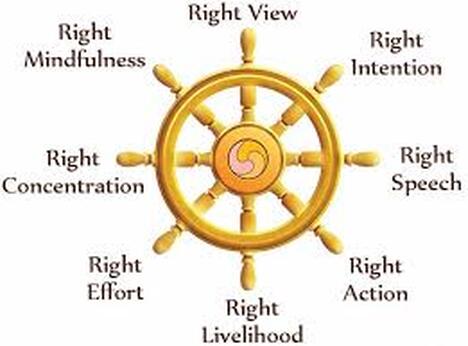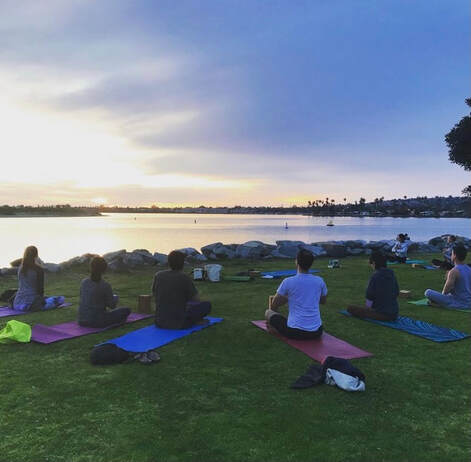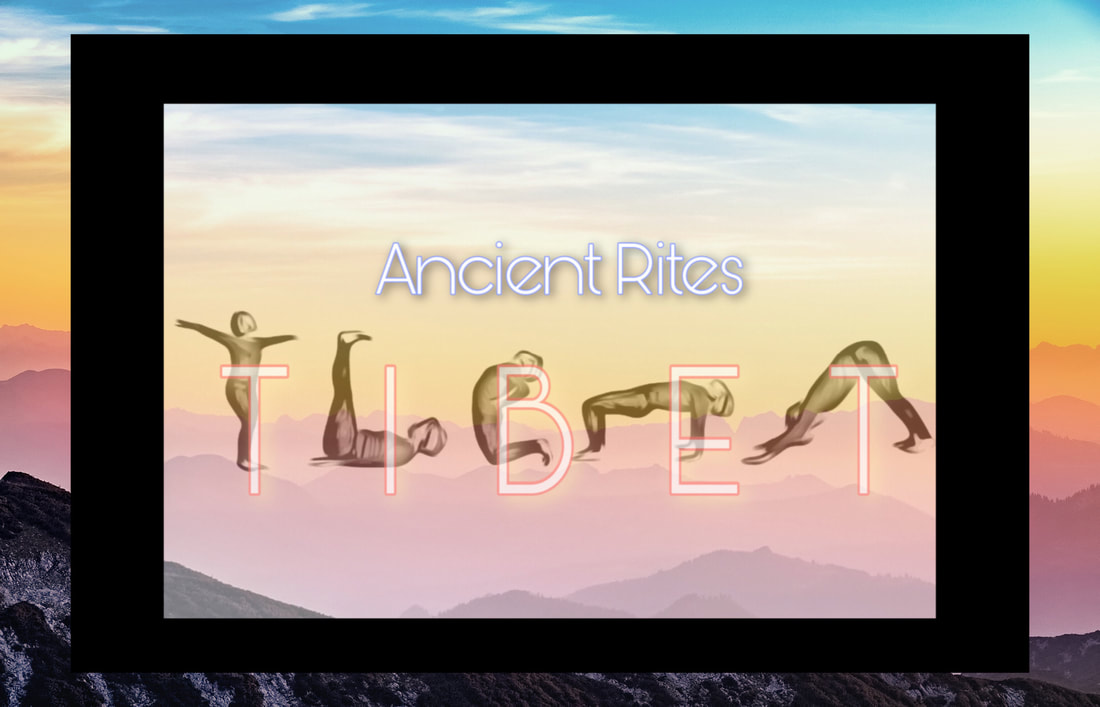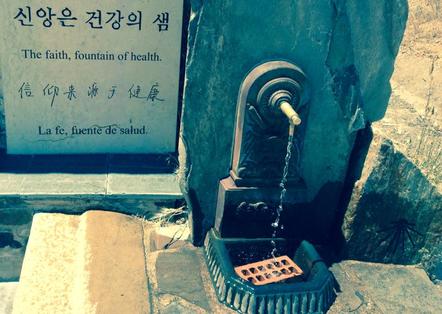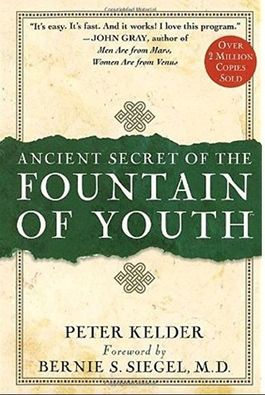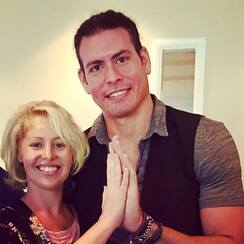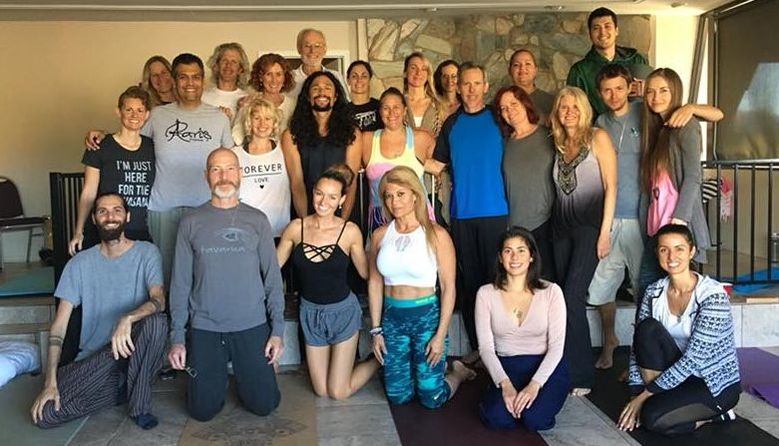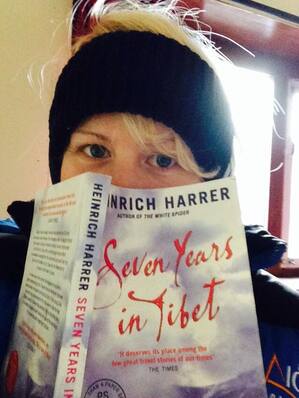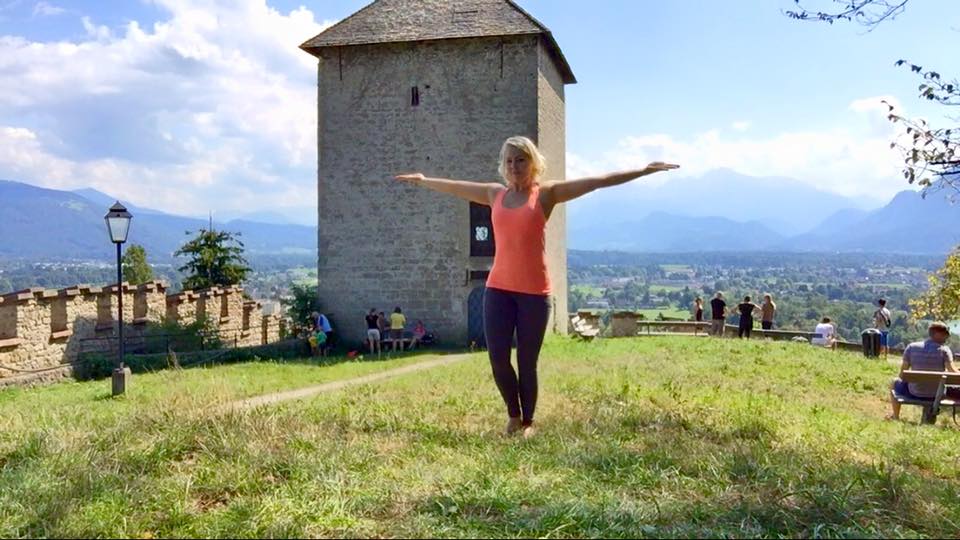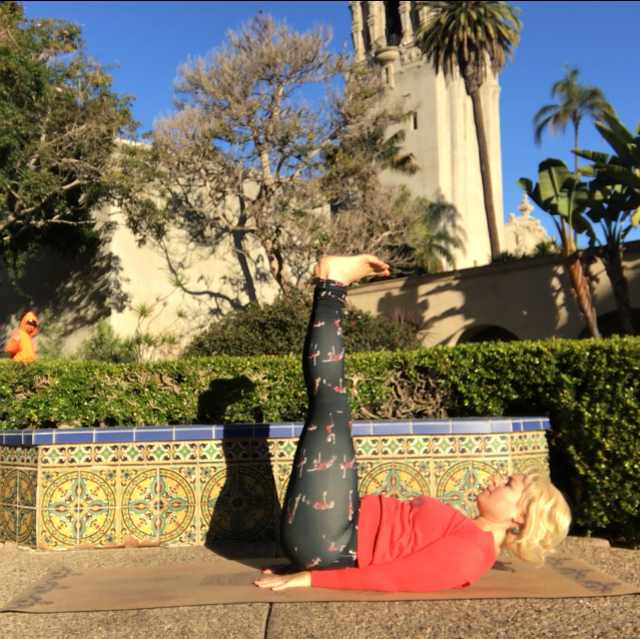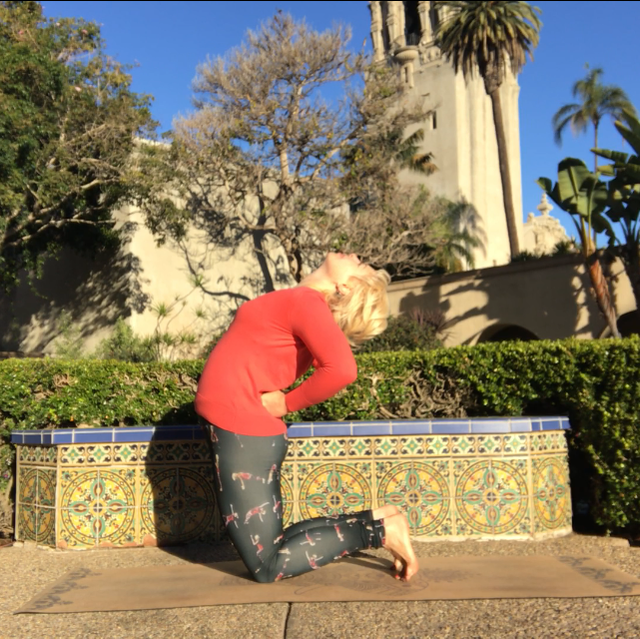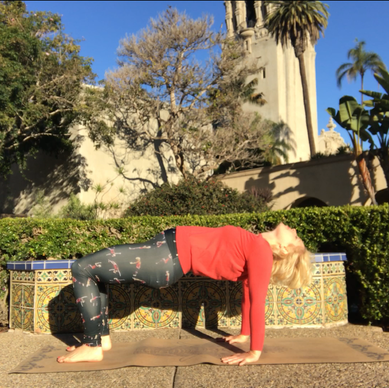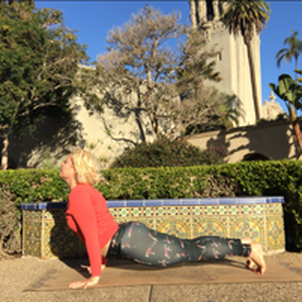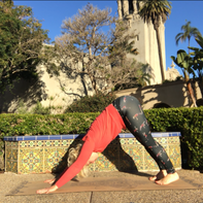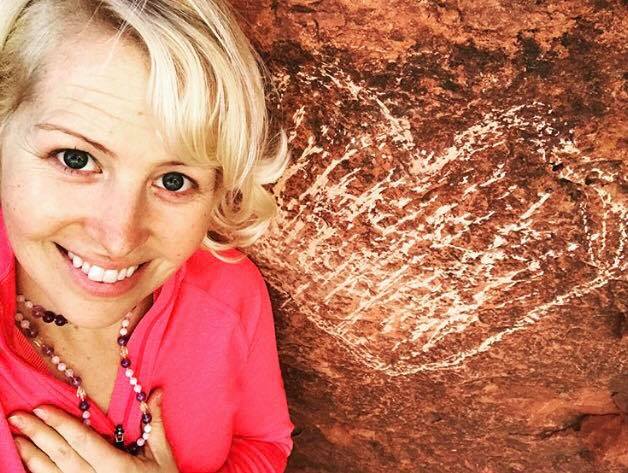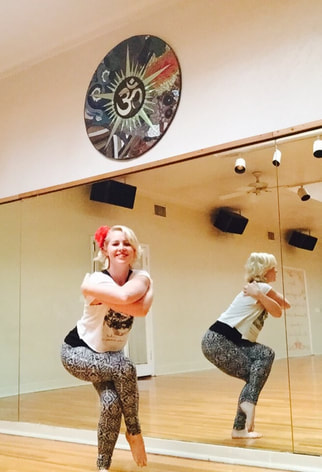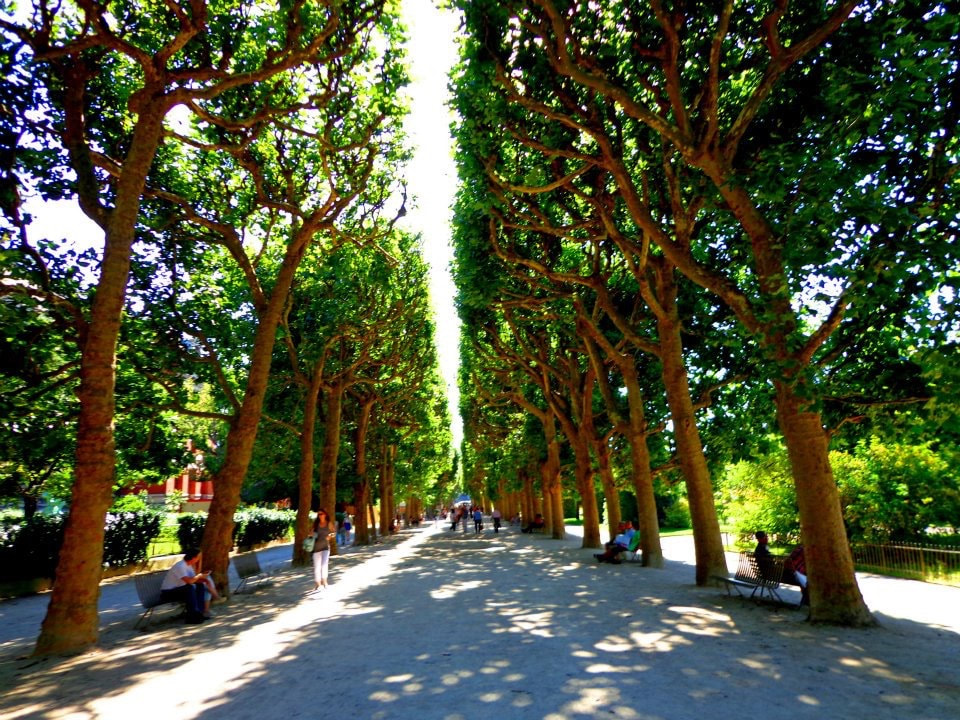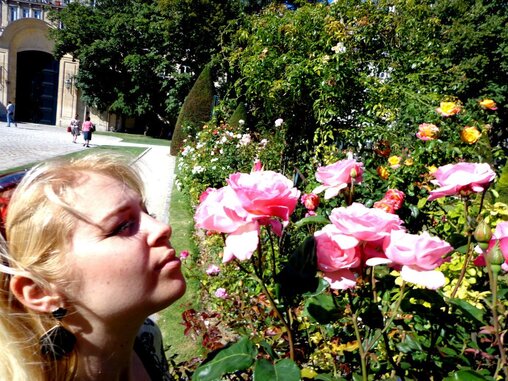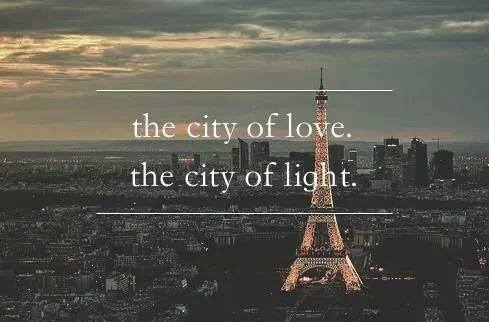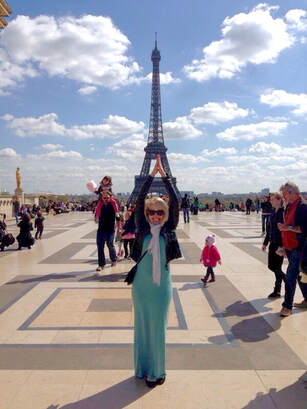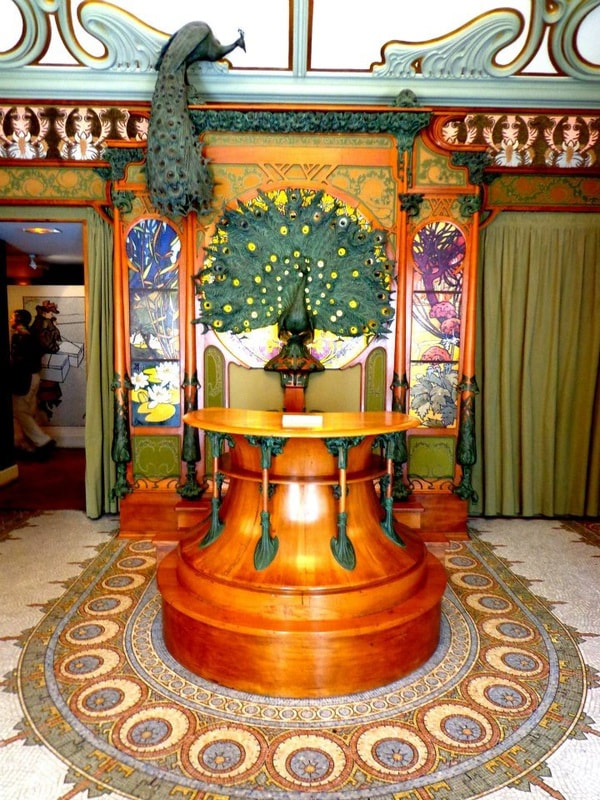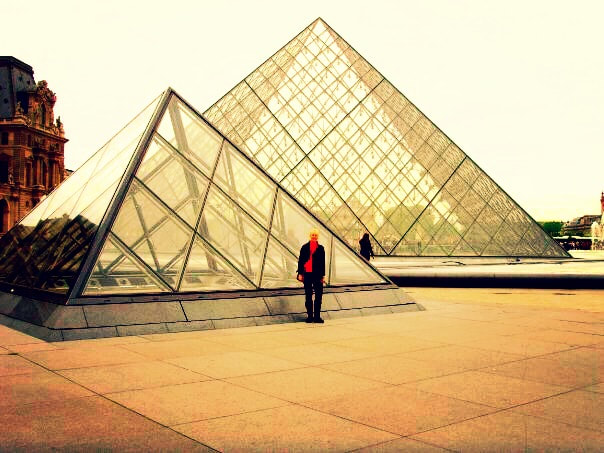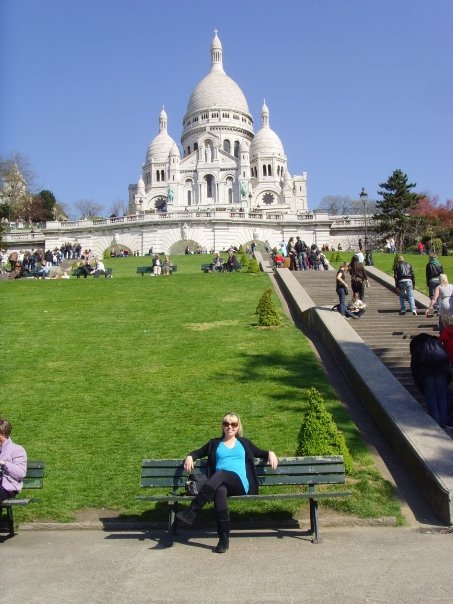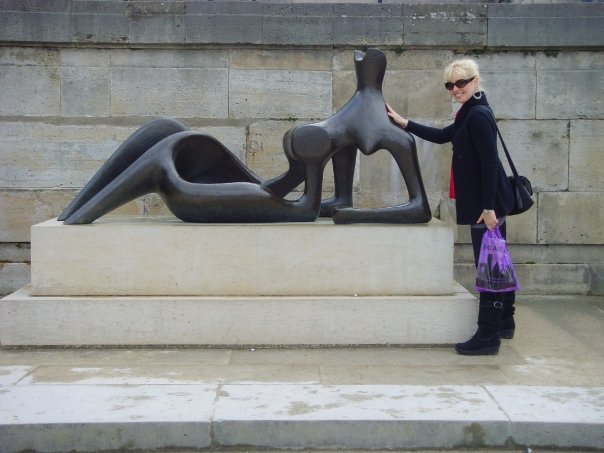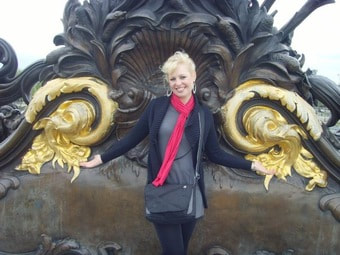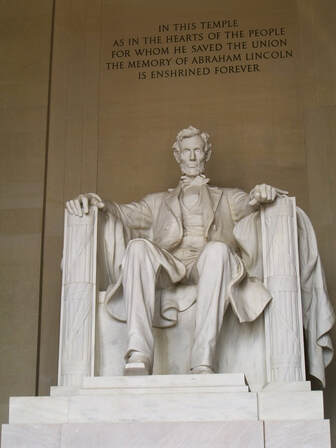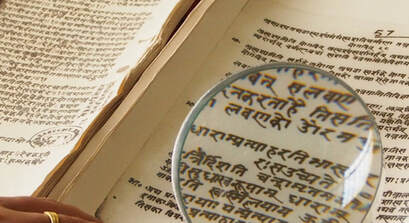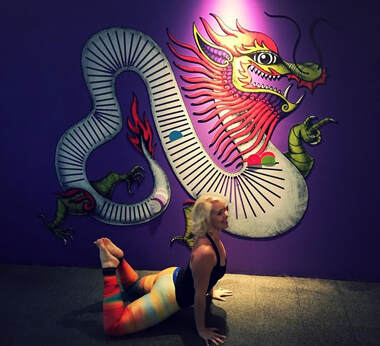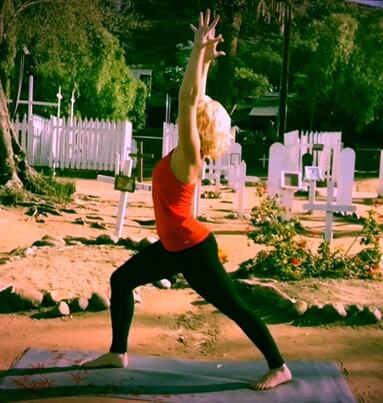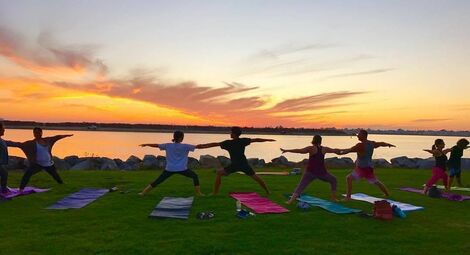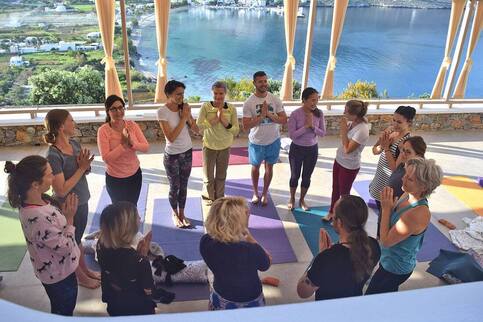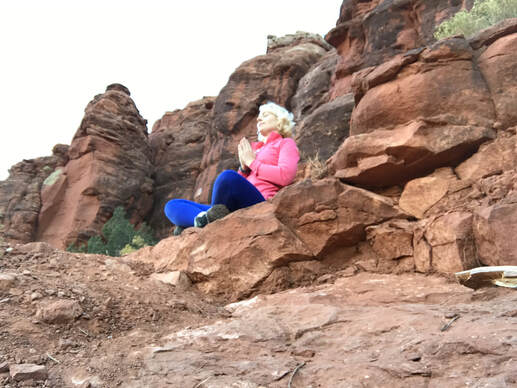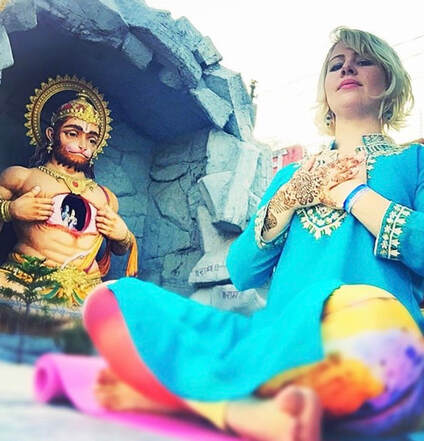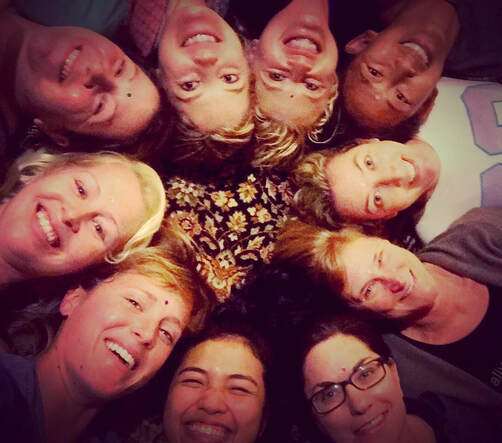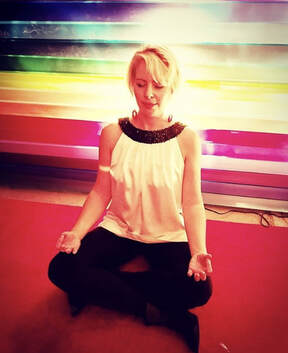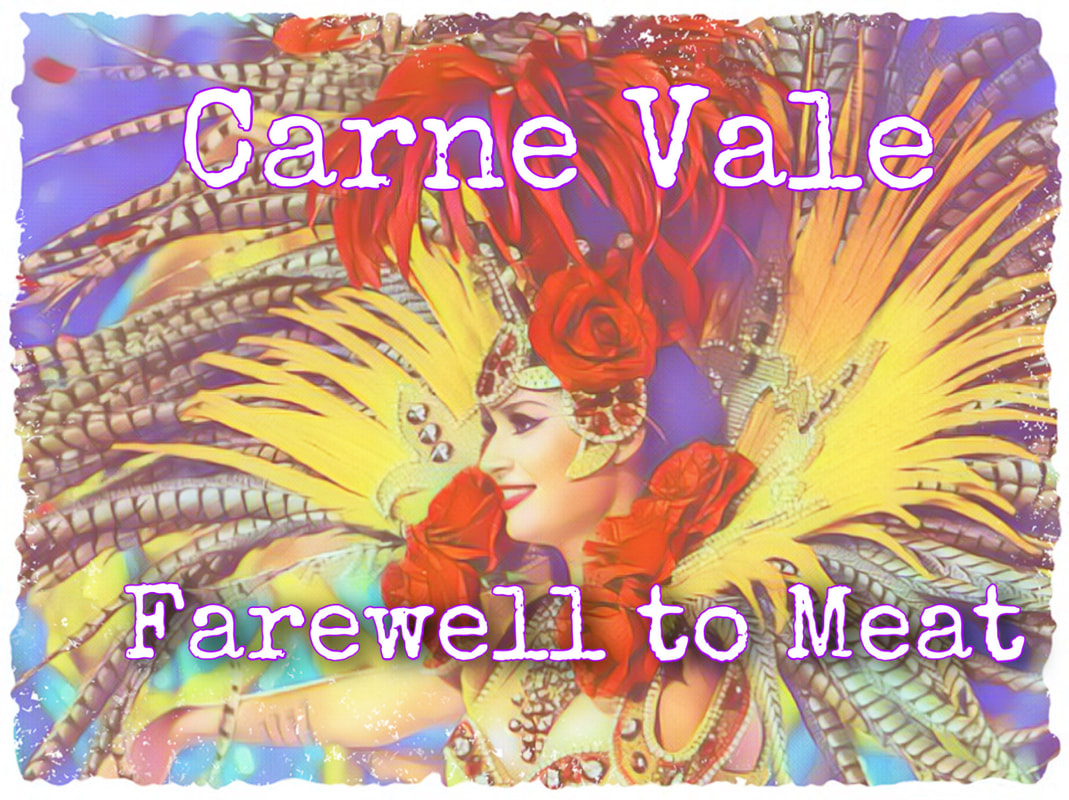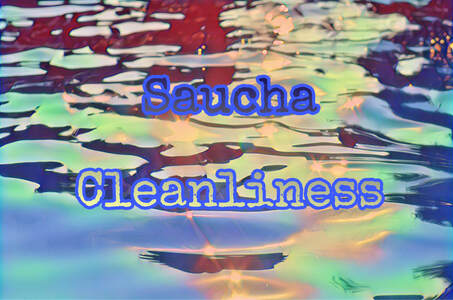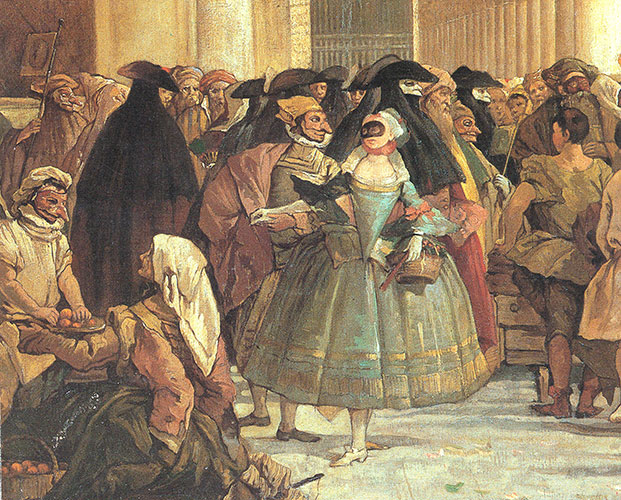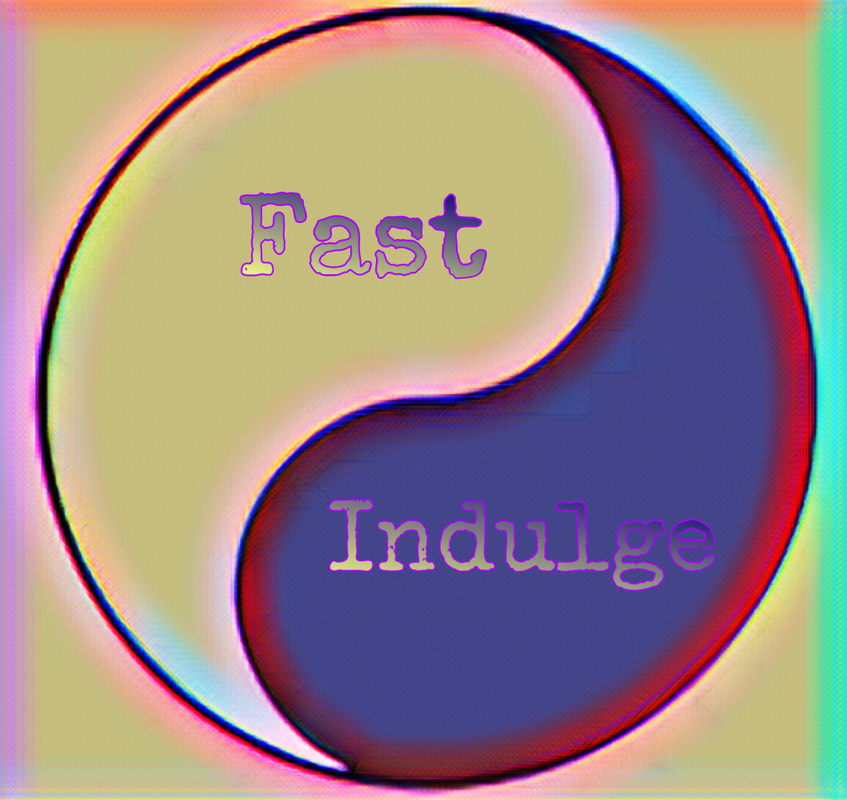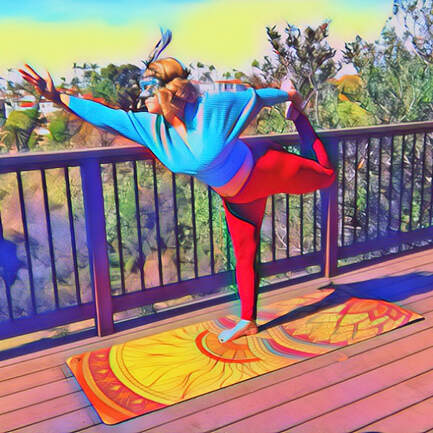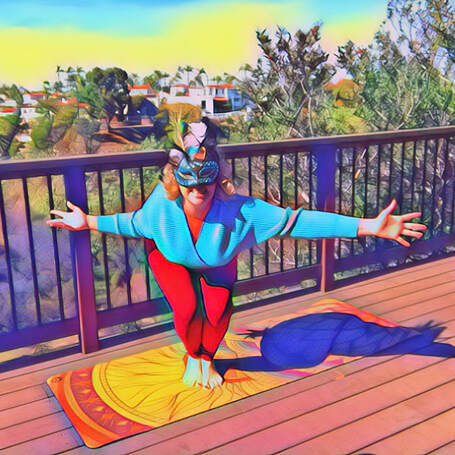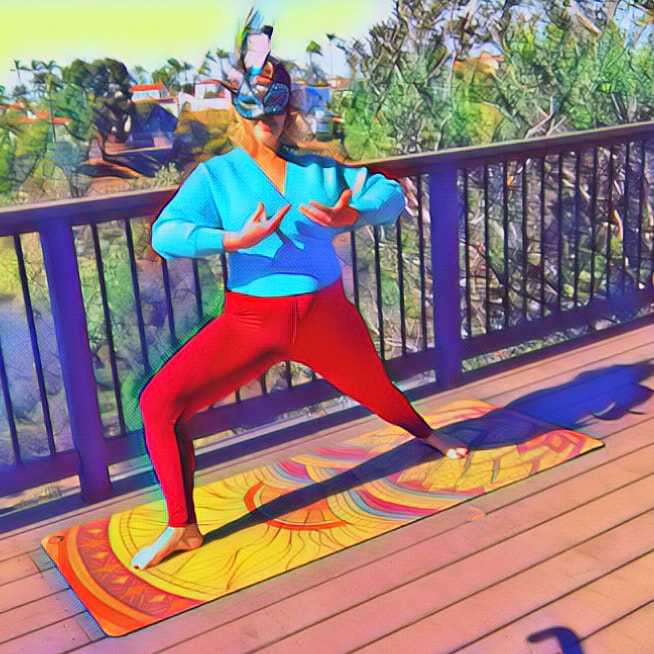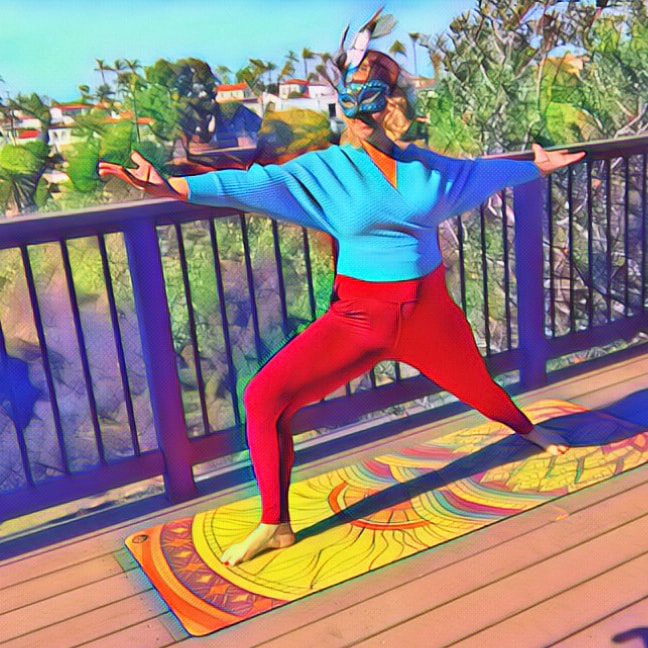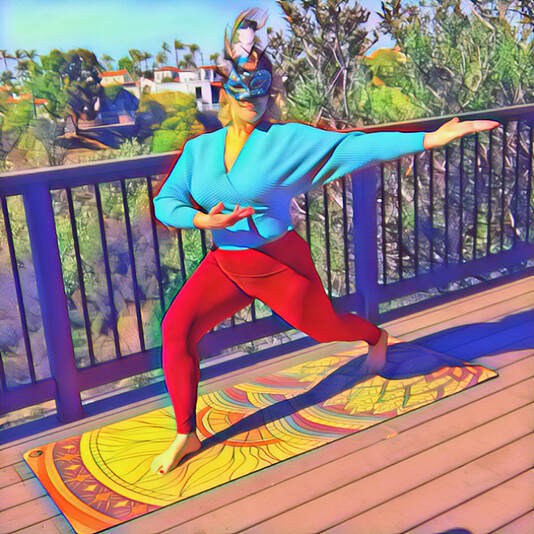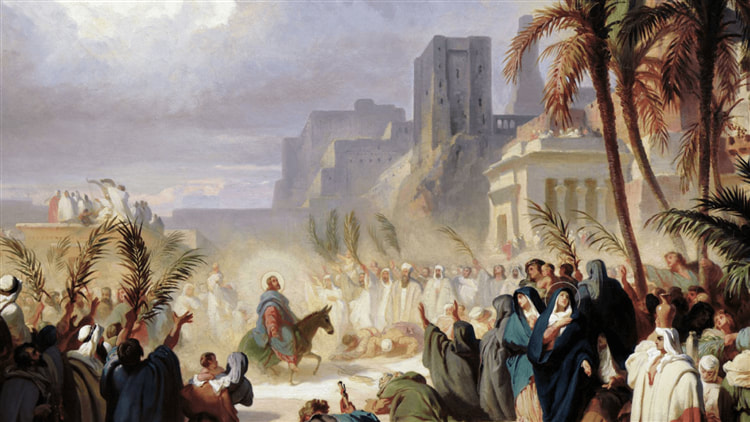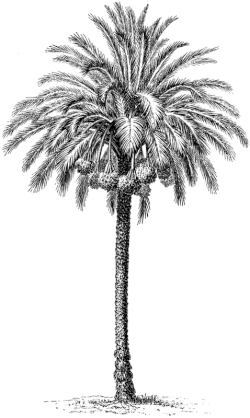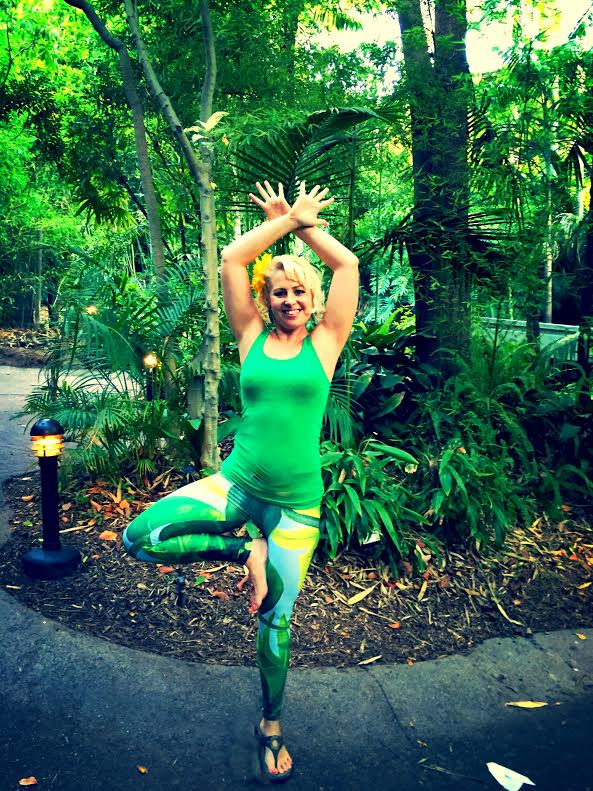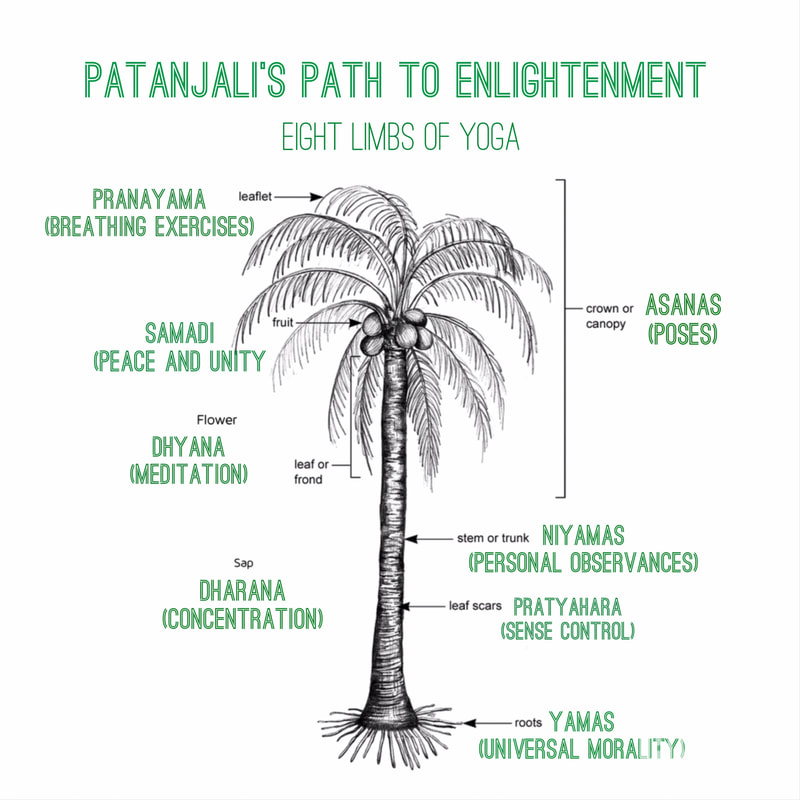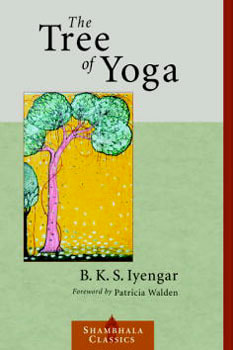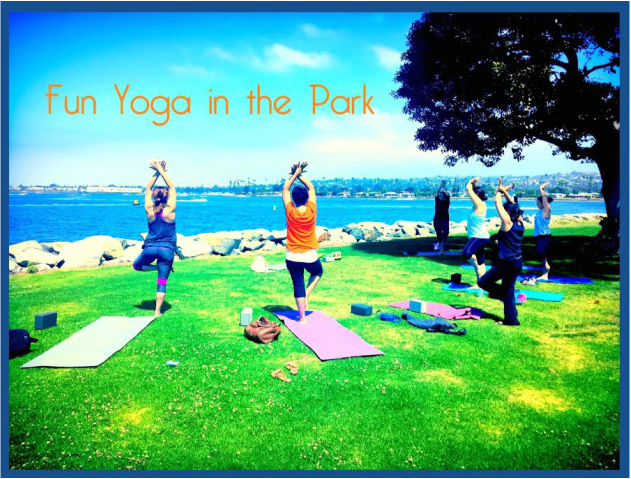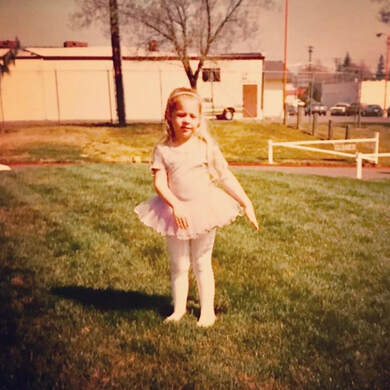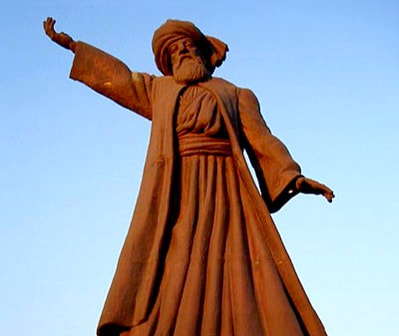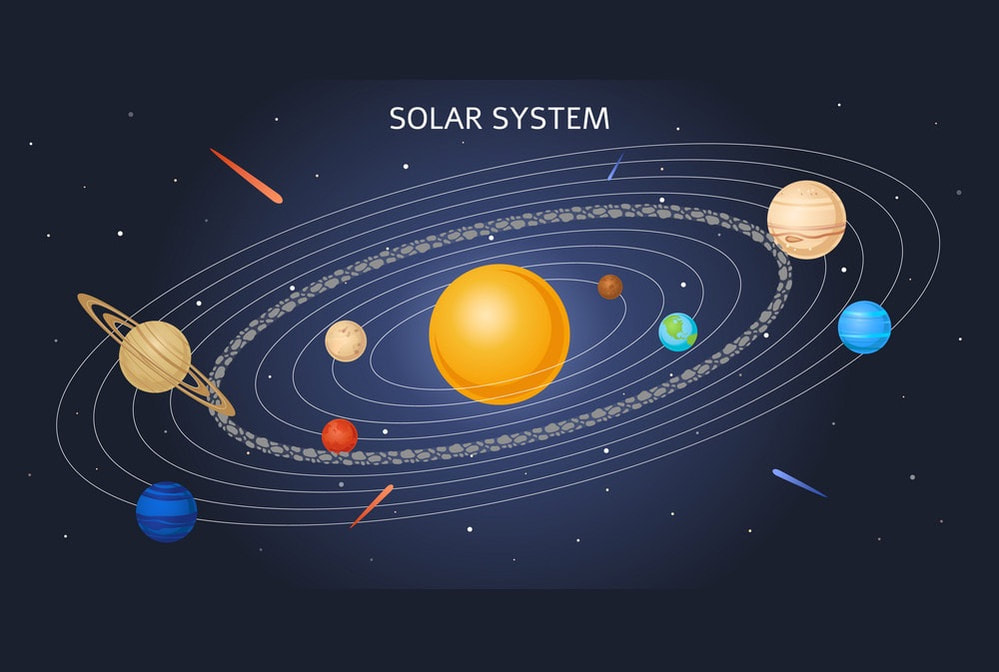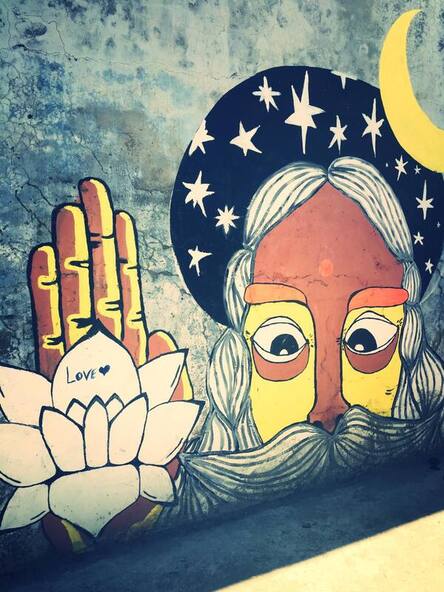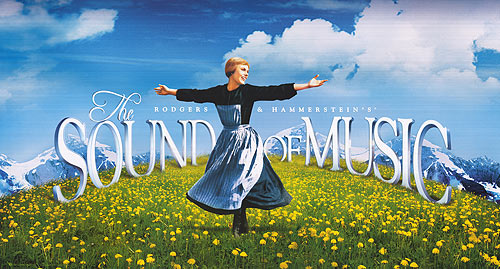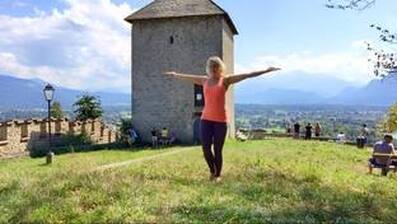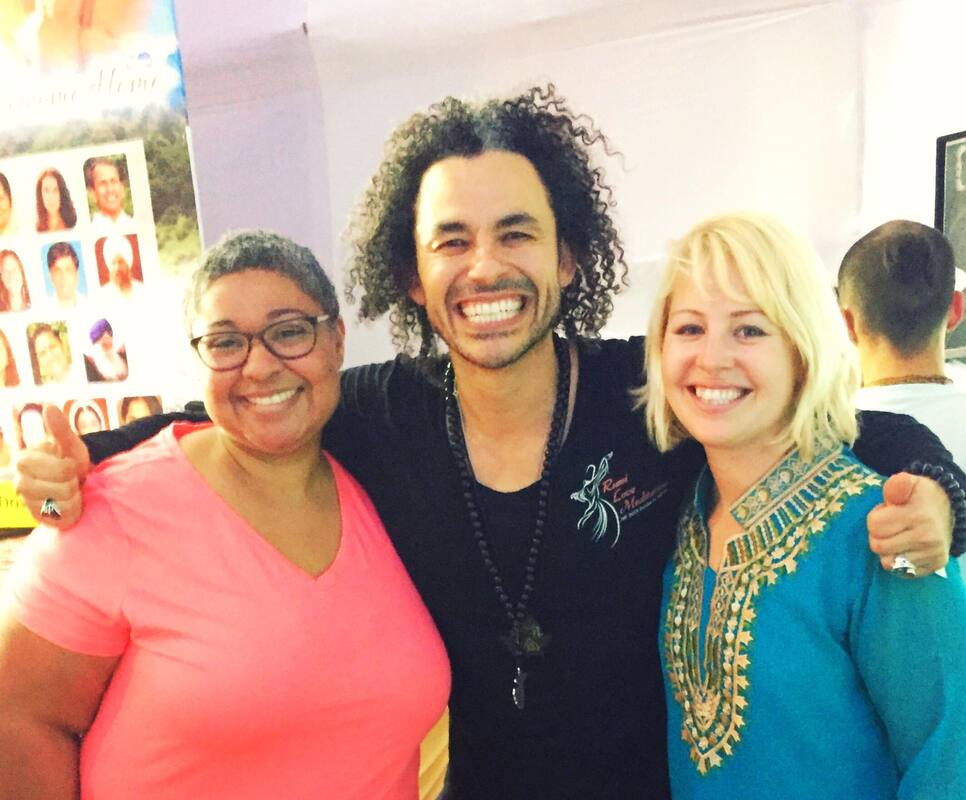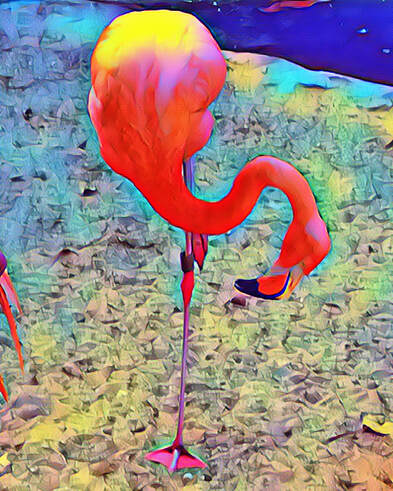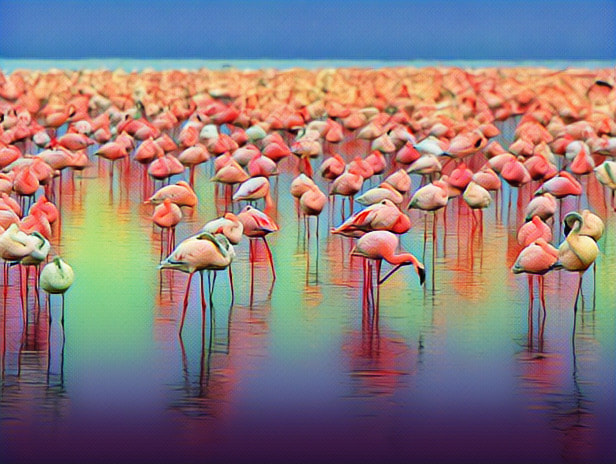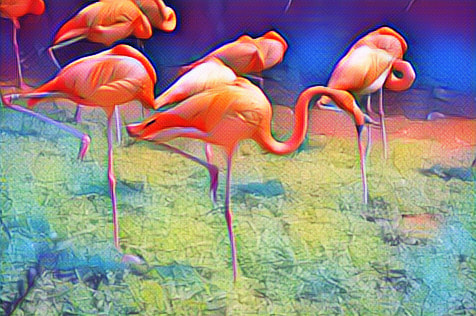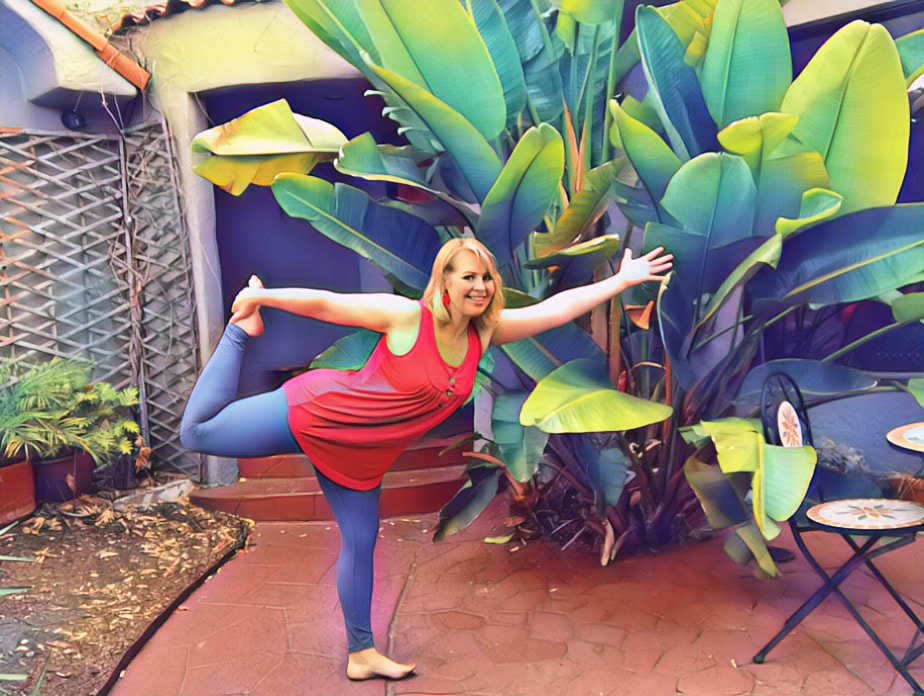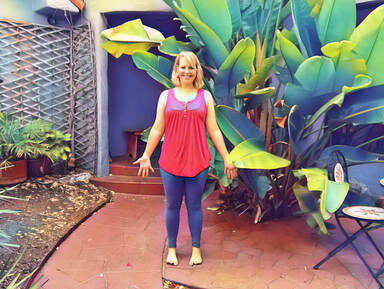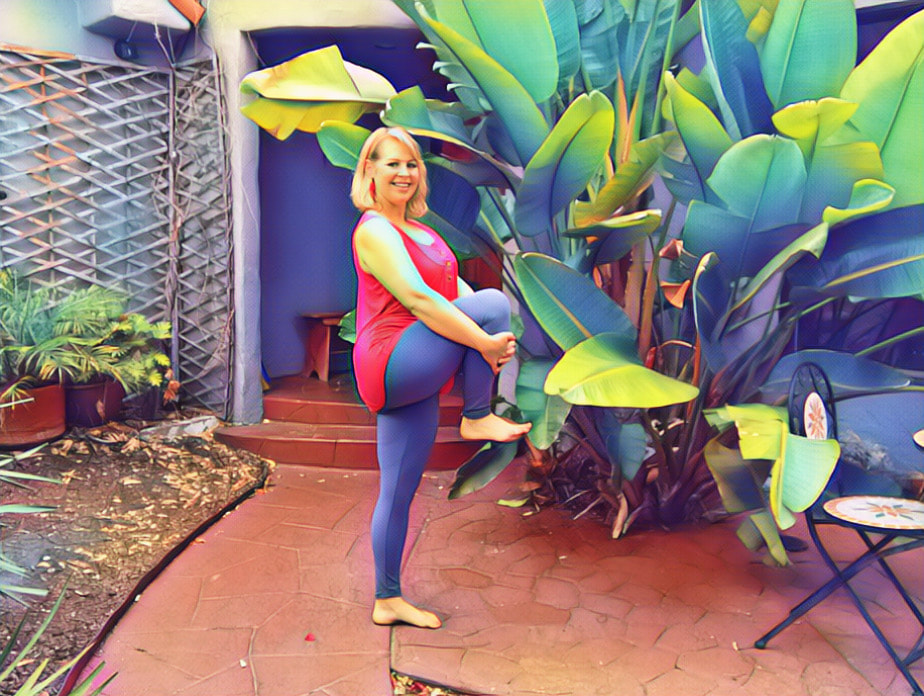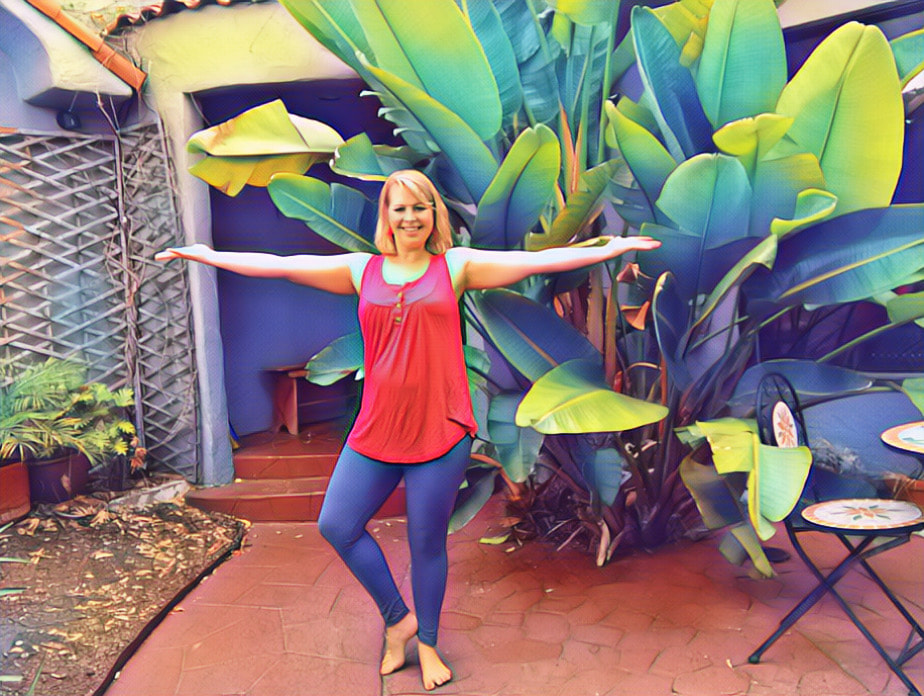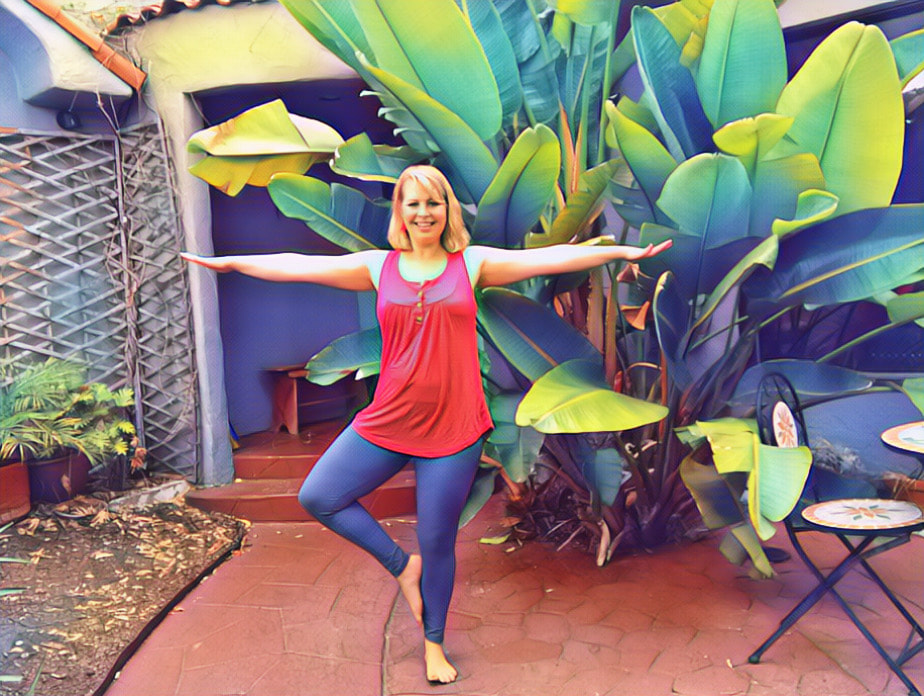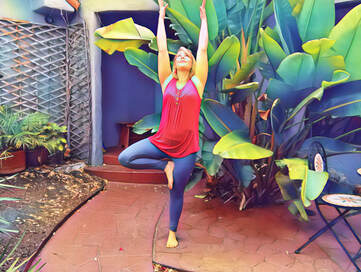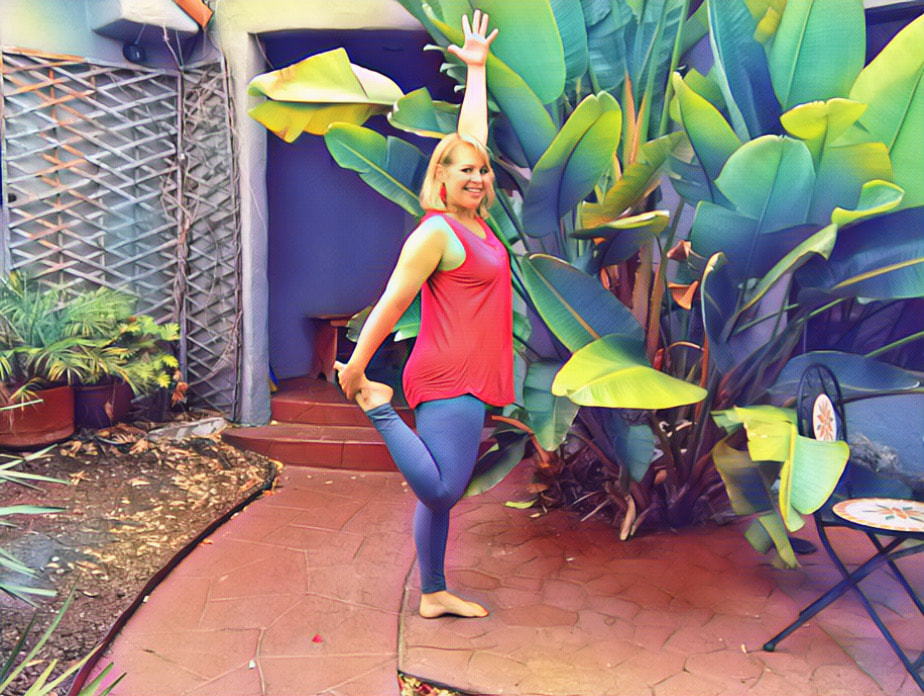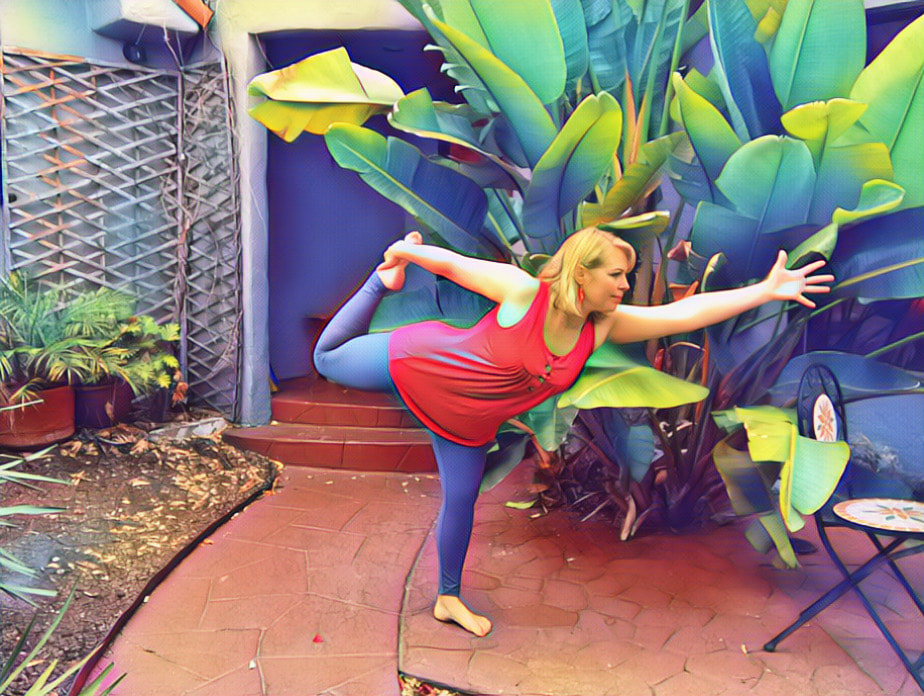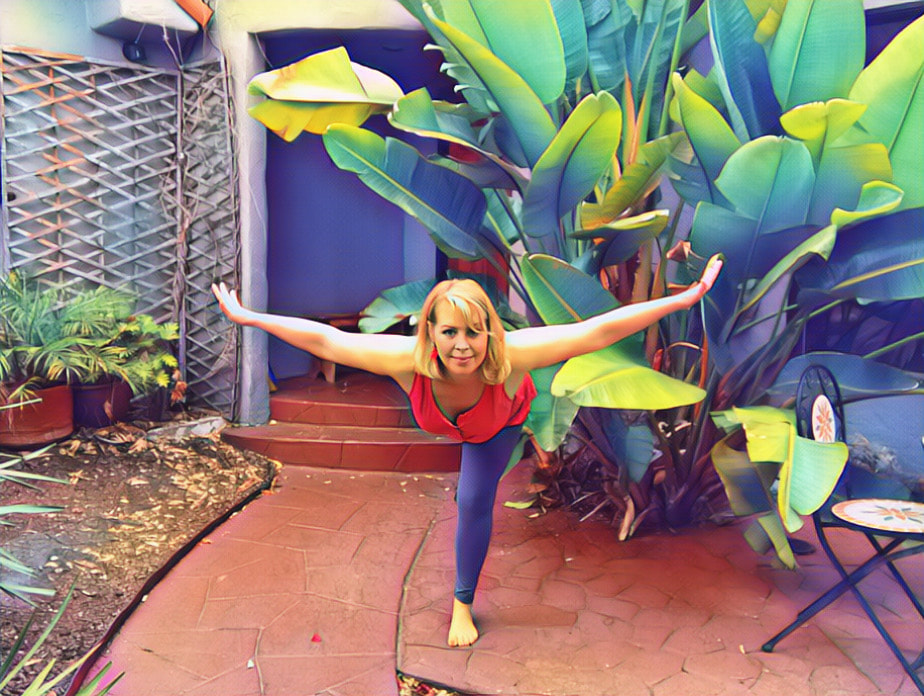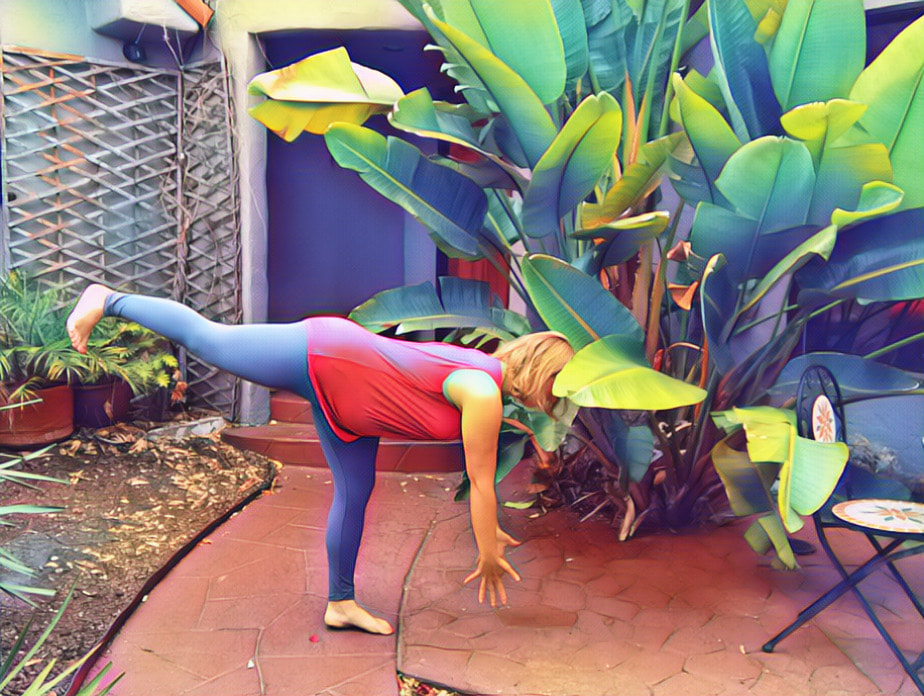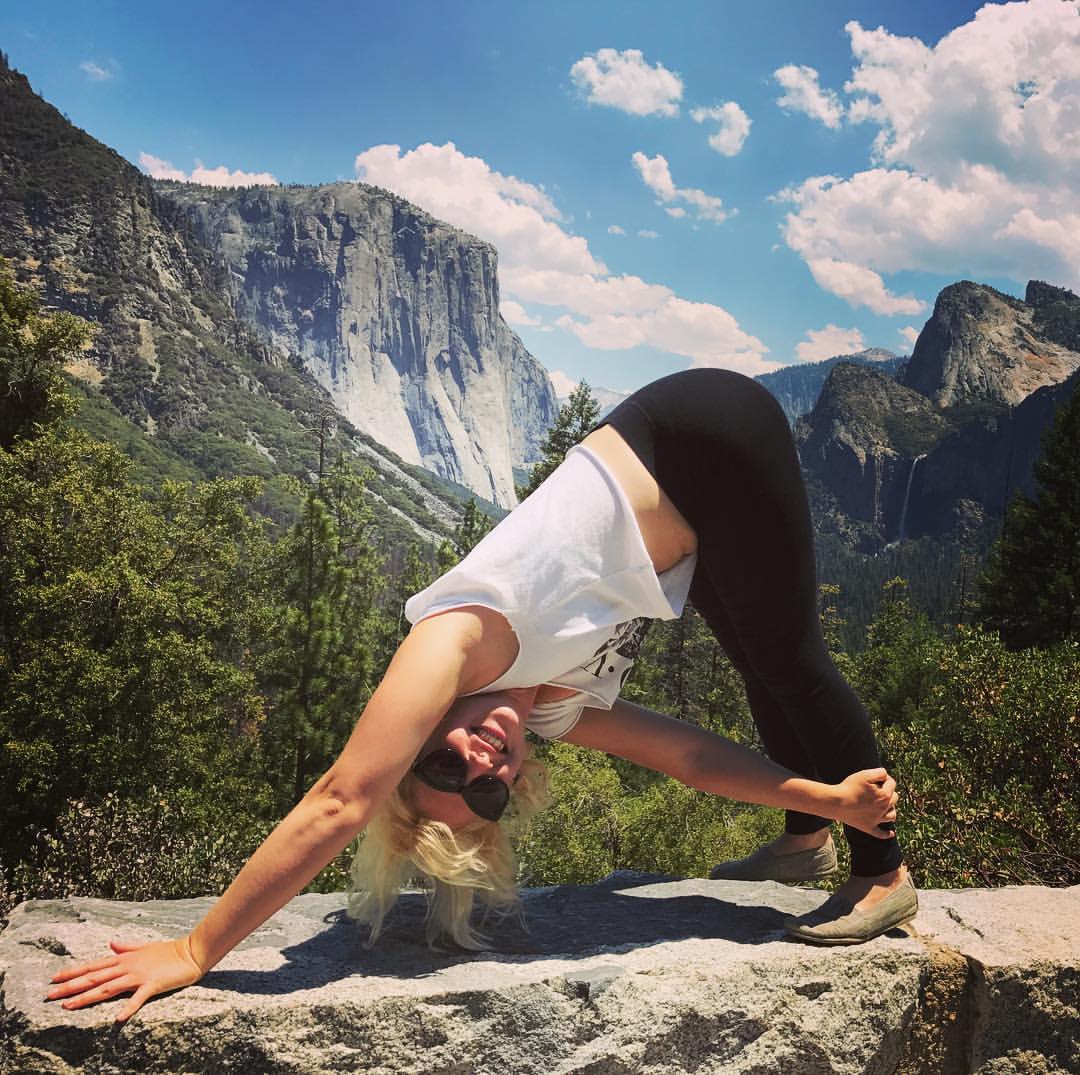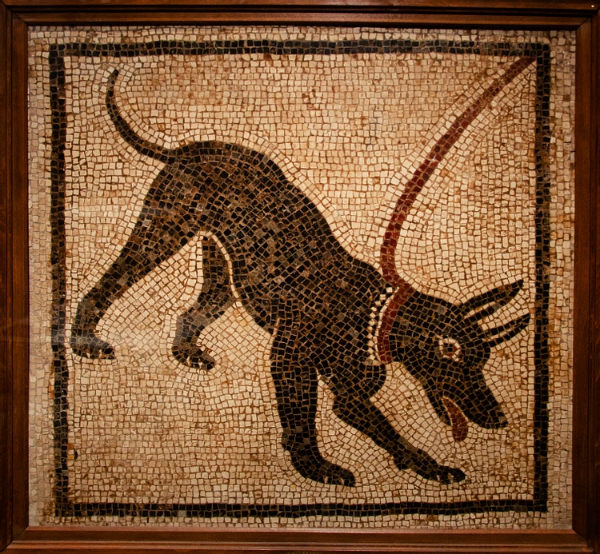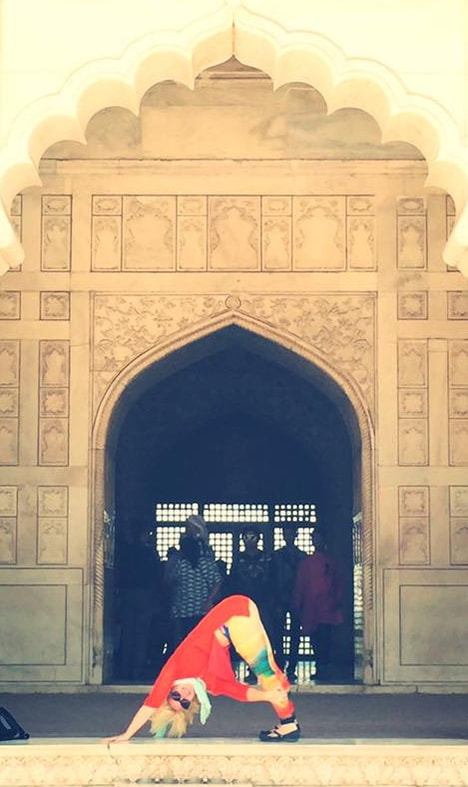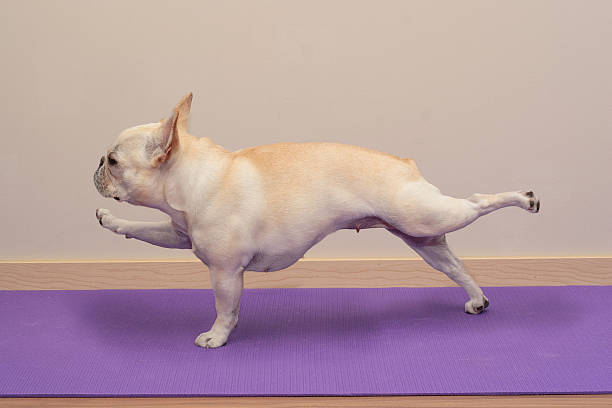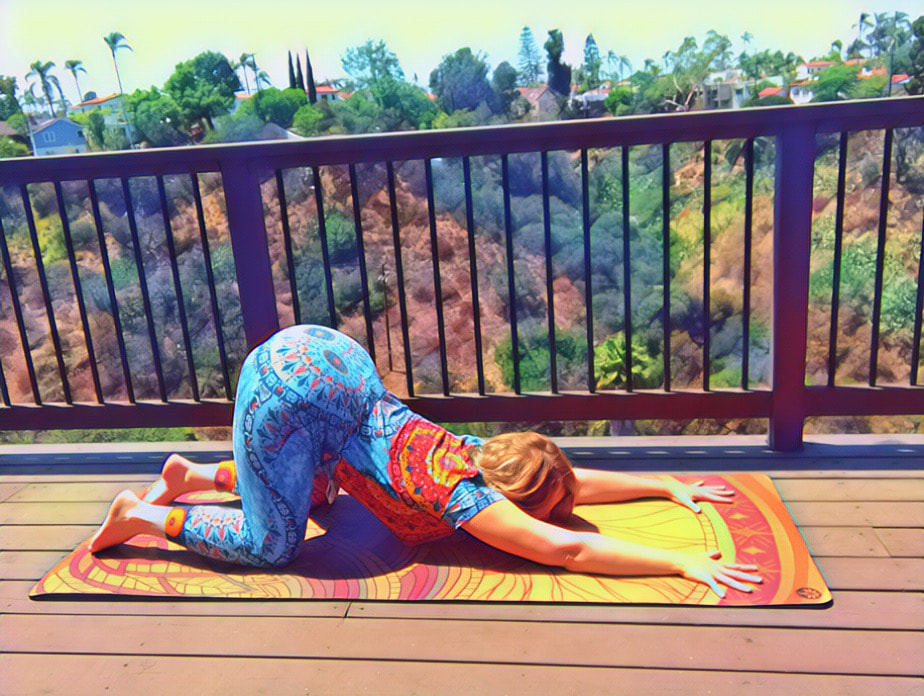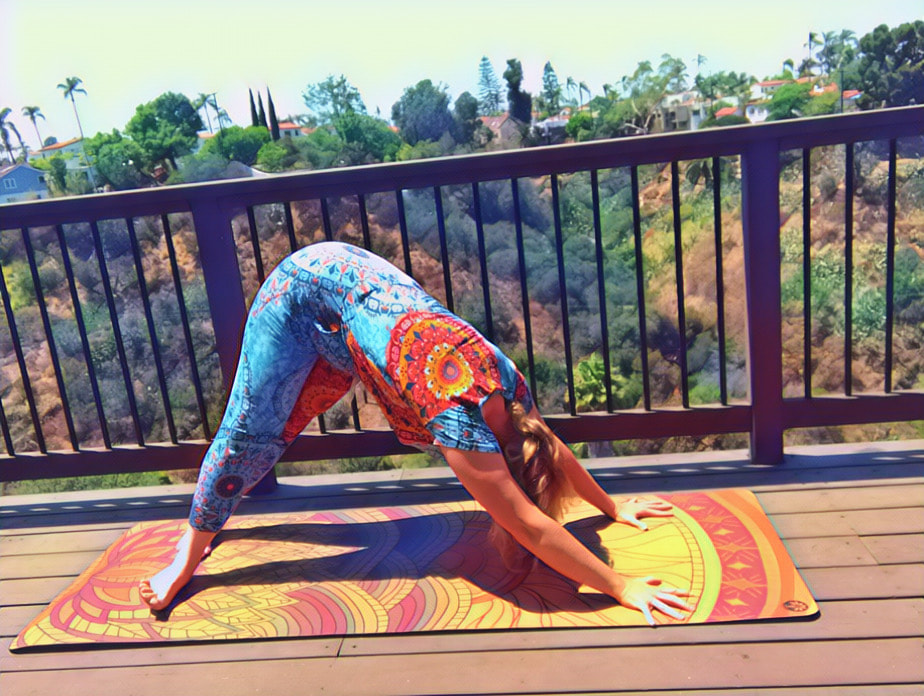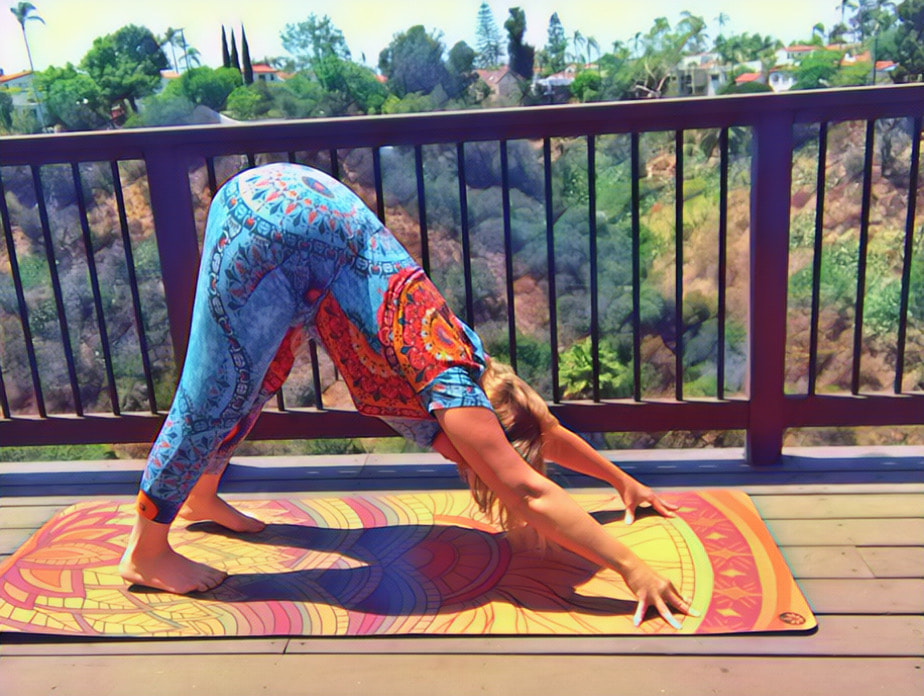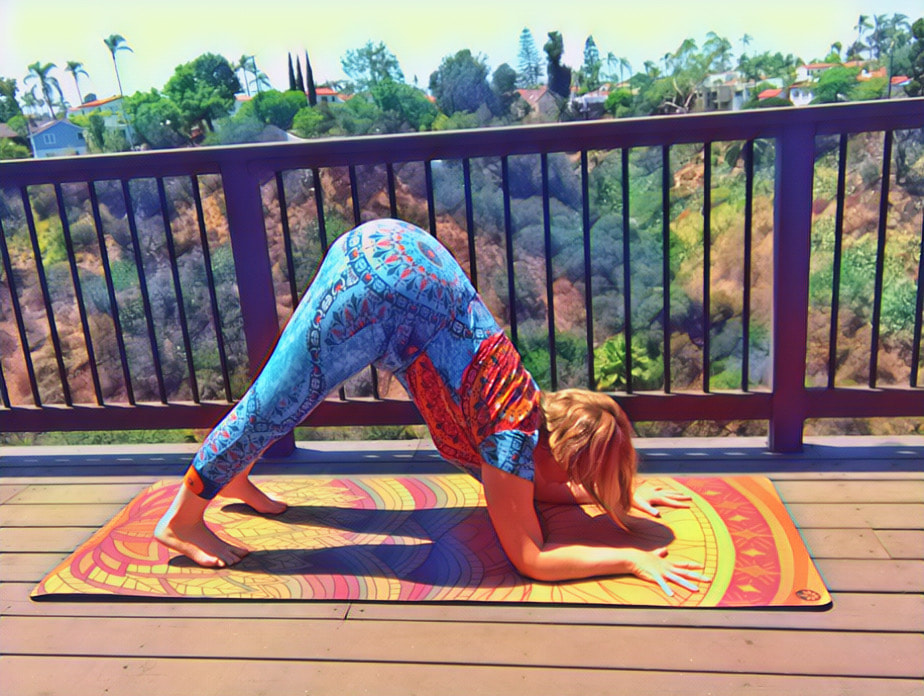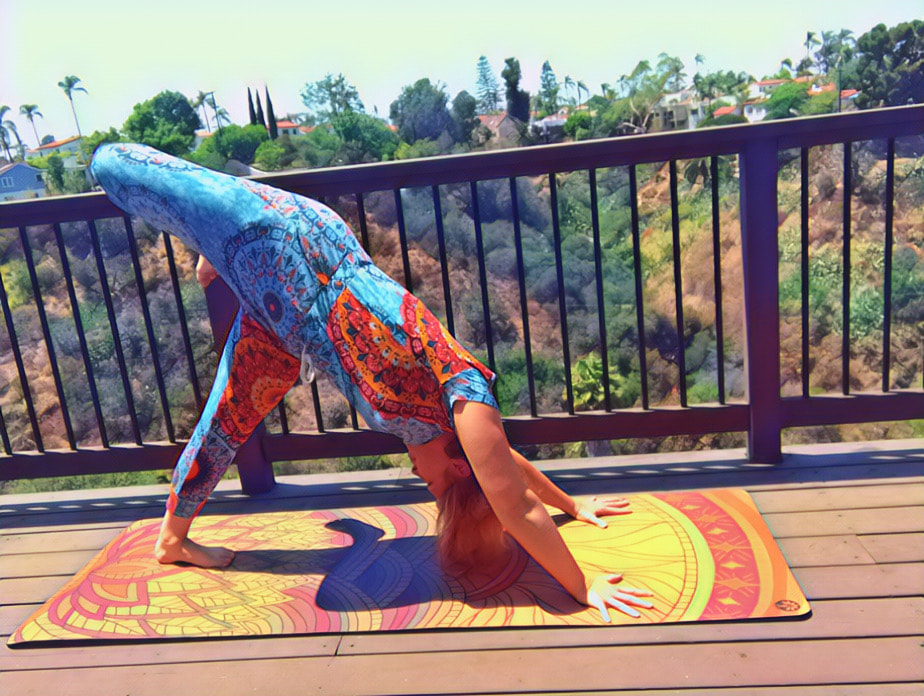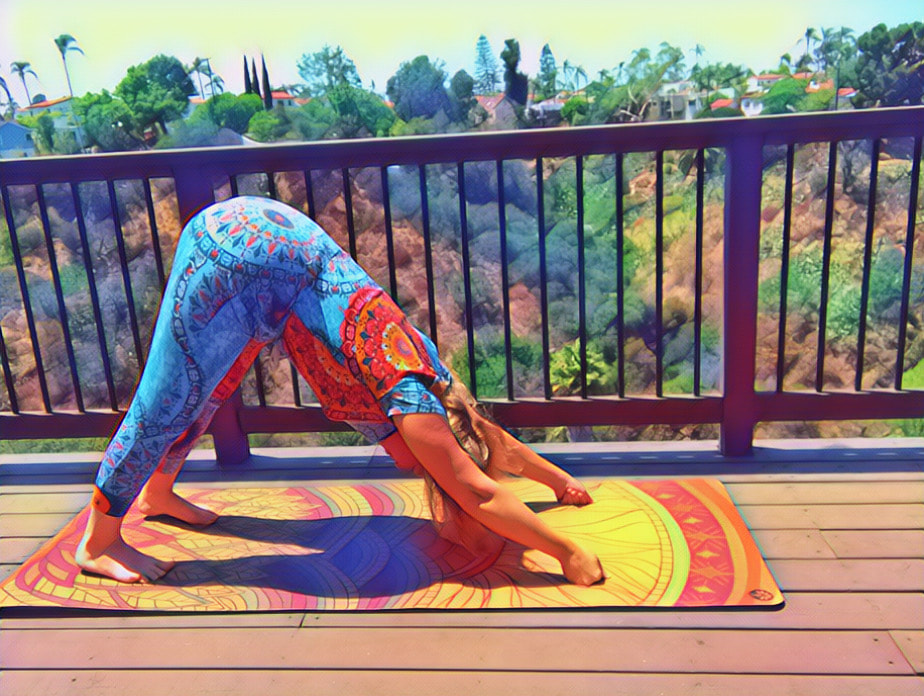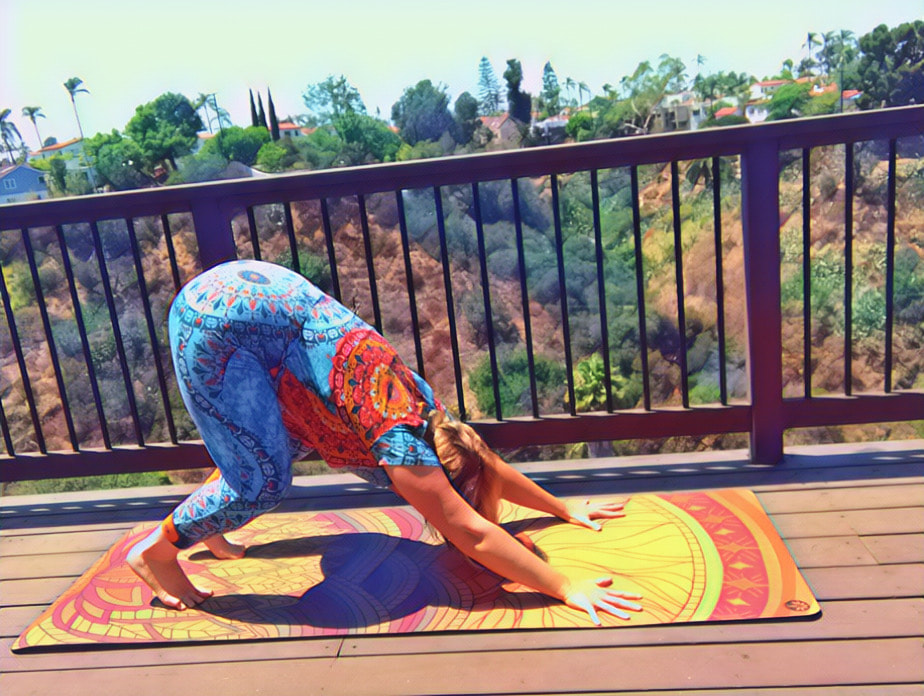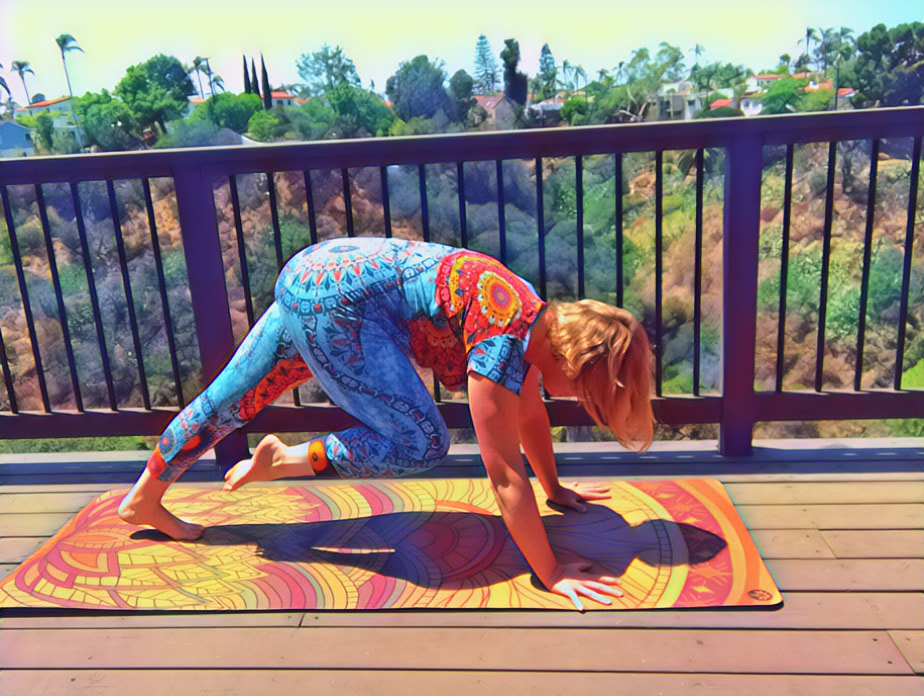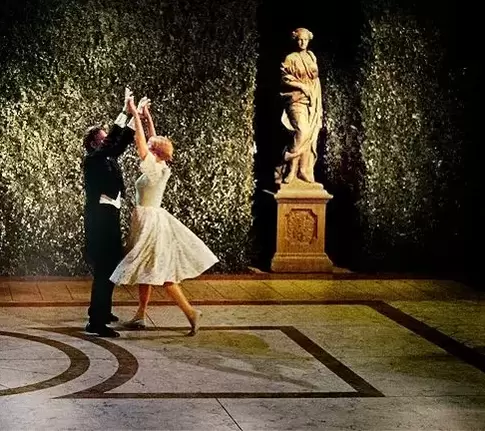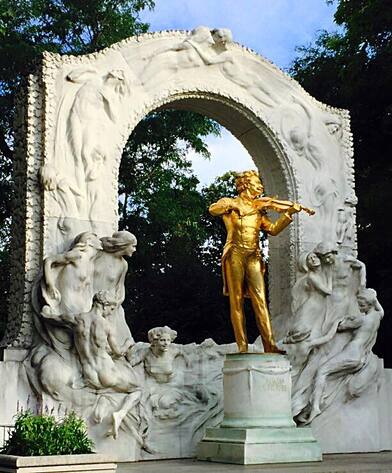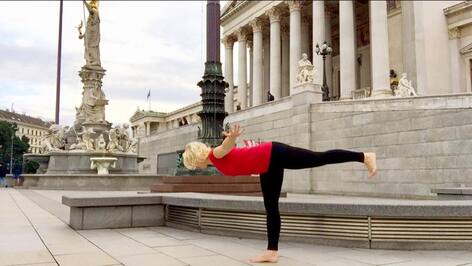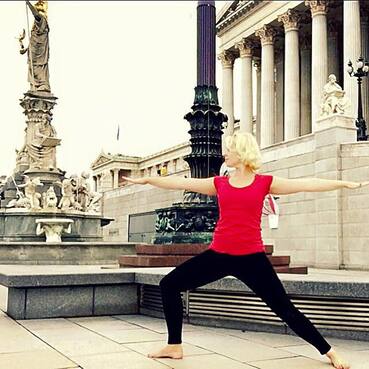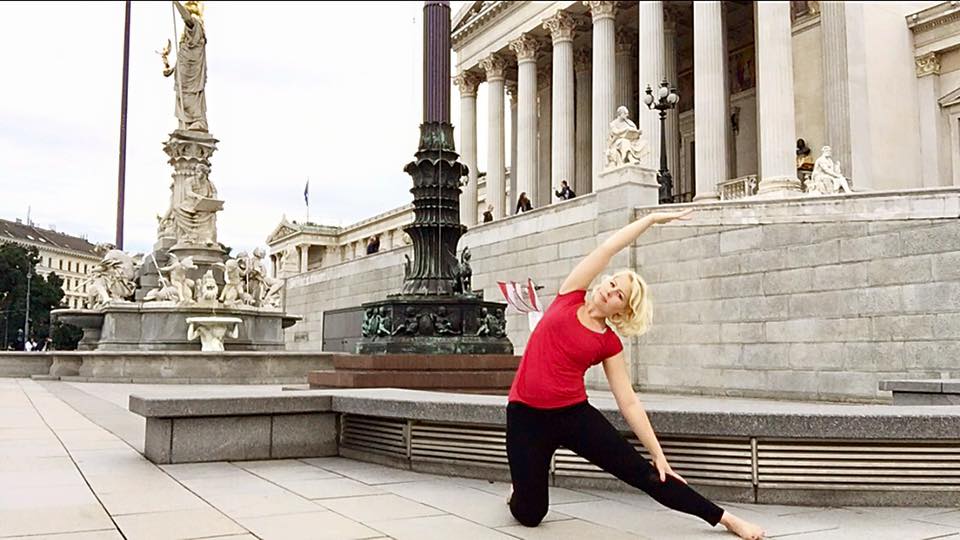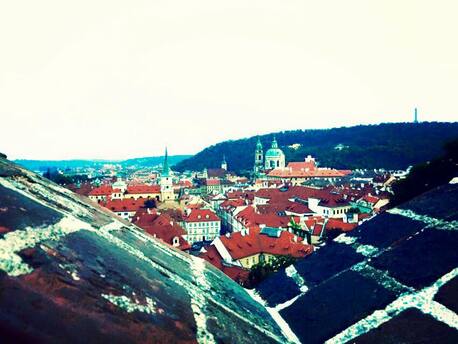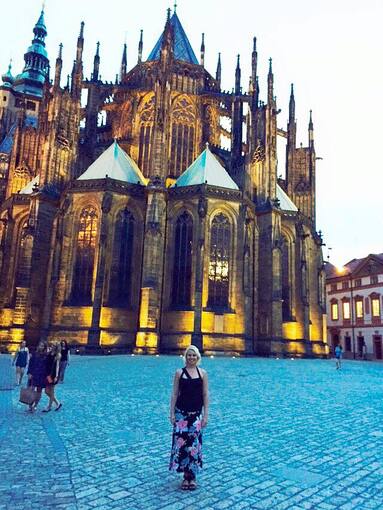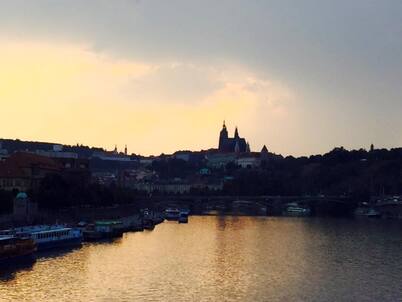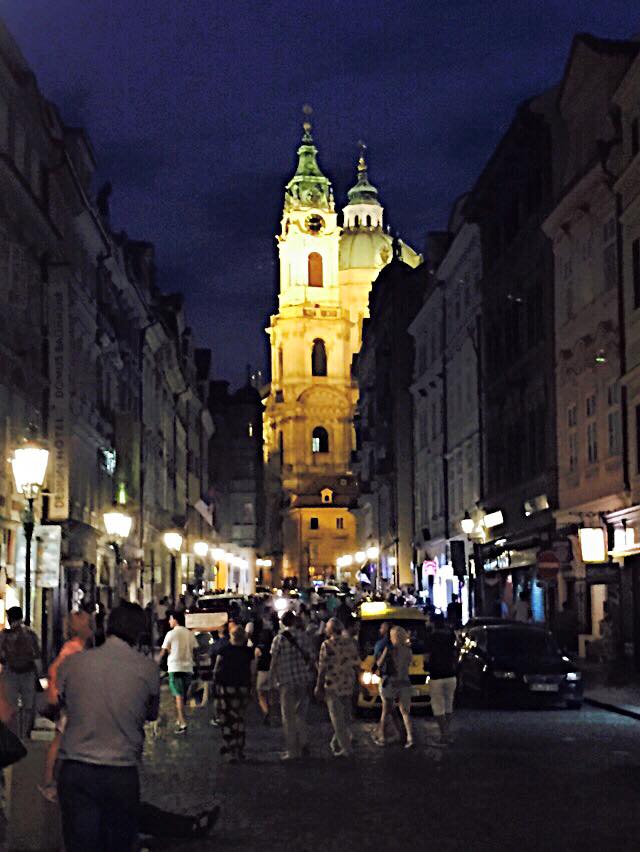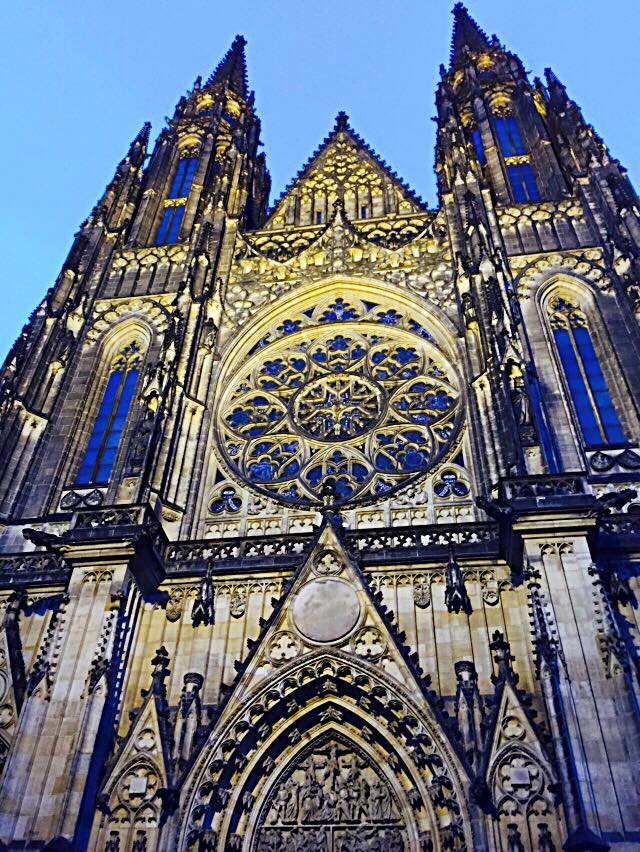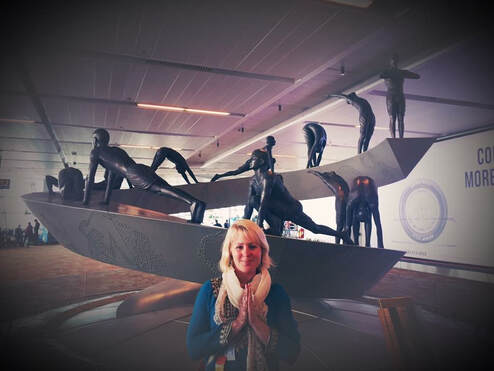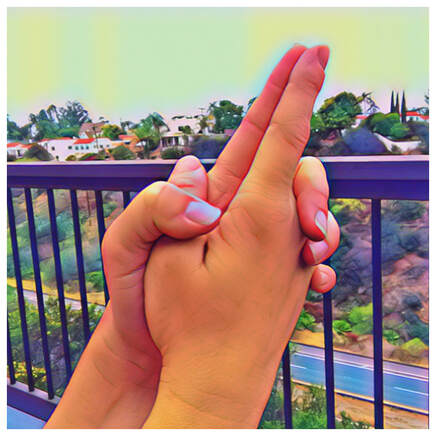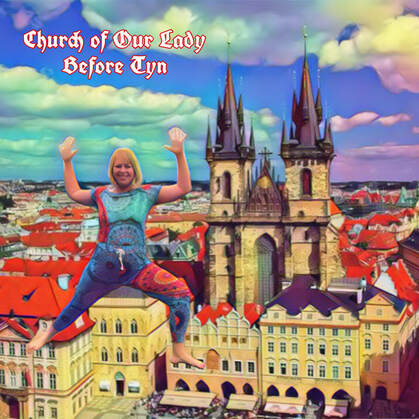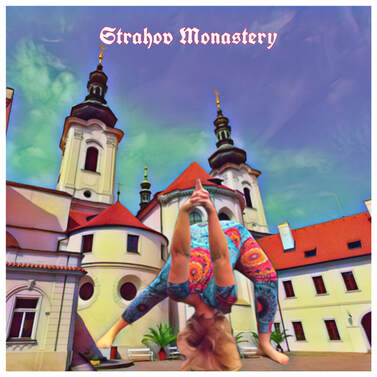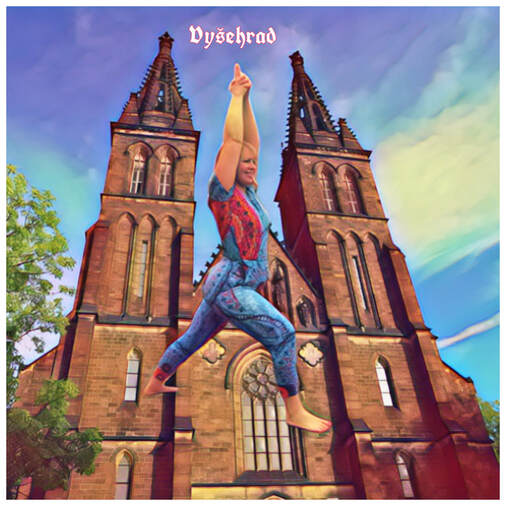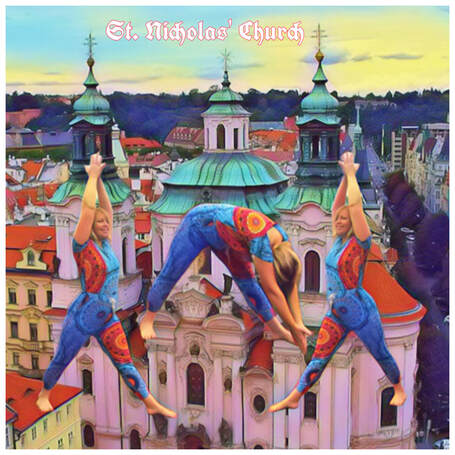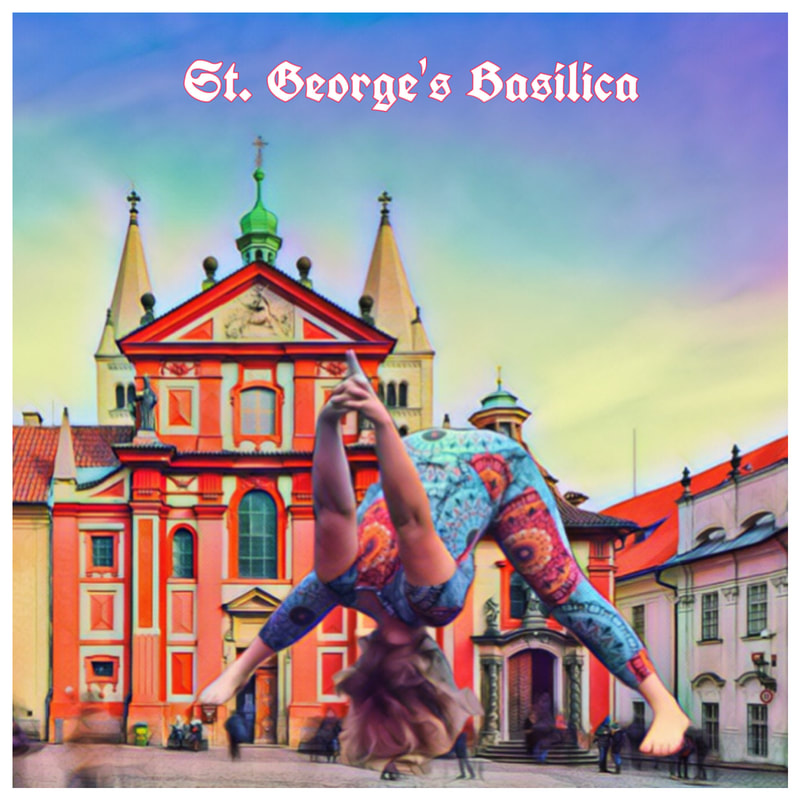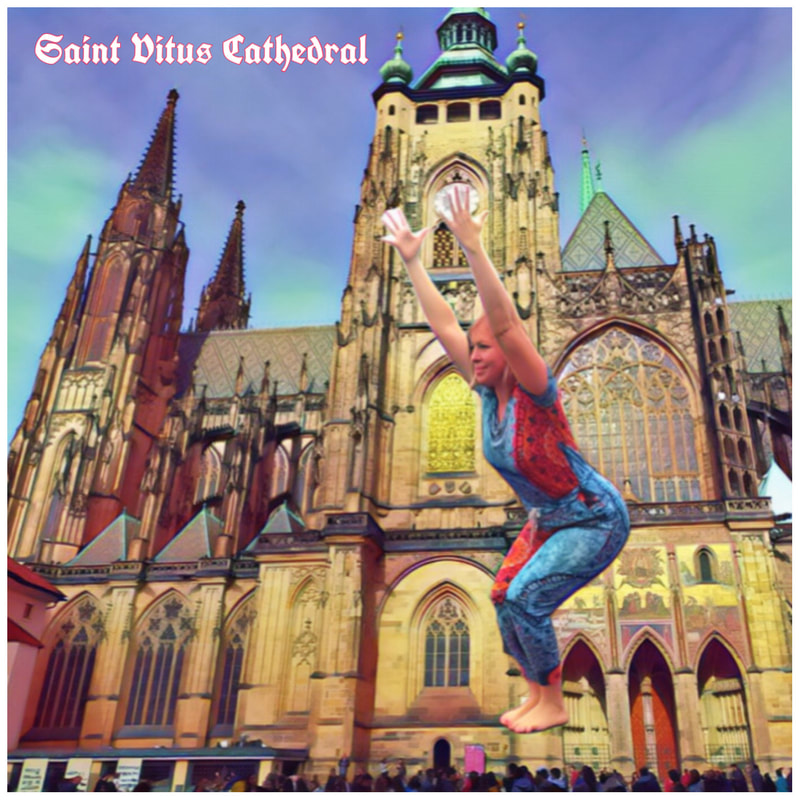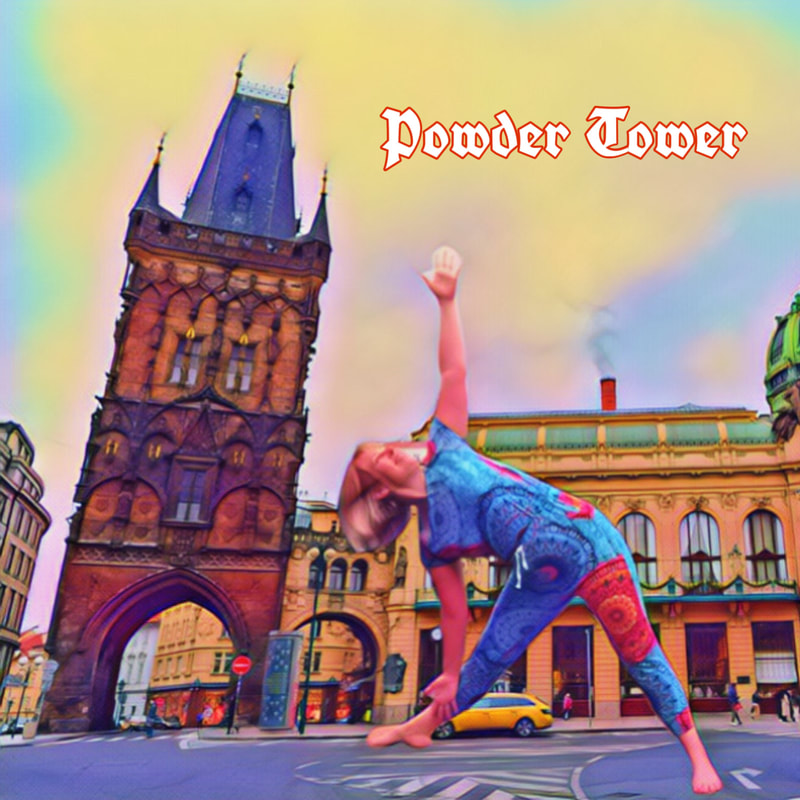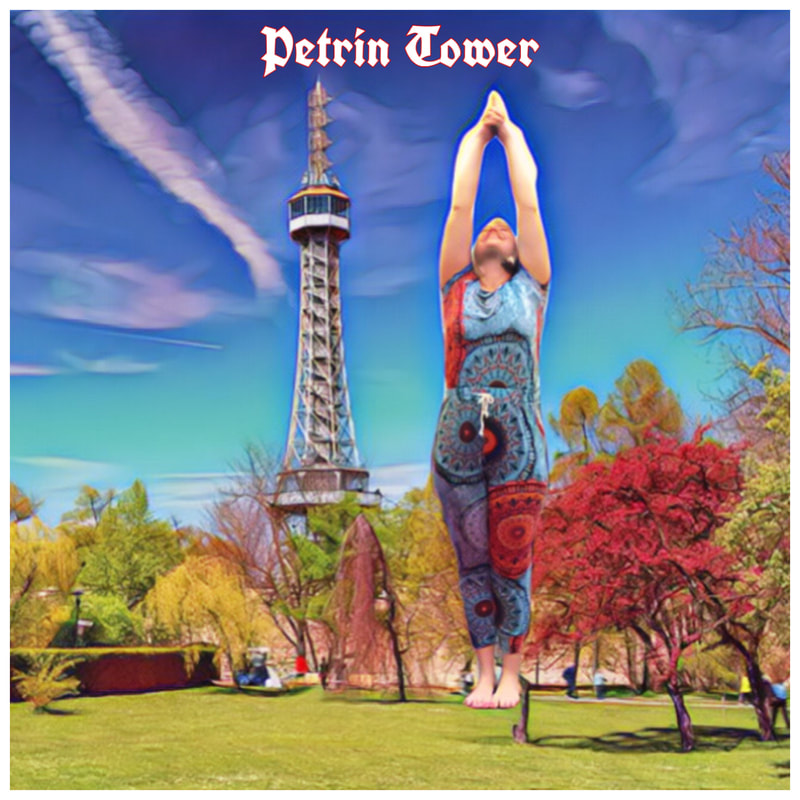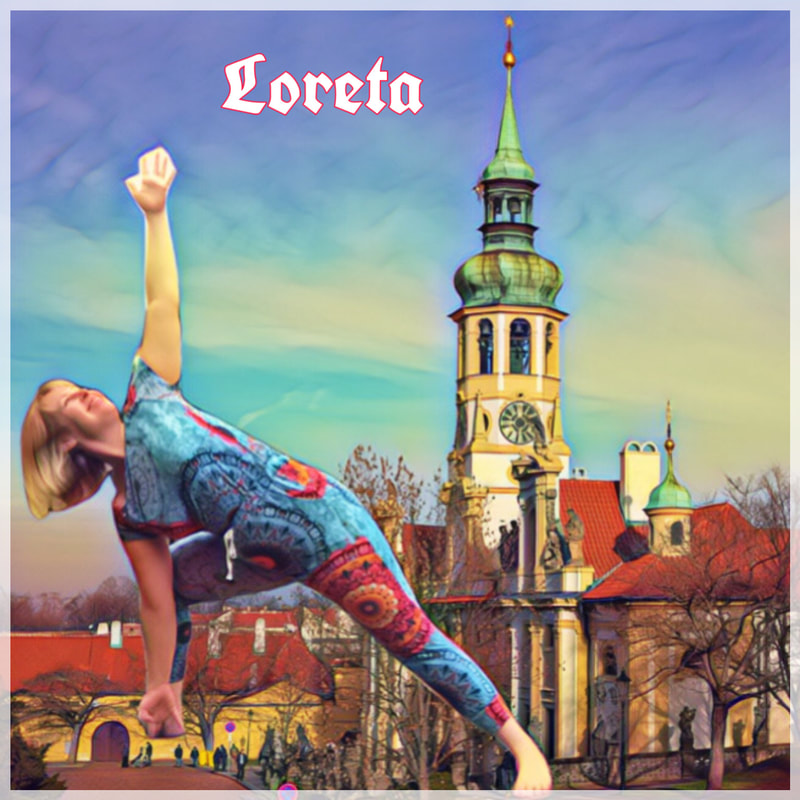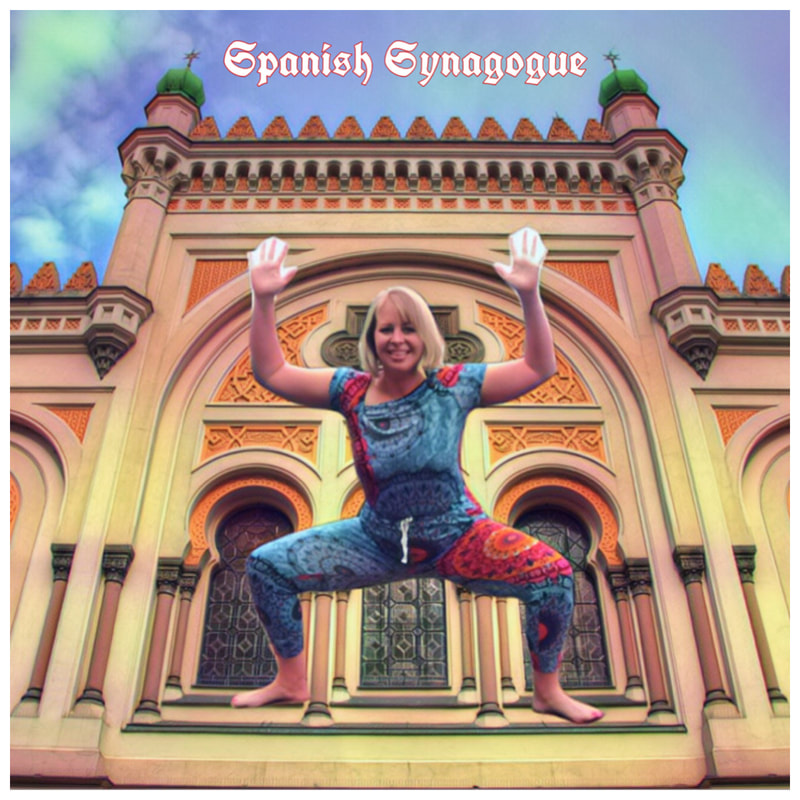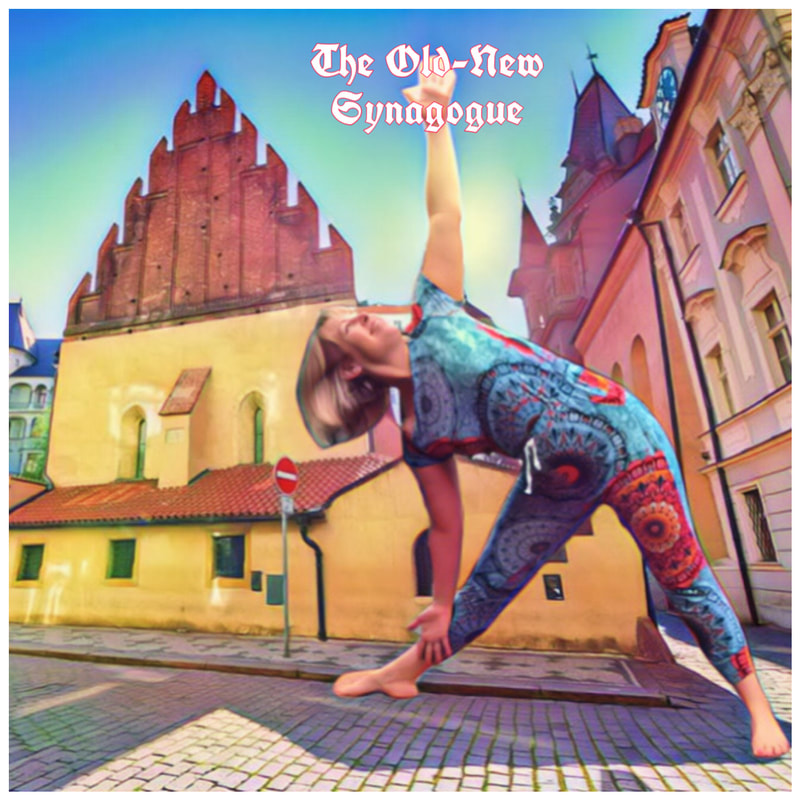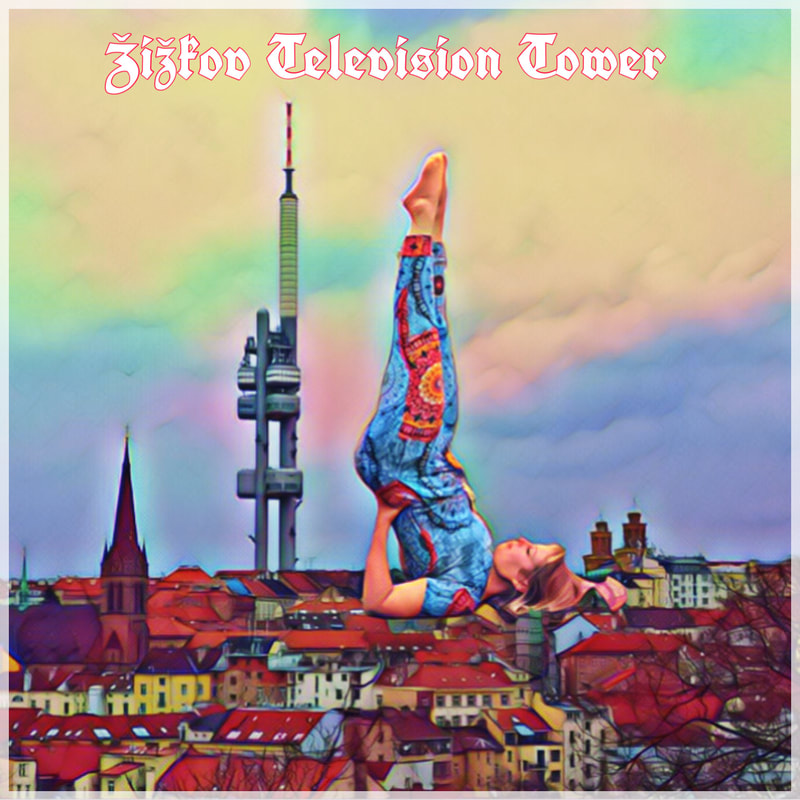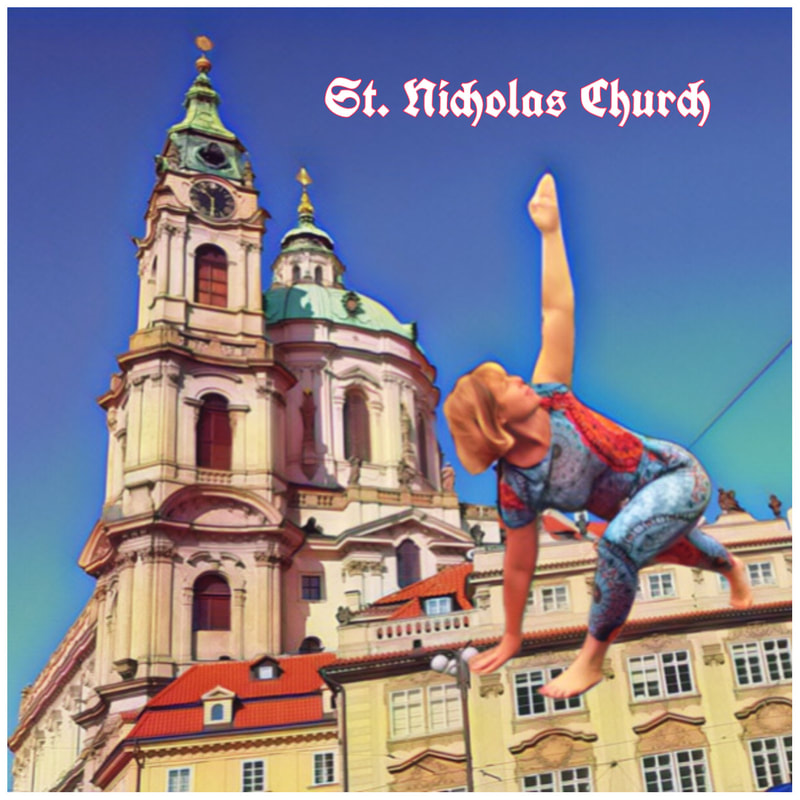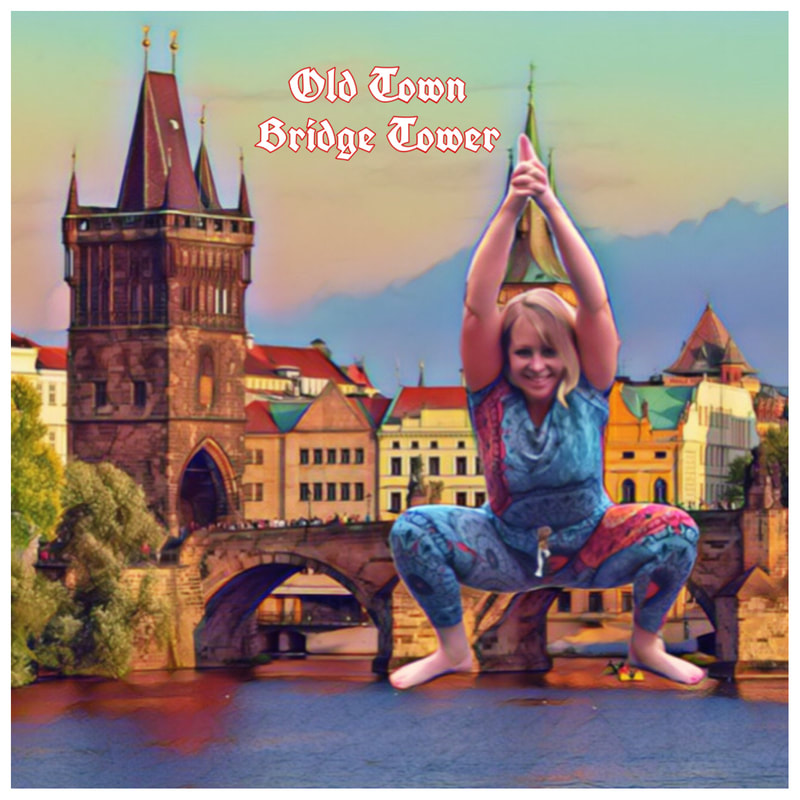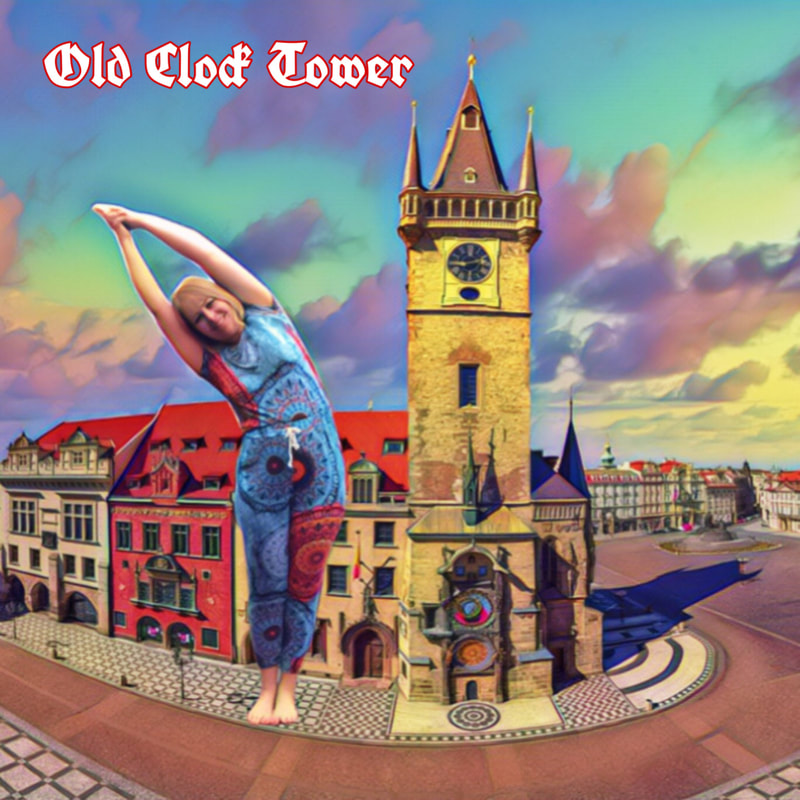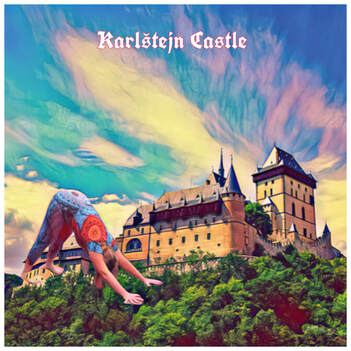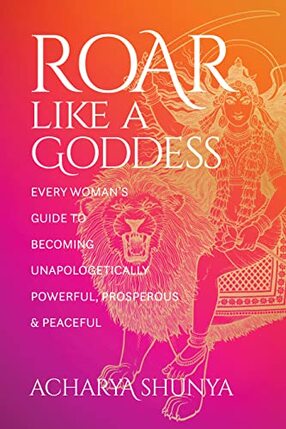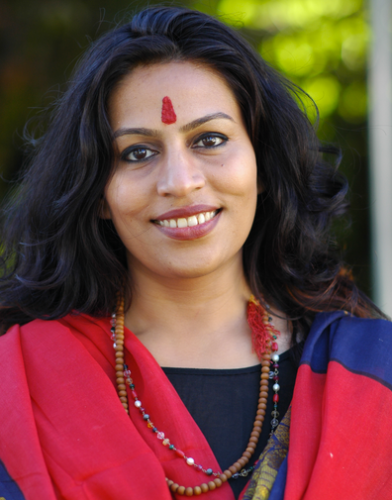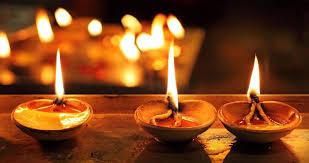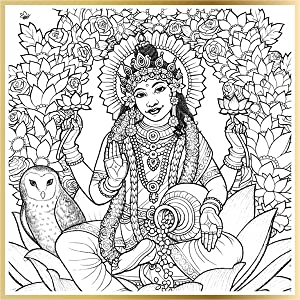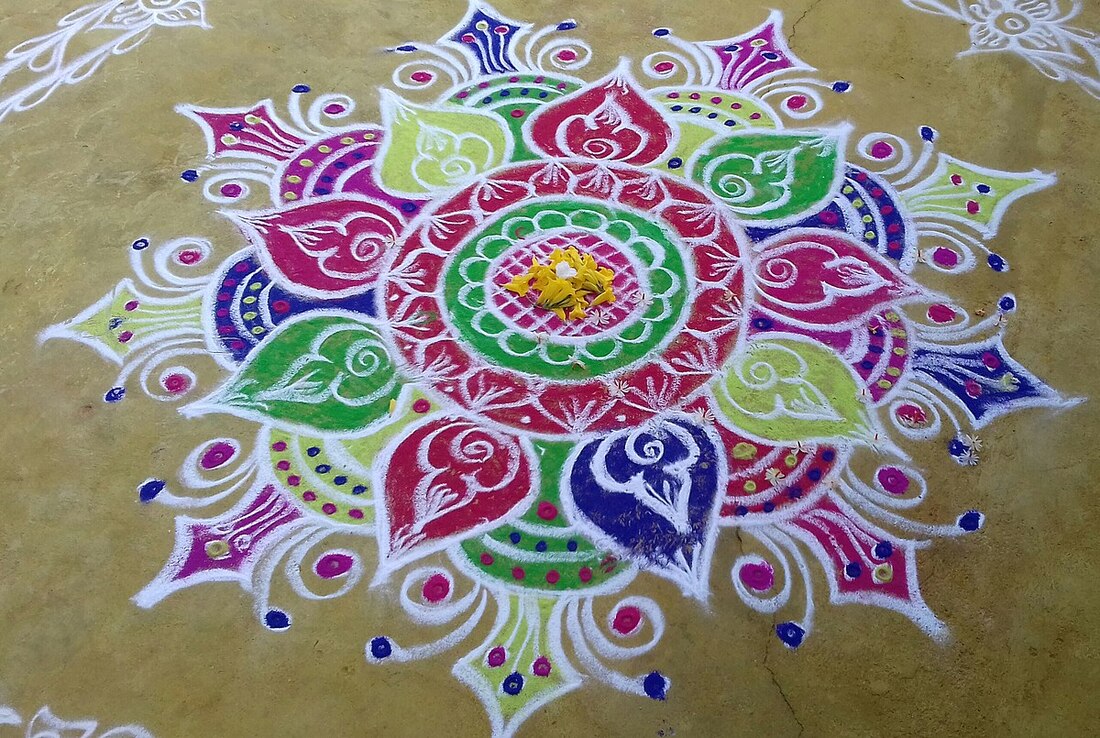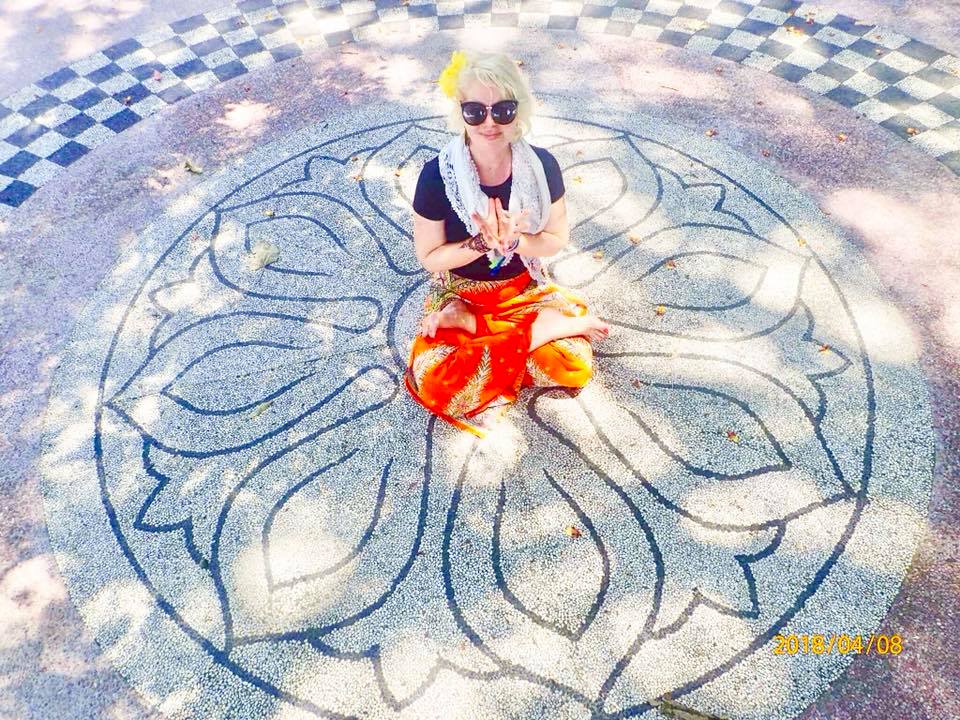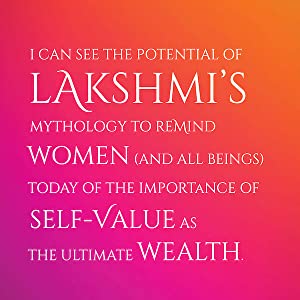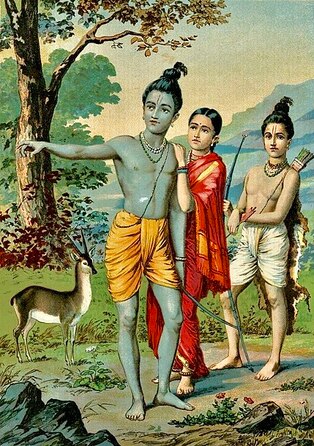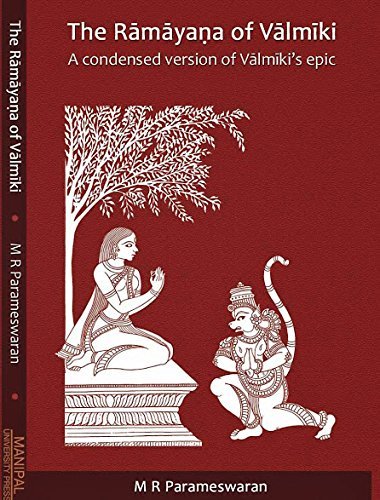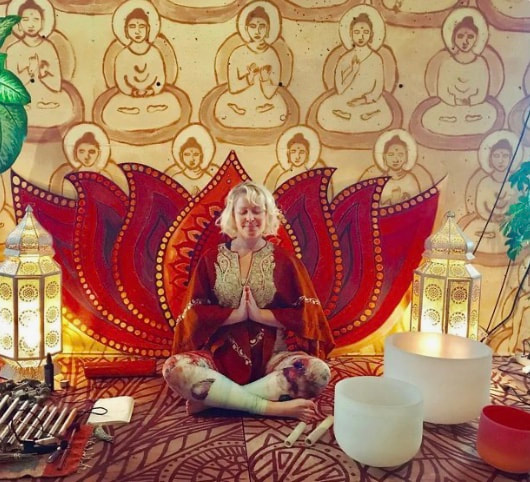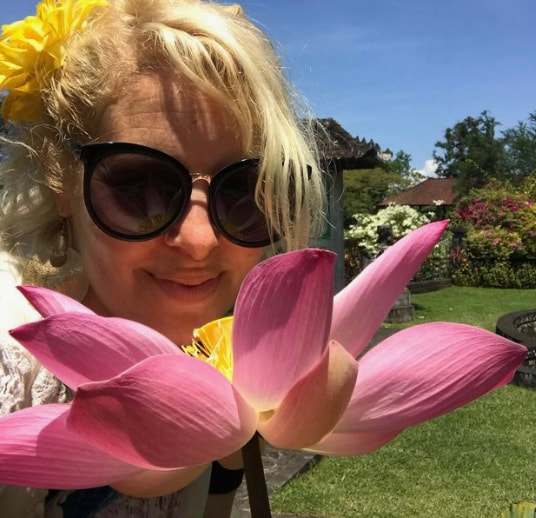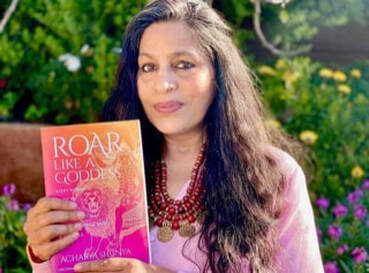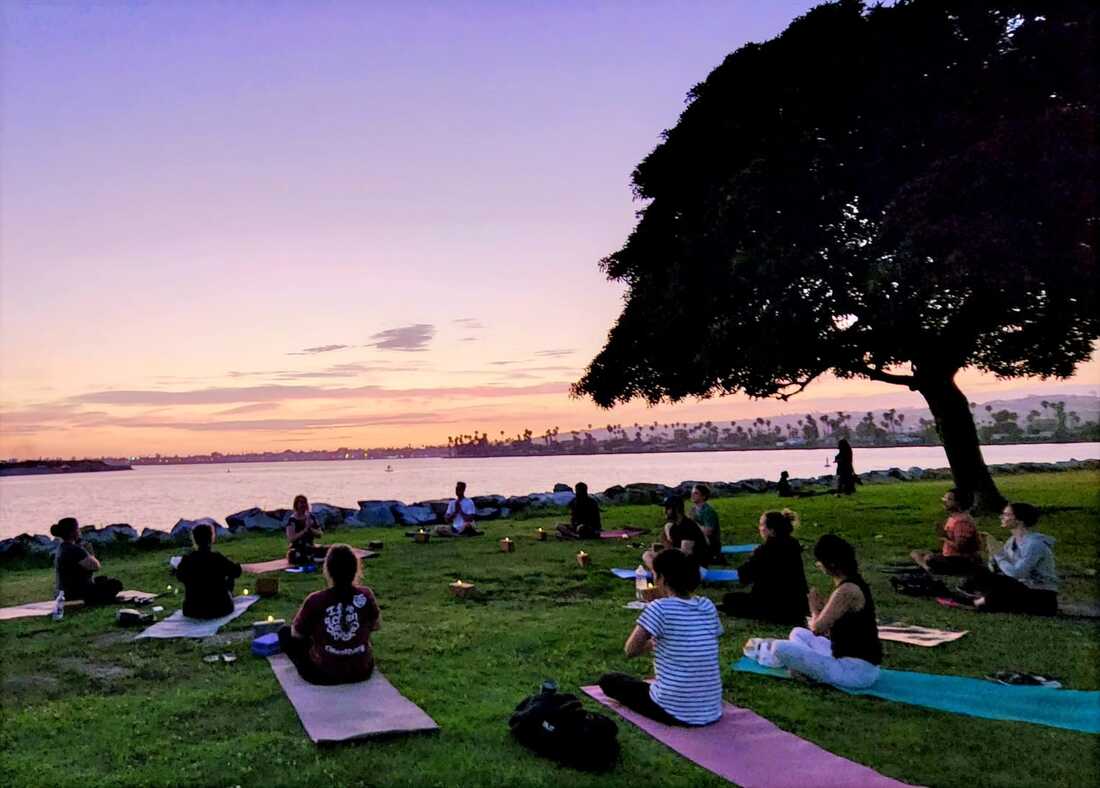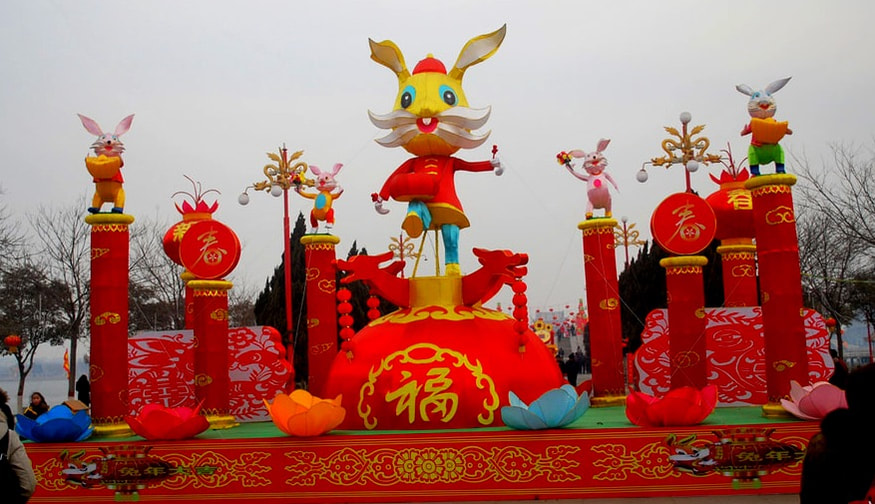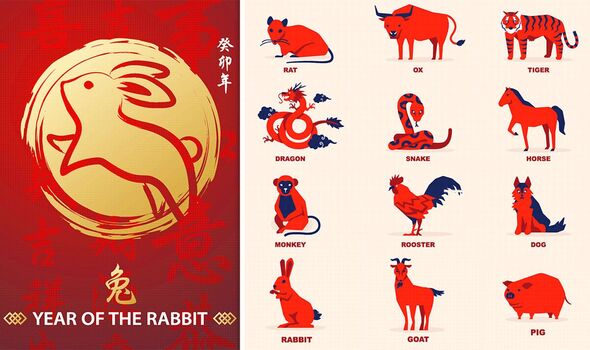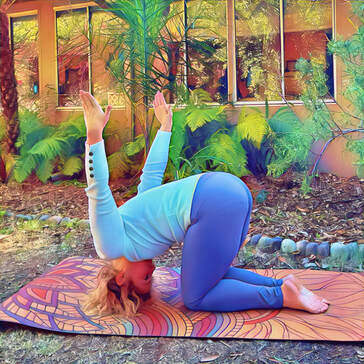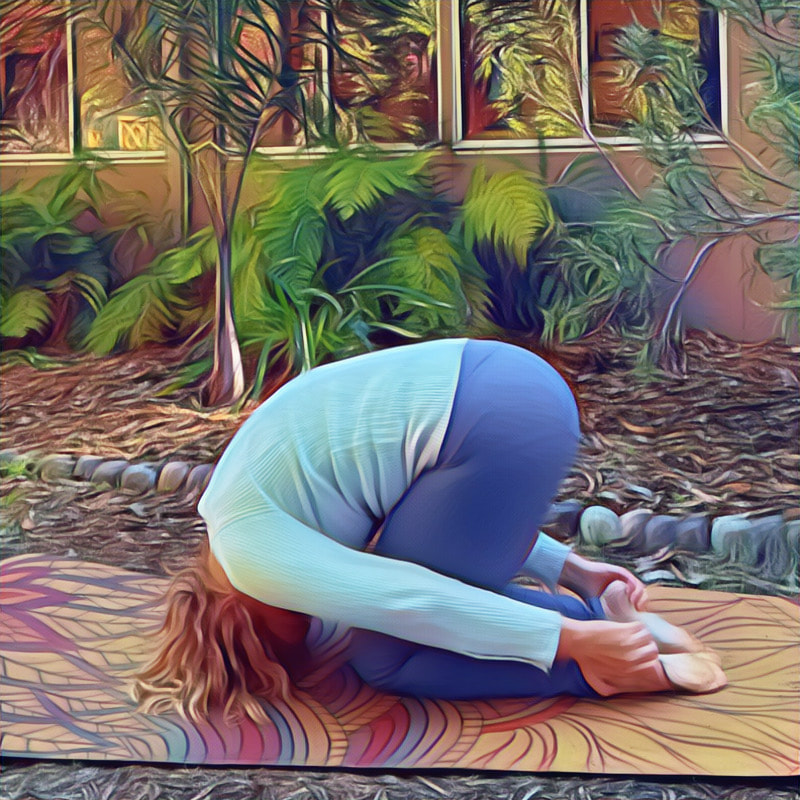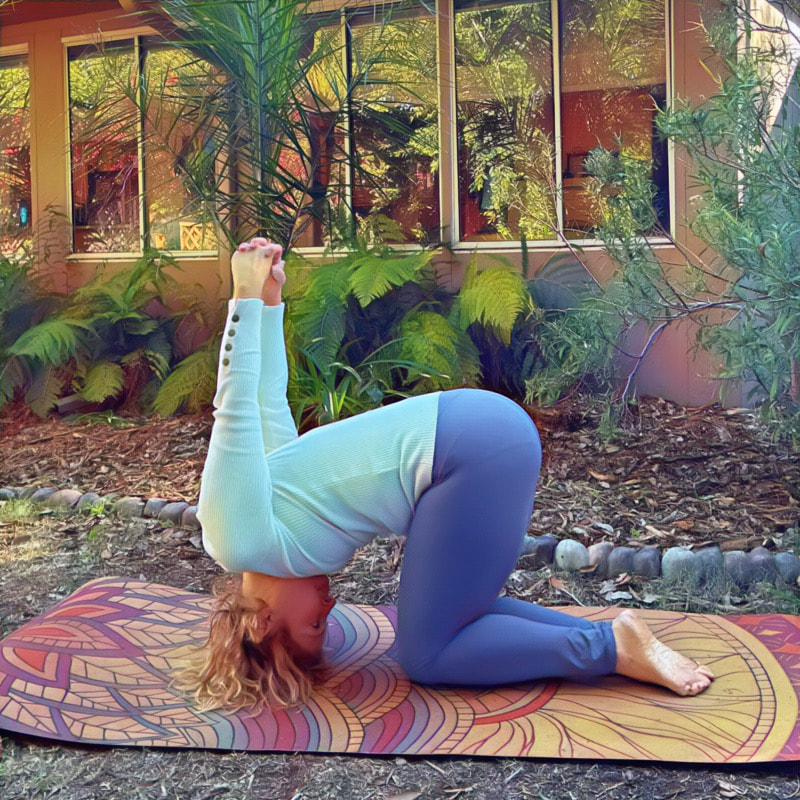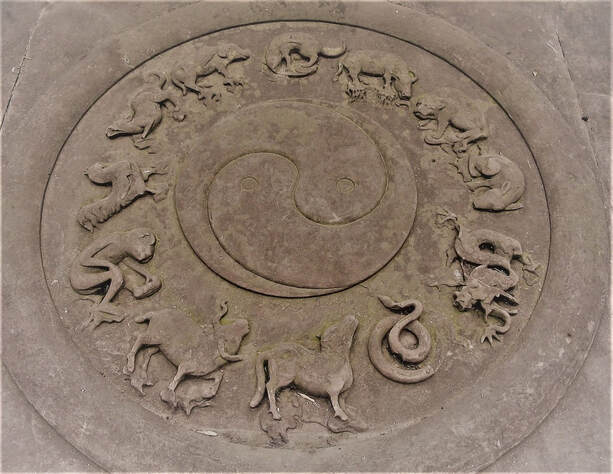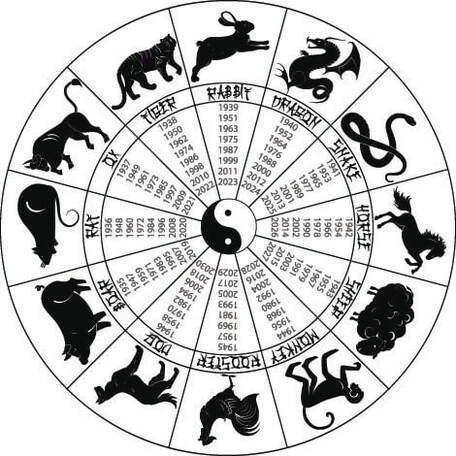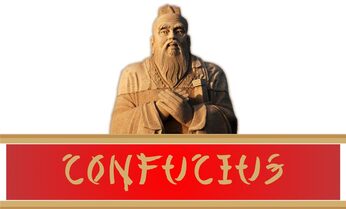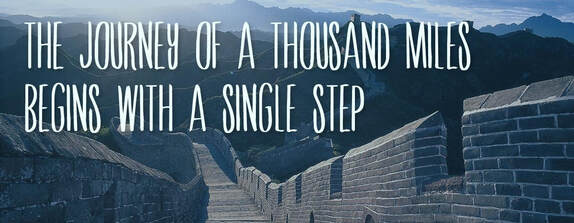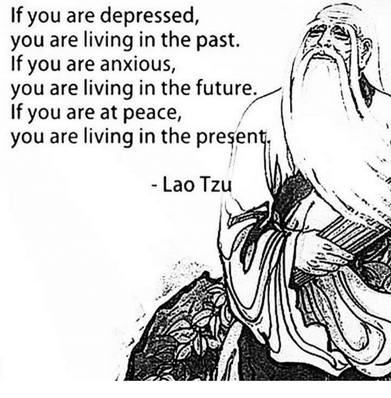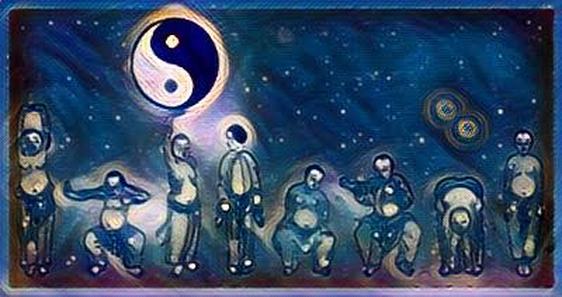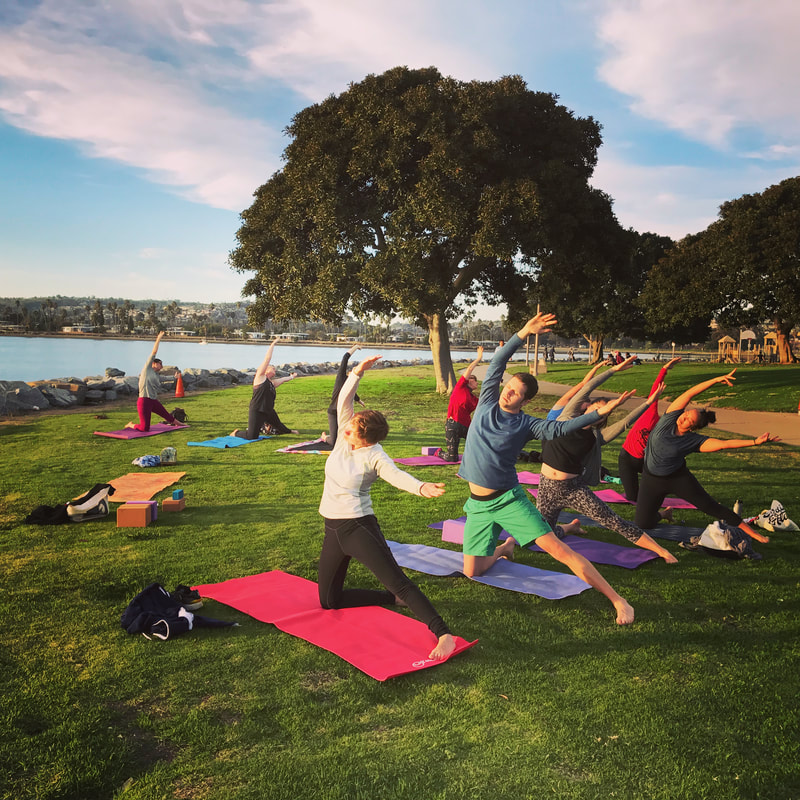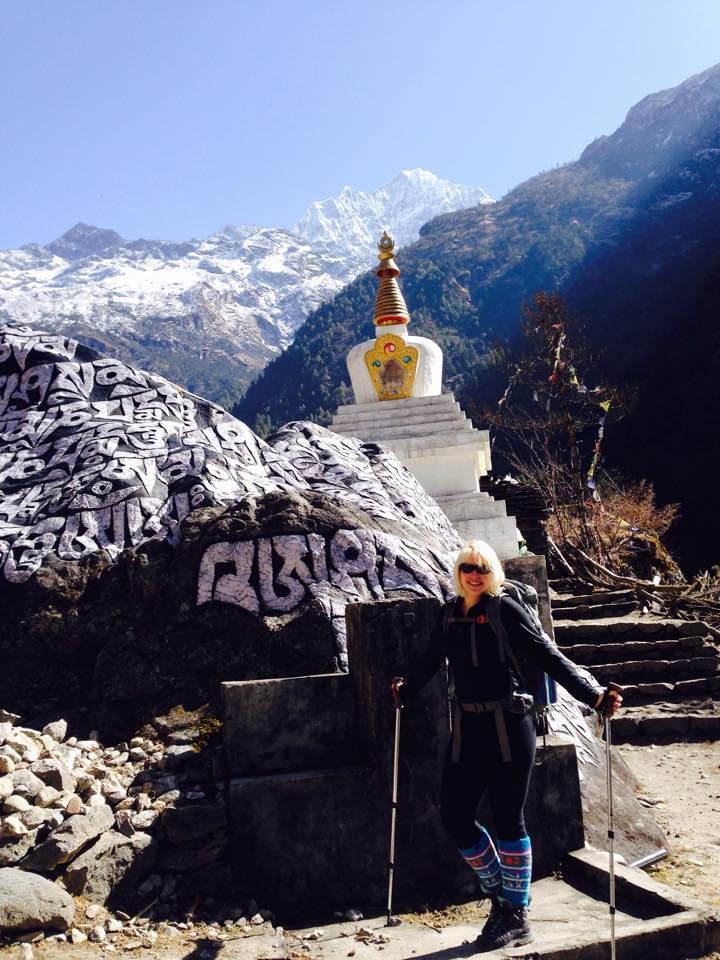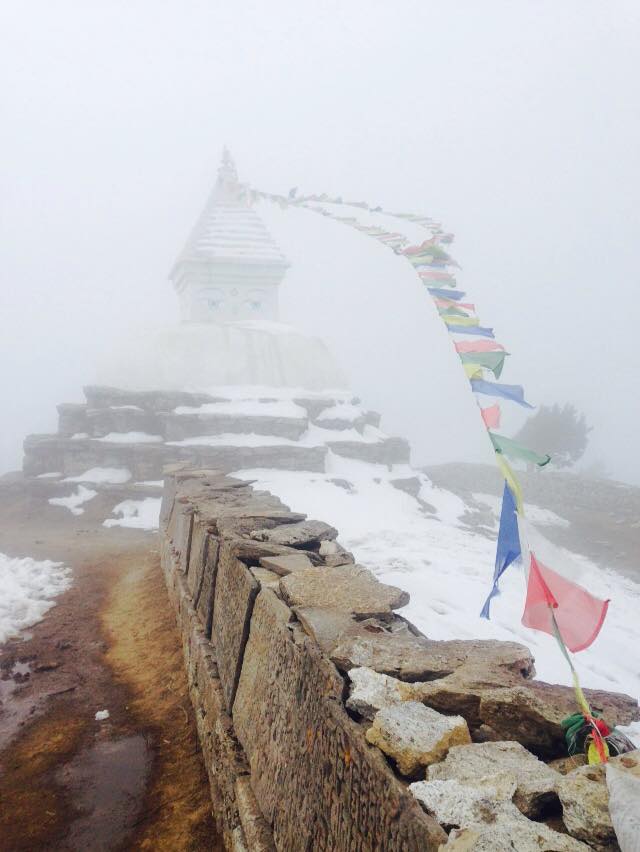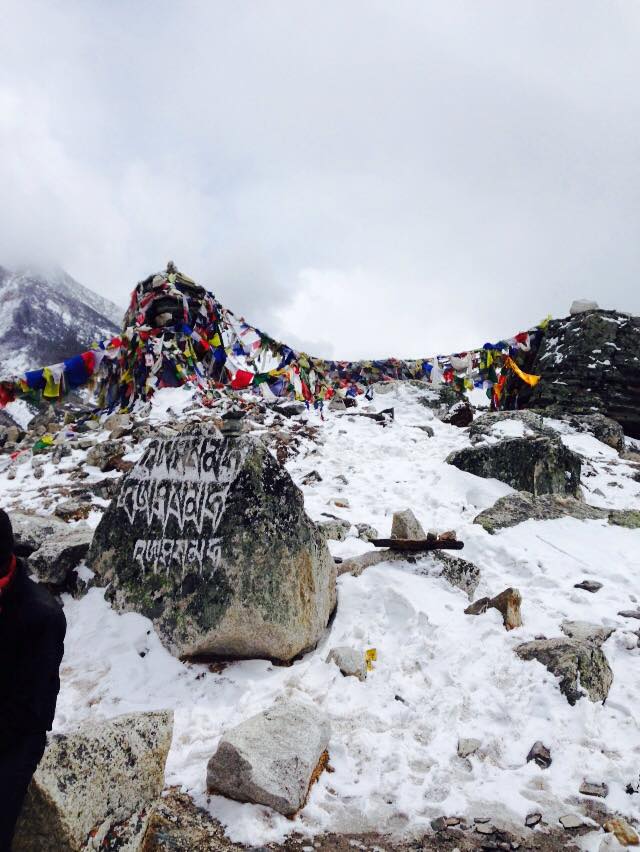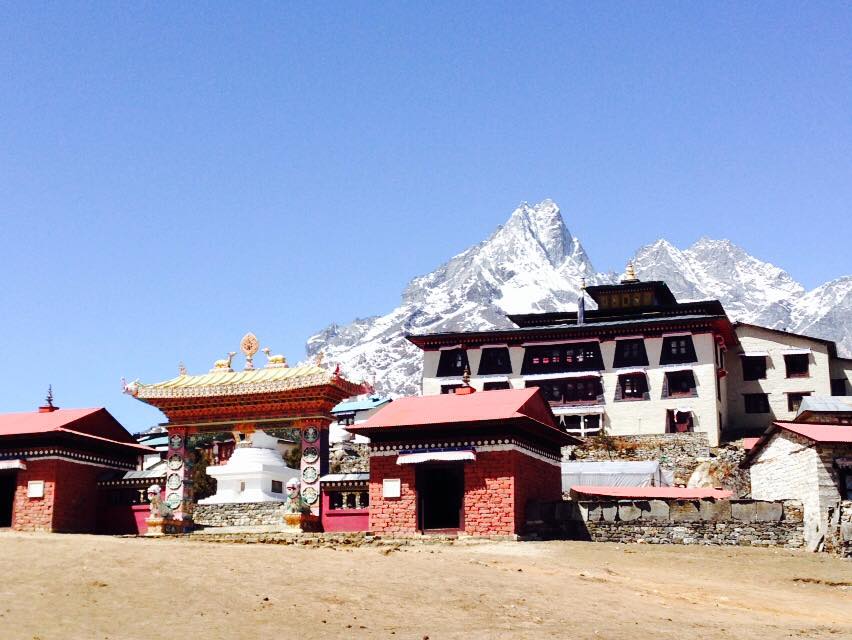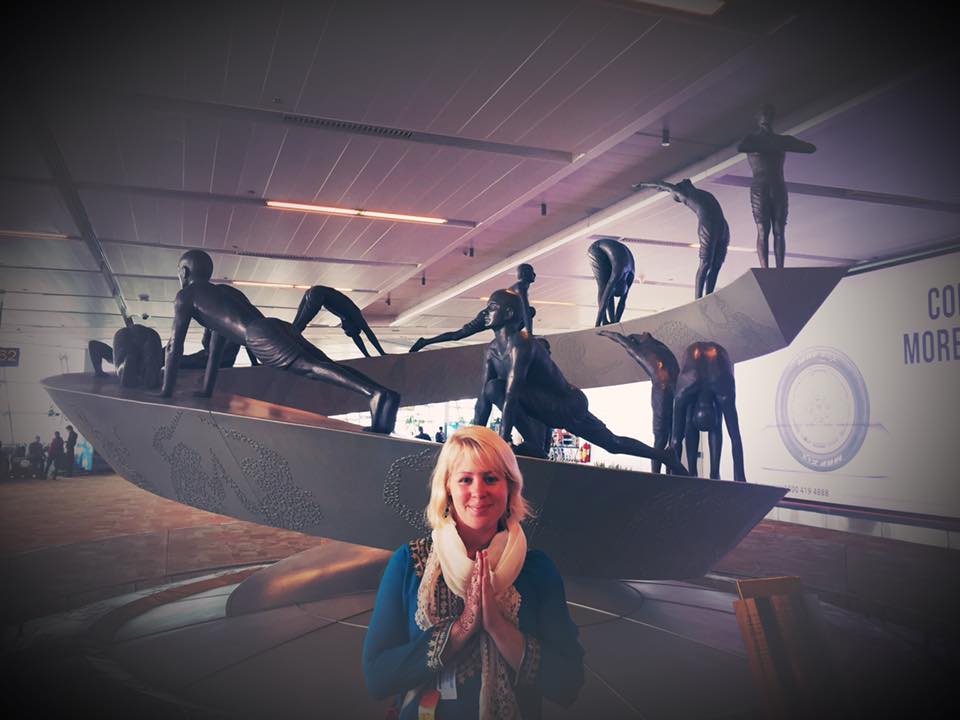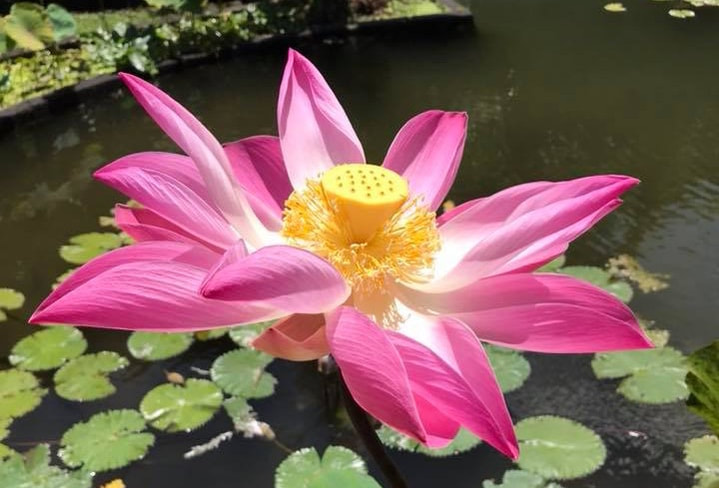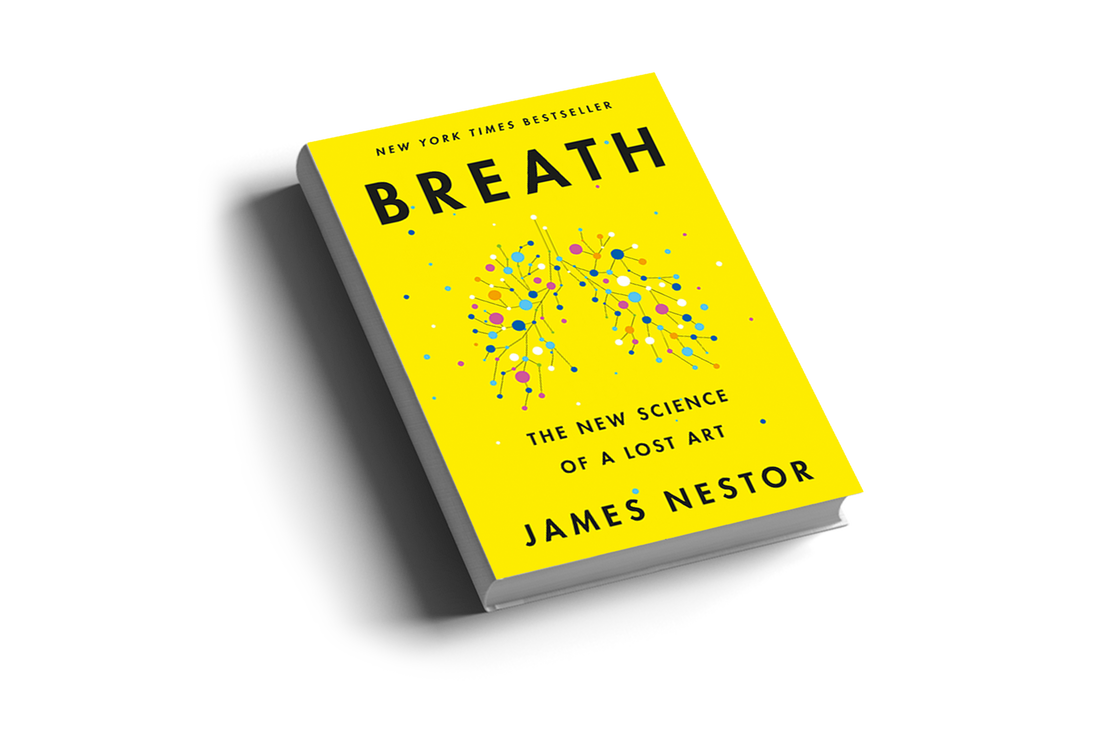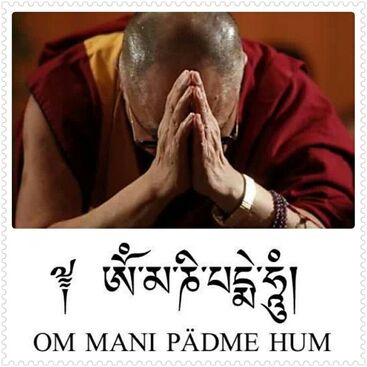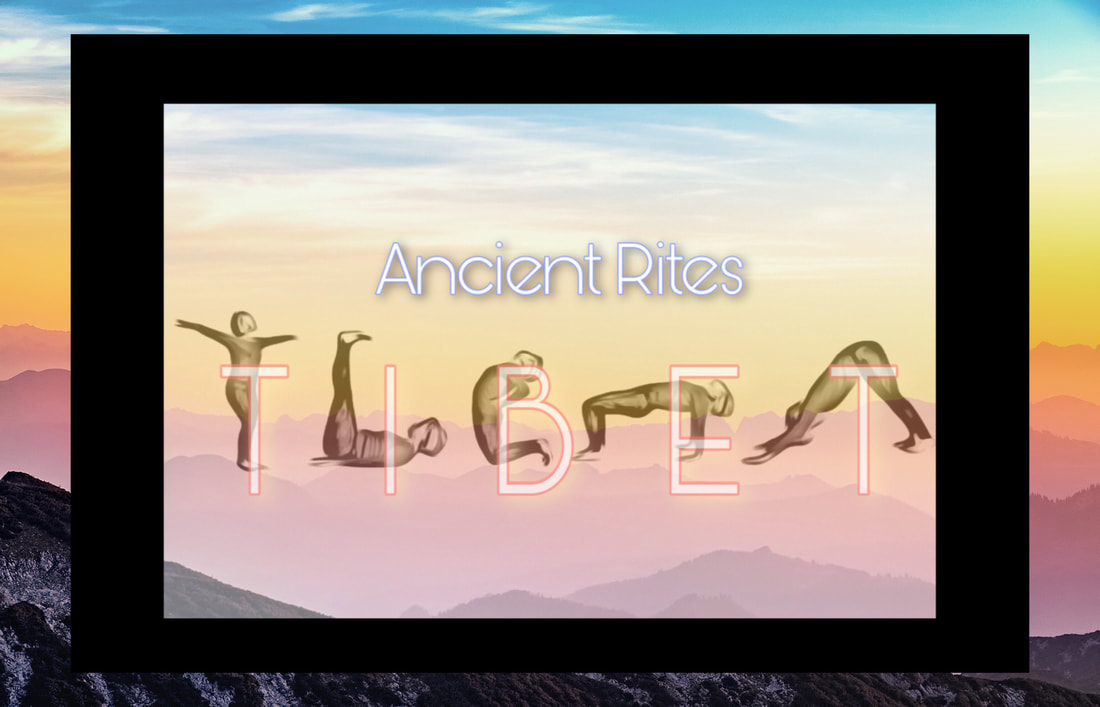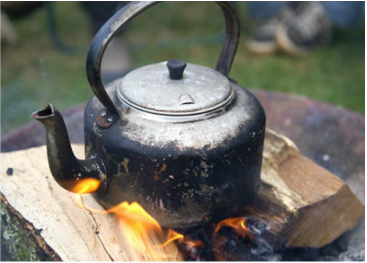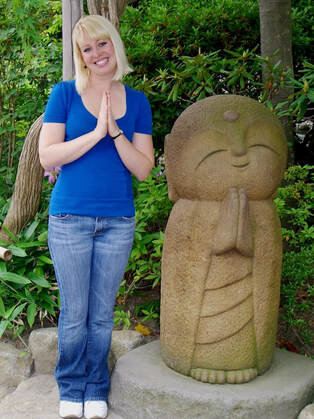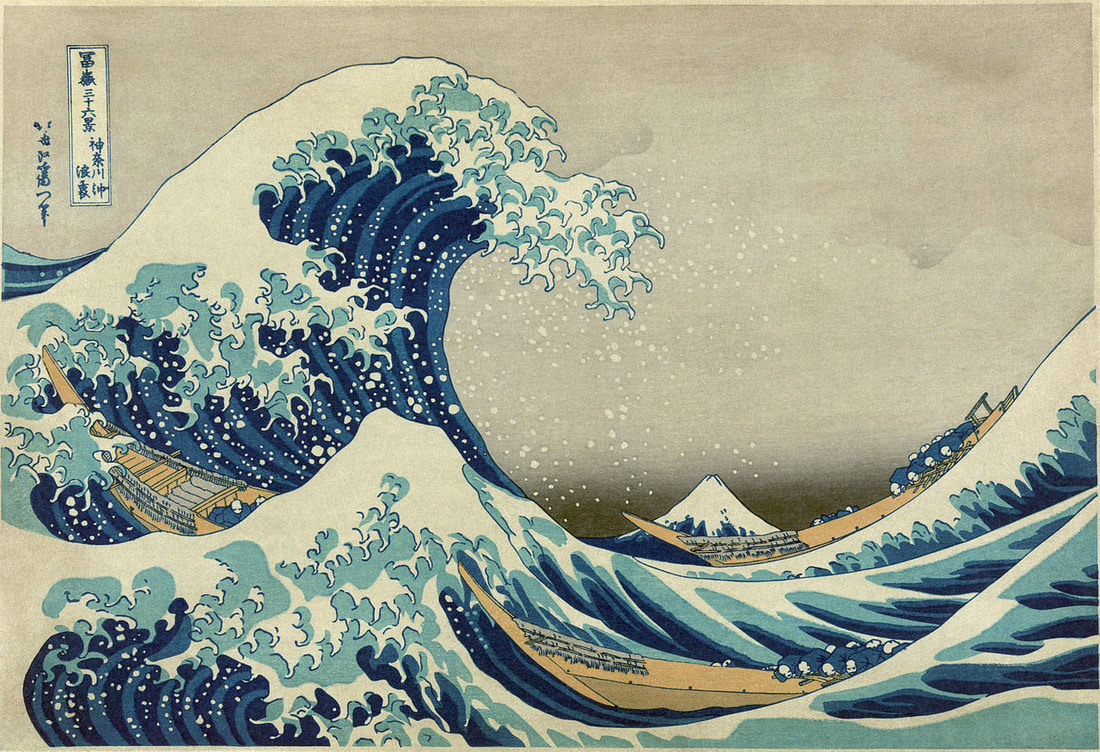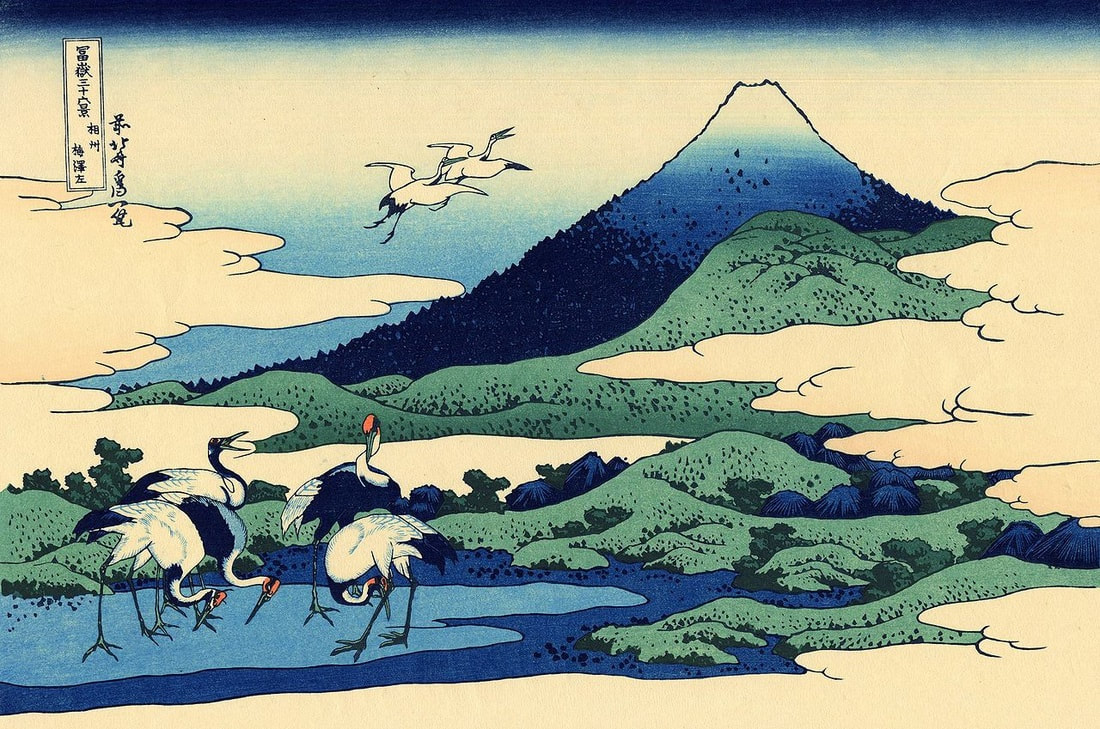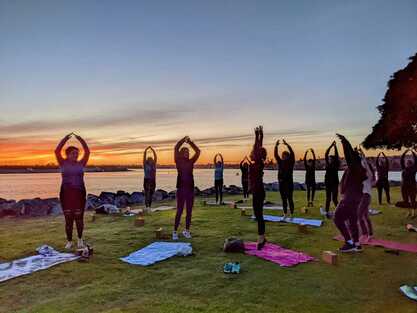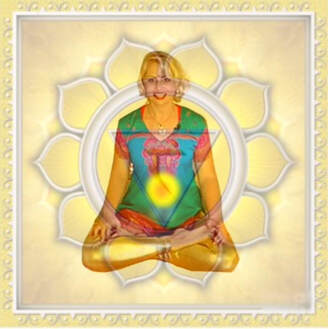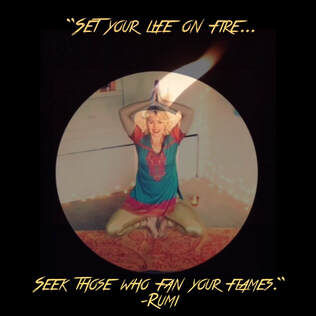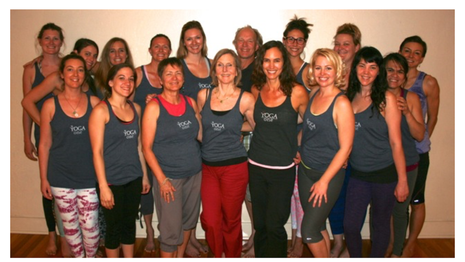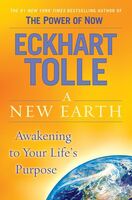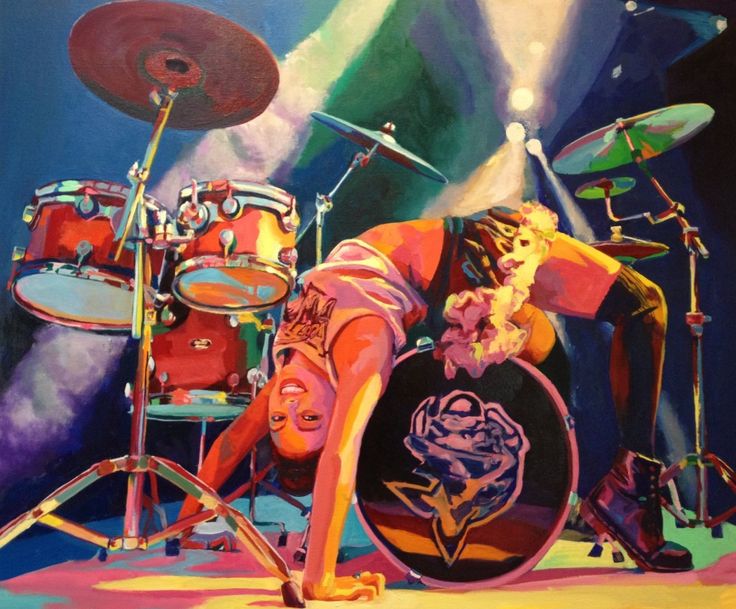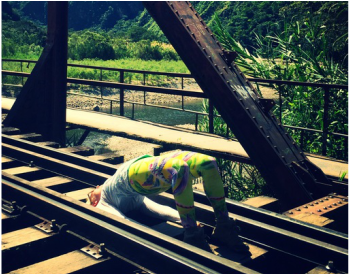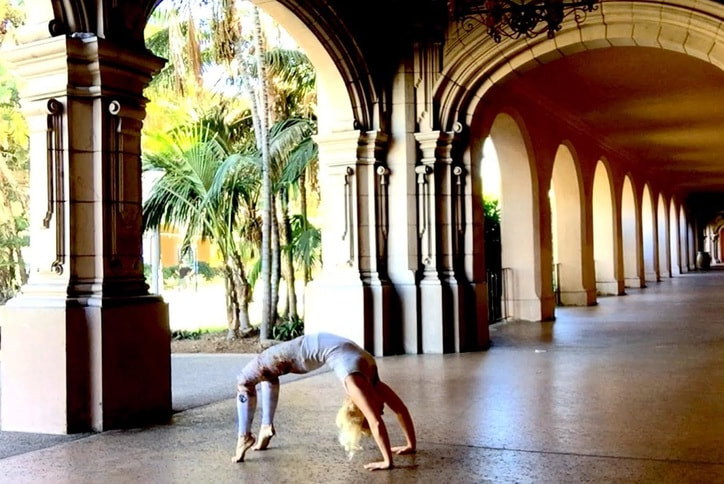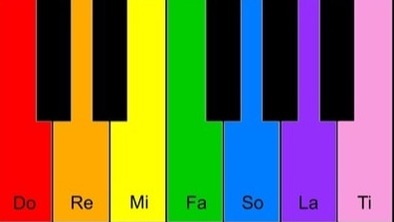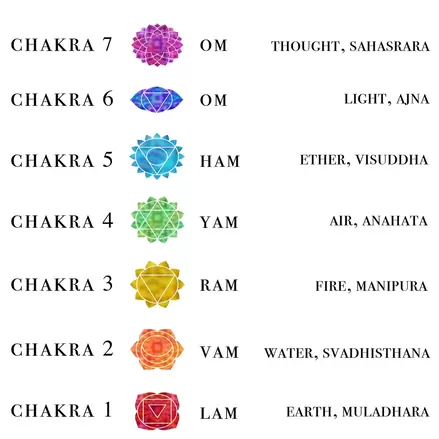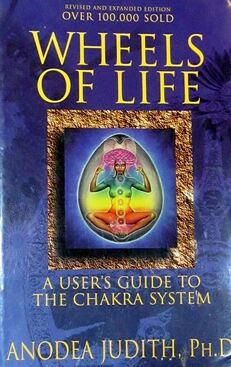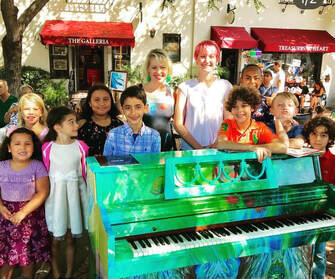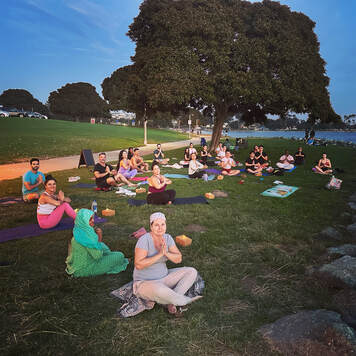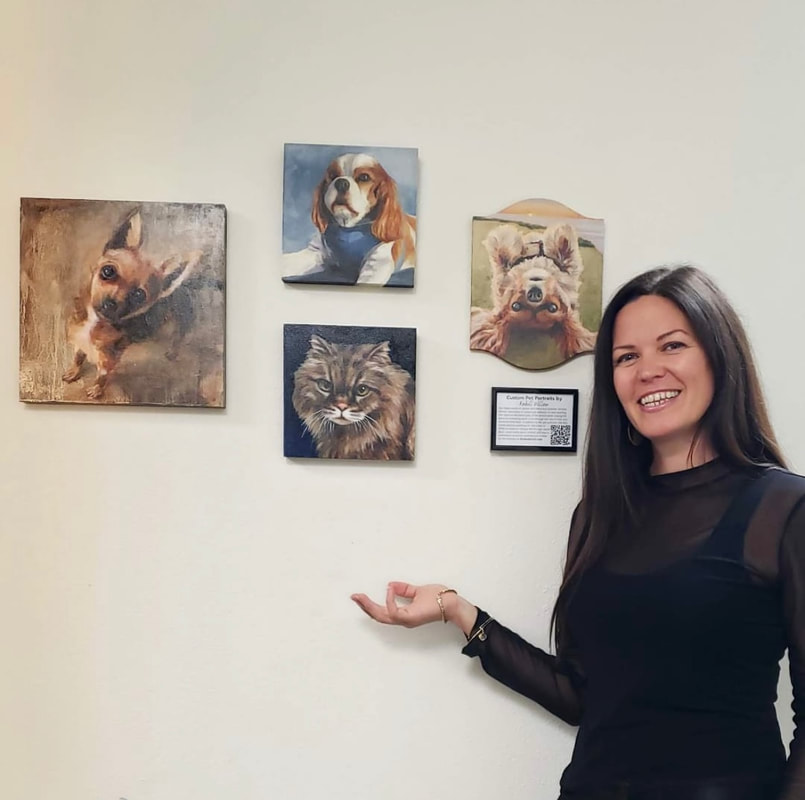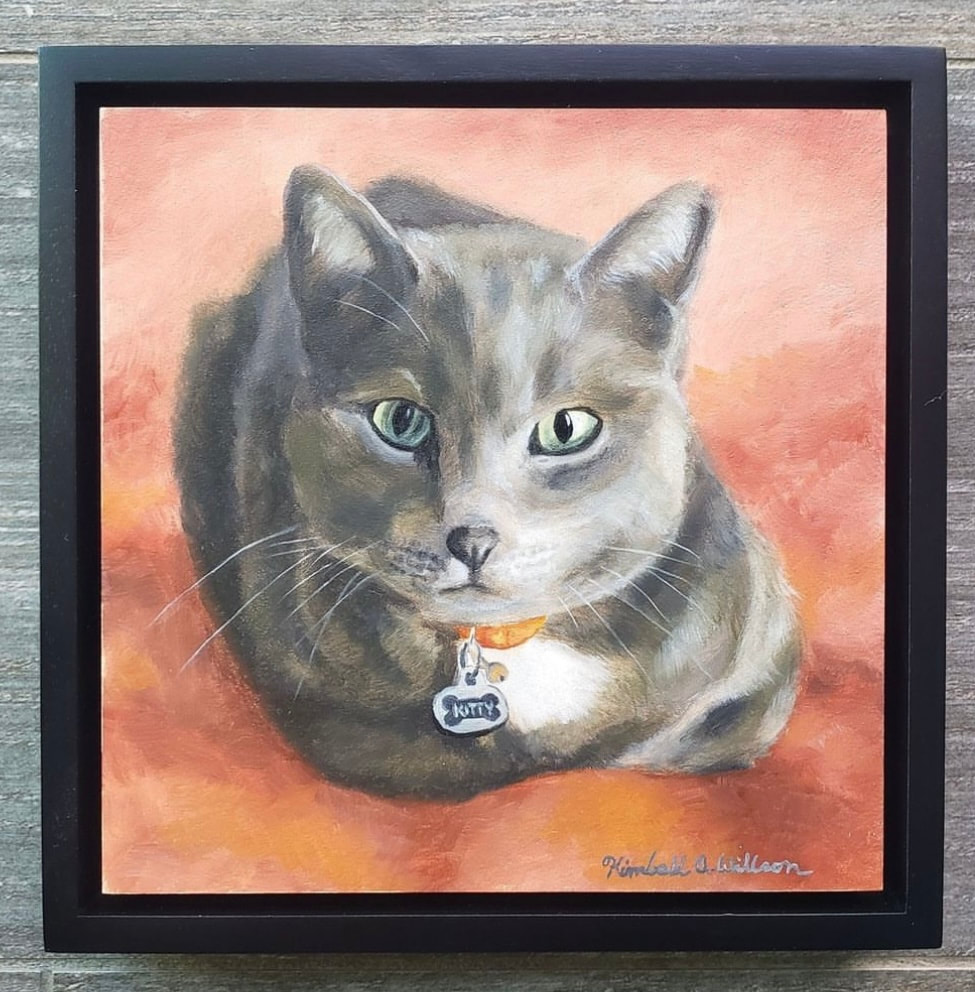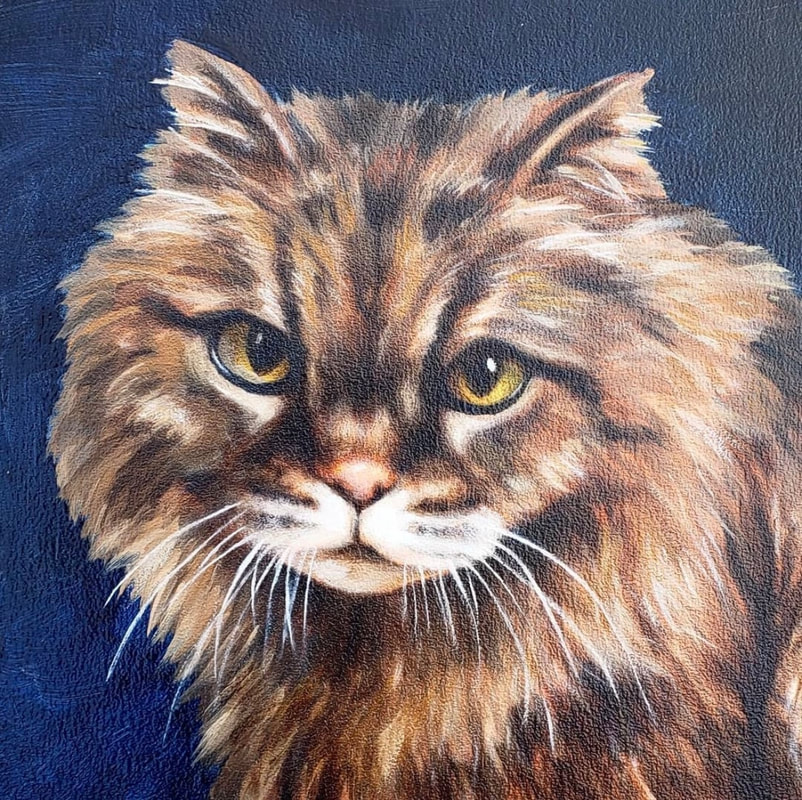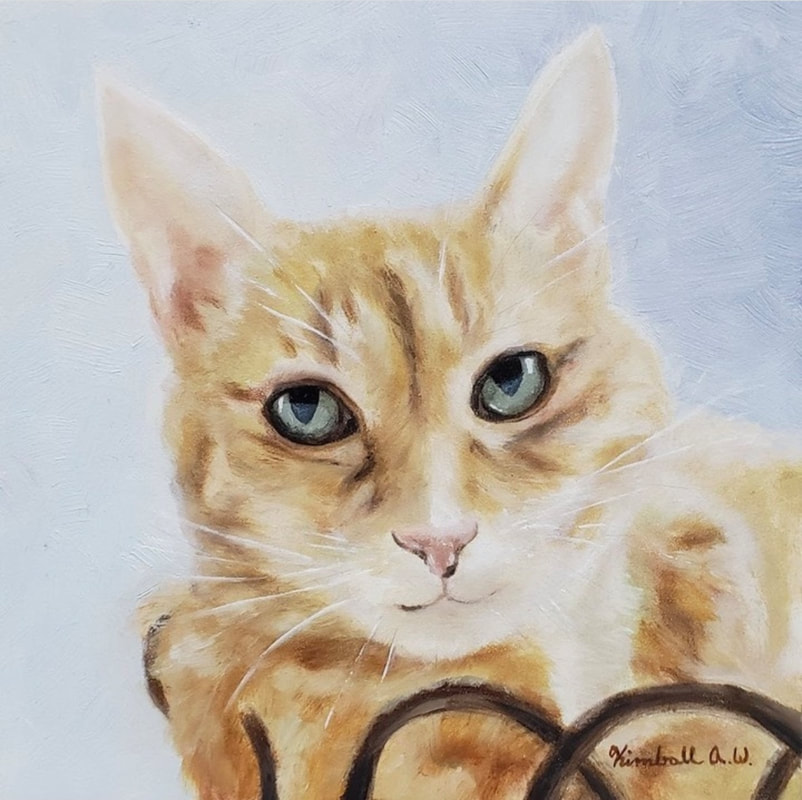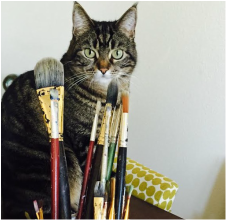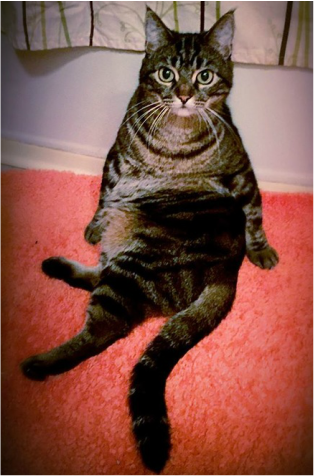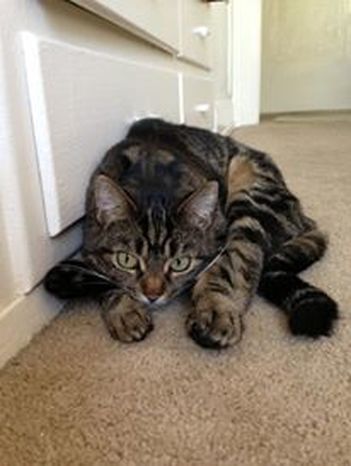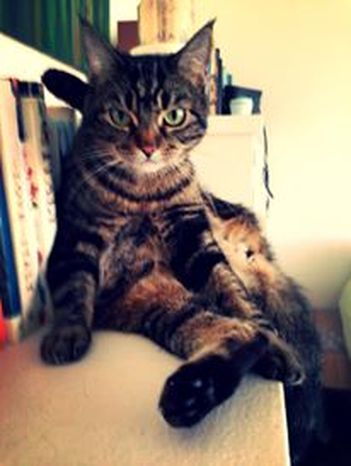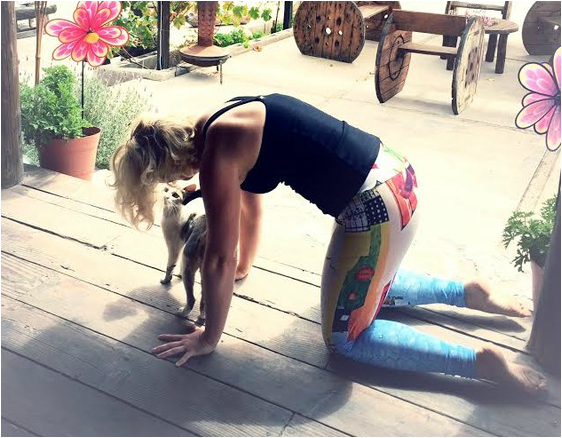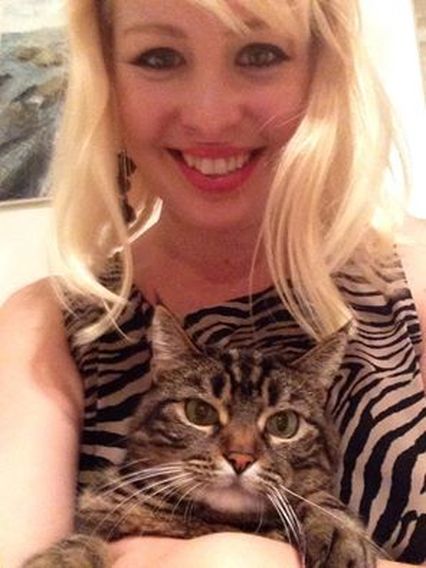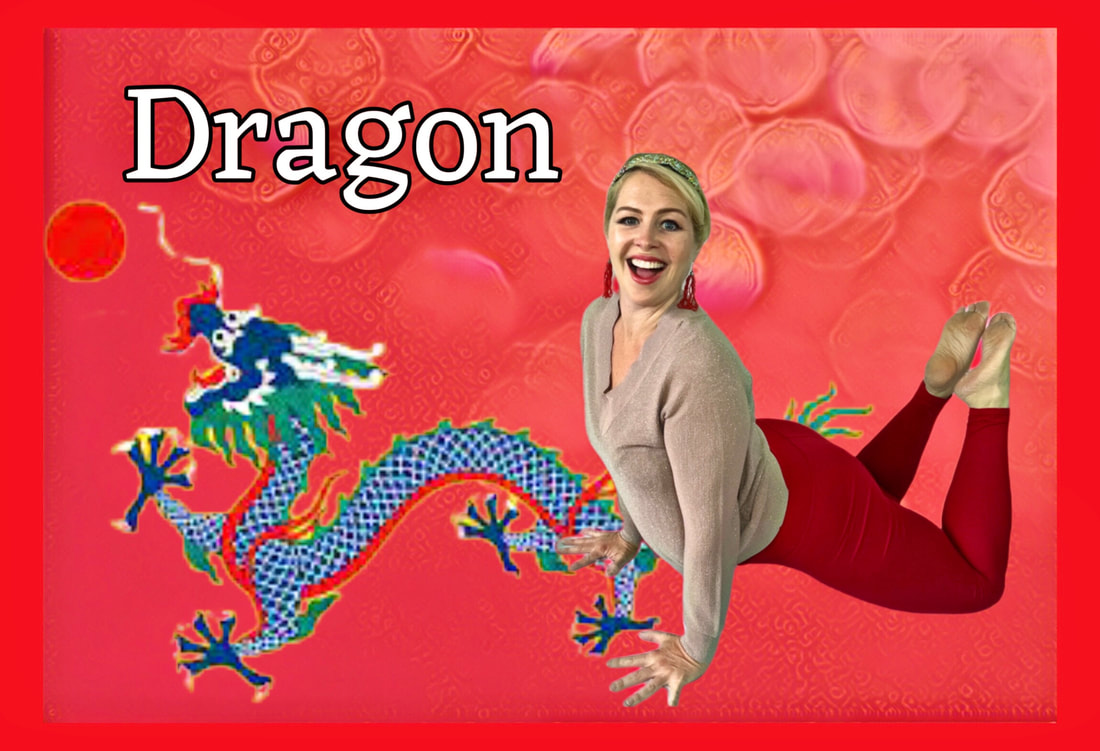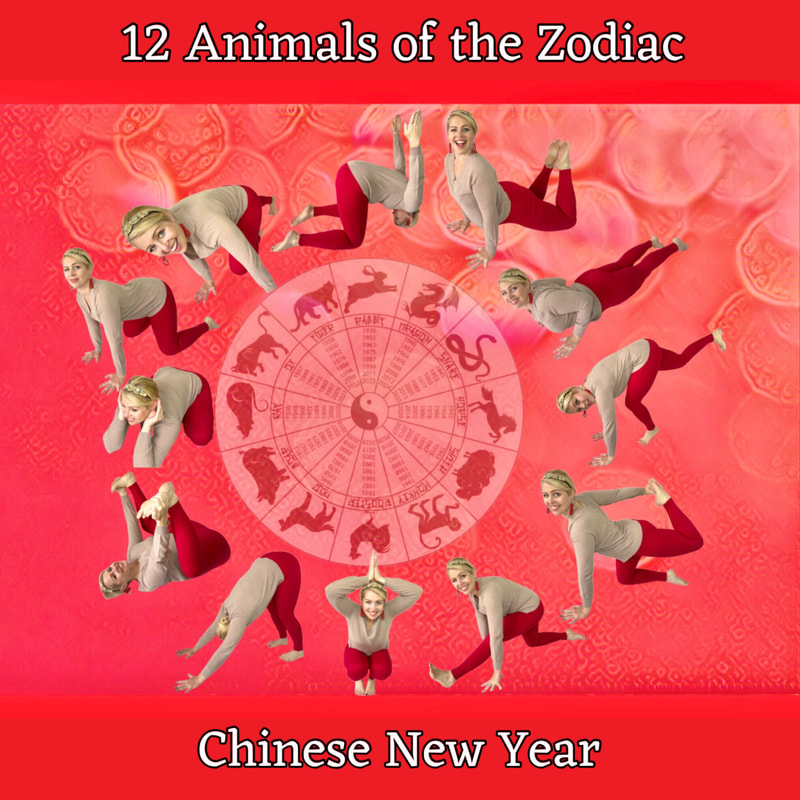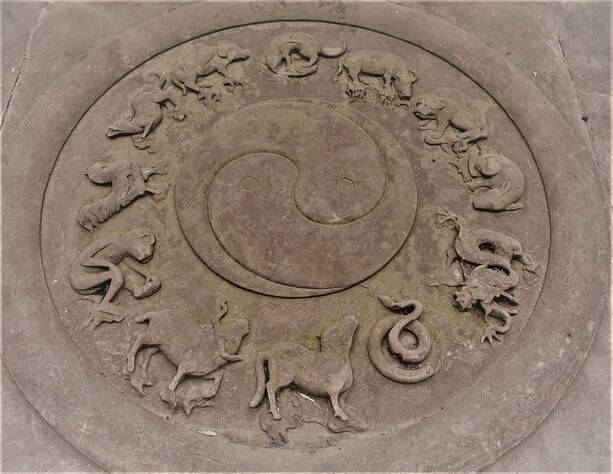↧
Interview with Plant Sumo
↧
10 Yoga Poses for Saint Patrick's Day
By Hannah Faulkner Roman
Let me start off by announcing that I am not Irish, nor have I been to Ireland. But, since childhood I’ve somehow worn green every year on Saint Patrick’s Day and as an adult found this day as an excuse to have a beer. Americans have celebrated the Irish saint on this day since at least the early 18th century.
St. Patrick was born in Roman Britain in the late 4th century. As a teenager he was kidnapped and brought to Ireland as a slave. After escaping, he later returned to convert the Irish to Christianity through establishing monasteries, churches, and schools. Many legends developed over the years, including how he used the shamrock to explain the holy Trinity. Likewise, the yoga trinity involves connecting the mind, body, and spirit. Today, this holiday honors St. Patrick's efforts to unite Celtic and Catholic Ireland through wearing one of the forty shades of Ireland's green, dancing, parades, drinking beer, chasing pots of gold, and making merry.
Through the following 10 Yoga Poses, I explore the meaning behind some common Irish symbols.
St. Patrick was born in Roman Britain in the late 4th century. As a teenager he was kidnapped and brought to Ireland as a slave. After escaping, he later returned to convert the Irish to Christianity through establishing monasteries, churches, and schools. Many legends developed over the years, including how he used the shamrock to explain the holy Trinity. Likewise, the yoga trinity involves connecting the mind, body, and spirit. Today, this holiday honors St. Patrick's efforts to unite Celtic and Catholic Ireland through wearing one of the forty shades of Ireland's green, dancing, parades, drinking beer, chasing pots of gold, and making merry.
Through the following 10 Yoga Poses, I explore the meaning behind some common Irish symbols.
1. Four-Leaf Clover
The Shamrock is the national flower of Ireland. This three-leaved plant was used by Saint Patrick to illustrate the presence of God in the natural world as the trinity (God the Father, Son, and Holy Spirit), but in ancient times it was used in fertility rituals, to scare away snakes, to heal diseases, and to ward off evil spirits.
However, a four-leaved clover is not technically a shamrock, it is much luckier as they appear only once out of 10,000 clovers. The petals represent faith, hope, love, and luck.
This posture is also known as Star Pose, or Utthita Tadasana. It’s a variation of Mountain Pose. To get into the posture, stand with your feet much wider than your hips. Exhale to root into the ground and tone the muscles throughout. Inhale to lift the crown of the head, allowing the spine to elongate. Extend your arms out wide to gently open the chest. Relax the shoulders down and back while lengthening through the fingertips. Continue to breath calming in and out through the nose for several breaths, connecting with your good luck.
However, a four-leaved clover is not technically a shamrock, it is much luckier as they appear only once out of 10,000 clovers. The petals represent faith, hope, love, and luck.
This posture is also known as Star Pose, or Utthita Tadasana. It’s a variation of Mountain Pose. To get into the posture, stand with your feet much wider than your hips. Exhale to root into the ground and tone the muscles throughout. Inhale to lift the crown of the head, allowing the spine to elongate. Extend your arms out wide to gently open the chest. Relax the shoulders down and back while lengthening through the fingertips. Continue to breath calming in and out through the nose for several breaths, connecting with your good luck.
2. RainBow
The rain that creates the gorgeous green of Ireland also leaves a plethora of beautiful rainbows. Where does the rainbow end and what lies at its edge? As a child I thought that maybe someday I will find this edge and along with it my pot of gold! This myth evolved from the leprechauns who buried their dead with valuables. The native people of Ireland were called “little people” by the Gaelic invaders of the fifth century BC and legends morphed them into some type of drunken fairy.
This Rainbow Pose is usually known as Wild Thing or Camatkarasana (miracle pose) in Sanskrit. From Downward Facing Dog Pose, simply flip your dog. In other words, reach your right leg straight up behind you, and turn it to stack the hips. Bend at the knee and step the right ball mound of the foot to the left side of the left leg. Keep the right leg bent as the left leg pivots and straightens. Press down to lift the hips and chest. Reach the right arm forward and over the right ear. Breathe three to seven breaths to stimulate positive emotion. Gently flip your dog back and try the other side.
This Rainbow Pose is usually known as Wild Thing or Camatkarasana (miracle pose) in Sanskrit. From Downward Facing Dog Pose, simply flip your dog. In other words, reach your right leg straight up behind you, and turn it to stack the hips. Bend at the knee and step the right ball mound of the foot to the left side of the left leg. Keep the right leg bent as the left leg pivots and straightens. Press down to lift the hips and chest. Reach the right arm forward and over the right ear. Breathe three to seven breaths to stimulate positive emotion. Gently flip your dog back and try the other side.
3. Pot of Gold
Leprechauns were often depicted as shoemakers and had a reputation for living alone, being crafty, and stashing their money. According to legend, if you catch a leprechaun, as for a ransom he will reveal the location of his valuables, pot of gold.
This posture resembles the commonly known Bow Pose or Dhanurasana. To get into the position, I recommend starting with Cobra Pose. Lie down with your belly on the floor or mat. Slide your hands to frame your ribs and shine your heart forward. Pull your belly in and up as you lift your ears away from the tops of your shoulders. Press into your hands as you begin to lift the torso. Rotate your inner thighs up to the sky and press down and out through the tops of your feet.
Now, transition to Pot of Gold by lowering halfway and reaching the arms back. Bend the knees and grasp the ankles or tops of feet. Parallel the knees at hips width distance. Kick back into your hands as you lift the thighs and ribs off the floor. Squeeze the shoulder blades together. Direct the tailbone down to keep the back muscles soft (if you feel pinching or compression in the low back, release the pose). Always start slowly and only progress when your body is ready. Rock up and down with your inhale and exhale for 3-7 breaths.
4. Irish Flag
The Irish flag is made up of three carefully chosen colors. The green represents the Gaelics or Celts, while the orange signifies the Catholics. The white stripe in the middle embodies peace between the two groups of people.
This Flag Pose corresponds with Extended Hand-to-Big-Toe Pose, Utthita Hasta Padangustasana. Begin in Mountain Pose; lengthen the spine and balance on the four corners of each foot. Rest hands on the hips. Transfer the weight of your body onto the left foot and direct your gaze to one unwavering point (drishti). Slowly bring the right knee up and out to the height of your hips. With the index and middle finger, reach to the inside of the thigh to grasp the Big Toe and kick out wide to straighten the leg as much as possible. Stay tall through the spine and extend the left hand to aid in balancing. Breathe deeply and hold for several breaths. Reverse the process to release and repeat on the other side.
This Flag Pose corresponds with Extended Hand-to-Big-Toe Pose, Utthita Hasta Padangustasana. Begin in Mountain Pose; lengthen the spine and balance on the four corners of each foot. Rest hands on the hips. Transfer the weight of your body onto the left foot and direct your gaze to one unwavering point (drishti). Slowly bring the right knee up and out to the height of your hips. With the index and middle finger, reach to the inside of the thigh to grasp the Big Toe and kick out wide to straighten the leg as much as possible. Stay tall through the spine and extend the left hand to aid in balancing. Breathe deeply and hold for several breaths. Reverse the process to release and repeat on the other side.
5. Irish Dance
Irish dancing evolved from the Celts and druids’ religious rituals of sun worship. These dances often involved moving in a circular fashion around sacred trees, clockwise for happy occasions, and counterclockwise for mourning. These dances included repeated tapping of the feet on one spot. Remnants of the formations and patterns can be seen in traditional Irish dancing today which has gained international acclaim.
This balancing dancing posture is similar to Figure Four Pose, Eka Pada Utkatasana. Begin by sitting into Chair Pose with your weight leaning back into your heals, and your hips level. Transfer your weight onto the left leg. Cross your right ankle over to rest on your left thigh, just above your knee, and flex your foot. Sink you weight back down and let the right knee descend. Draw the navel inward to keep the spine straight. This posture improves balance while opening the hips. The arms are traditionally together at heart’s center, but for dancing purposes, they can open wide or reach straight down like the Irish dancers. After a minute of careful breathing, gently release the top leg, stand tall and repeat the stretch on the other side.
This balancing dancing posture is similar to Figure Four Pose, Eka Pada Utkatasana. Begin by sitting into Chair Pose with your weight leaning back into your heals, and your hips level. Transfer your weight onto the left leg. Cross your right ankle over to rest on your left thigh, just above your knee, and flex your foot. Sink you weight back down and let the right knee descend. Draw the navel inward to keep the spine straight. This posture improves balance while opening the hips. The arms are traditionally together at heart’s center, but for dancing purposes, they can open wide or reach straight down like the Irish dancers. After a minute of careful breathing, gently release the top leg, stand tall and repeat the stretch on the other side.
6. beer
Saint Patrick’s Day falls on the anniversary of his death. Customarily, Christians hold a great feast and Lenten food and alcohol restrictions are temporarily removed, hence the drinking.
This position resembles Double Leg Raise Pose, Uttanpadasana. Lay flat on your back with your legs and knees together and straight. Inhale to stretch arms and legs in opposite directions. Exhale to float them both up to the sky (along with the shoulder, neck and head). Repeat this breath and movement synchronicity for 3 to 10 repetitions. Feel the heat energy bubbling up from your core.
This position resembles Double Leg Raise Pose, Uttanpadasana. Lay flat on your back with your legs and knees together and straight. Inhale to stretch arms and legs in opposite directions. Exhale to float them both up to the sky (along with the shoulder, neck and head). Repeat this breath and movement synchronicity for 3 to 10 repetitions. Feel the heat energy bubbling up from your core.
7. Lucky Horseshoe
Horseshoes were a product of the lucky blacksmiths in ancient Ireland. The blacksmiths (many of which were called Leprechauns) worked with elemental fire and were thought to have special powers to heal the sick, bless a married couple, or ward off evil spirits from homes. The iron, from which original horseshoes were made of, was also considered magical because it was stronger than other metals and able to tolerate fire. While some people argue that a horseshoe is best hung above a doorway to spread good luck, there is no consensus on whether to hang it pointing up or down. Pointing down suggests that luck will be spread to all who pass under the shoe.
This posture resembles Standing Forward Bend, Uttanasana. From standing tall in Mountain Pose, inhale to reach the arms up to the sky and exhale to engage the core, hinge from the hips, and lean forward with your heart. Release the arms, head, and neck down towards the earth. Keep the weight of the hips balanced over the balls of your feet and roll the tops of the inner thighs slightly in. Knees can be slightly bent to release any tension in the lower back. Slightly lift and lengthen your torso with each inhalation. Release deeper into the pose with each exhalation.
This posture resembles Standing Forward Bend, Uttanasana. From standing tall in Mountain Pose, inhale to reach the arms up to the sky and exhale to engage the core, hinge from the hips, and lean forward with your heart. Release the arms, head, and neck down towards the earth. Keep the weight of the hips balanced over the balls of your feet and roll the tops of the inner thighs slightly in. Knees can be slightly bent to release any tension in the lower back. Slightly lift and lengthen your torso with each inhalation. Release deeper into the pose with each exhalation.
8. Celtic Tree of Life
The Celts believe that they came from trees which are magical, living beings. The Tree of Life represents strength, long life, and wisdom. The Celtic people honored the Tree of Life by leaving a large tree in the middle of their fields when they cleared their land. The tree provided food, shelter, and medicine. In a way, it cared for all of life and acted as a guard to the land and doorway into the lower and upper spirit worlds.
In the same way, through Tree Pose (Vrksasana), we root through our solid feet and legs to rise up through the crowns of our heads. From standing tall in Mountain Pose, bring your hands to your hips. Ground your weight down into your right leg. Gently bend your left leg, open your hip, and rest your left heal just above your right ankle. If you feel balanced here, try lifting your left leg to rest on your right calf or all the way up to your inner upper thigh. Press through your right leg just as much as the left foot is pressing back. Keep your gaze on the floor while you are setting up and challenge yourself to bring them to the horizon line or up to the sky when ready. Hands can stay on the hips or open wide like tree branches. Lengthen your spine and soften the shoulders. Breathe slowly and deeply in through the nose and out through the nose for 4-8 breaths. Slowly exhale the arms down and release the legs back to mountain. Repeat on the other side.
In the same way, through Tree Pose (Vrksasana), we root through our solid feet and legs to rise up through the crowns of our heads. From standing tall in Mountain Pose, bring your hands to your hips. Ground your weight down into your right leg. Gently bend your left leg, open your hip, and rest your left heal just above your right ankle. If you feel balanced here, try lifting your left leg to rest on your right calf or all the way up to your inner upper thigh. Press through your right leg just as much as the left foot is pressing back. Keep your gaze on the floor while you are setting up and challenge yourself to bring them to the horizon line or up to the sky when ready. Hands can stay on the hips or open wide like tree branches. Lengthen your spine and soften the shoulders. Breathe slowly and deeply in through the nose and out through the nose for 4-8 breaths. Slowly exhale the arms down and release the legs back to mountain. Repeat on the other side.
9. Harp
The harp is one of the most recognized symbols of Ireland, second to the shamrock. It’s even the symbol of the world-famous Guinness beer. It’s often referred to as the Celtic harp and can be found on flags, coats of arms, and currency. Up until the early seventeenth century, harpists relished in a high status in Ireland, regarded for their technique and skill. Ancient settlers in Ireland reference harp music in stories of the Tuatha Dé Danann. The legend tells of an Irish deity, Boand, that was giving birth. A harpist played to help ease her labor and when her first son was born, the harp moaned with crying music. For the second son, it reverberated with laughing music and for the third, it was soft and sweet with the tones of healing music. The three strains of music formed the core and heart of Irish music and can still be heard today.
The curved shape of the harp resembles the arc in Gate Pose, Parighasana, a delightful side and inner thigh stretch. From hands and knees positions, sweep the left foot out to a 45-degree angle. Reach the right leg straight back, bringing the inner arch to the earth and grounding back through the outer arch, parallel to the mat. Inhale to circle the right arm forward, then back, and lift up off the left hand, reaching in line with the left ear, so that your weight distributes through the legs and feet. Exhale to lean your torso to the right. The right arm can lightly rest on the right leg or stay active and extent out to the right. Stay for several breaths, then slowly unwind back to Tabletop and repeat on the other side.
The curved shape of the harp resembles the arc in Gate Pose, Parighasana, a delightful side and inner thigh stretch. From hands and knees positions, sweep the left foot out to a 45-degree angle. Reach the right leg straight back, bringing the inner arch to the earth and grounding back through the outer arch, parallel to the mat. Inhale to circle the right arm forward, then back, and lift up off the left hand, reaching in line with the left ear, so that your weight distributes through the legs and feet. Exhale to lean your torso to the right. The right arm can lightly rest on the right leg or stay active and extent out to the right. Stay for several breaths, then slowly unwind back to Tabletop and repeat on the other side.
10. Claddagh RIng
The Claddagh's characteristic design contains two hands clasping a heart, and topped by a crown. The elements of this symbol correspond to the qualities of love (the heart), friendship (the hands), and loyalty (the crown). There are a few charming tales of love related to the origin of the ring. The finger on which the ring is worn and the direction that the heart points reveals the wearer’s romantic availability as single, in a relationship, engaged, or married.
In a comfortable seated meditation position like Sukhasana, bring your hands together in front of the heart. Create a heart mudra with the hands by pressing the descending thumbs together and joining the fingernails of opposite hands. This action can help to tap into loving green energy of the heart chakra. As the fourth and center of seven chakras, our Anahata unites and integrates the upper and lower chakras and is considered to be our center of equilibrium. It is associated with compassion and deep caring for ourselves, other humans, beings, and the earth.
With a tall spine, close your eyes and meditate on the love inside of you. Inhale to let this green energy of life expand throughout your lungs, ribs, and entire circulatory system. Exhale to bring your awareness back to the warmth tingling from the contact of your hands resting on the torso. Inhale again and let loving forgiveness melt all over you whole body from the top of your head to the edge or your toenails. Exhale to feel grounded through gratitude in this body. Inhale to cleanse your mind of past hurts or future worries, exhale to forgive others. Inhale to accept the whole of humanity, exhale to honor the earth. Release the mudra and let your hands rest on your thighs, feeling relaxed and peaceful.
In a comfortable seated meditation position like Sukhasana, bring your hands together in front of the heart. Create a heart mudra with the hands by pressing the descending thumbs together and joining the fingernails of opposite hands. This action can help to tap into loving green energy of the heart chakra. As the fourth and center of seven chakras, our Anahata unites and integrates the upper and lower chakras and is considered to be our center of equilibrium. It is associated with compassion and deep caring for ourselves, other humans, beings, and the earth.
With a tall spine, close your eyes and meditate on the love inside of you. Inhale to let this green energy of life expand throughout your lungs, ribs, and entire circulatory system. Exhale to bring your awareness back to the warmth tingling from the contact of your hands resting on the torso. Inhale again and let loving forgiveness melt all over you whole body from the top of your head to the edge or your toenails. Exhale to feel grounded through gratitude in this body. Inhale to cleanse your mind of past hurts or future worries, exhale to forgive others. Inhale to accept the whole of humanity, exhale to honor the earth. Release the mudra and let your hands rest on your thighs, feeling relaxed and peaceful.
Happy Saint Patrick's Day!
I hope you enjoy these fun postures!
Join us on these journeys through fun poses at Sunday Sunset Yoga on the Bay (times vary due to season and actual time of Sunset).
Namaste!
Join us on these journeys through fun poses at Sunday Sunset Yoga on the Bay (times vary due to season and actual time of Sunset).
Namaste!
↧
↧
La Dolce Interview
La Dolce Studio interviewed me with the following questions:
How did you first get into pilates or yoga?
In the last five years, what new belief, behavior, or habit has most improved your life?
What is your proudest moment/accomplishment in pilates or yoga?
How has a failure, or apparent failure, set you up for later success? Do you have a “favourite failure” of yours?
What is one of the best or most worthwhile investments you’ve ever made?
Do you think there is any trait that all exercise practitioners share?
What is the most significant thing that someone much younger than yourself has taught you?
Do you like classical or contemporary pilates/yoga more? Why?
What advice would you give to people wanting to start pilates or yoga?
Tell us about someone you admire and why you admire them?
What is a 'hack' you have for success that most people don't know about?
How would you describe pilates/yoga in 1 word?
What's something exciting you're currently working on/learning that only a few people know about?
Most satisfying experience practicing yoga/pilates?
What are your biggest pet peeves about the culture/community of your chosen practice?
What is your favourite thing about the culture and community of your chosen practice?
Do you tend to use a lot of different equipment when you practice? Why/Why not?
Click the button below to view the answers on their site.
How did you first get into pilates or yoga?
In the last five years, what new belief, behavior, or habit has most improved your life?
What is your proudest moment/accomplishment in pilates or yoga?
How has a failure, or apparent failure, set you up for later success? Do you have a “favourite failure” of yours?
What is one of the best or most worthwhile investments you’ve ever made?
Do you think there is any trait that all exercise practitioners share?
What is the most significant thing that someone much younger than yourself has taught you?
Do you like classical or contemporary pilates/yoga more? Why?
What advice would you give to people wanting to start pilates or yoga?
Tell us about someone you admire and why you admire them?
What is a 'hack' you have for success that most people don't know about?
How would you describe pilates/yoga in 1 word?
What's something exciting you're currently working on/learning that only a few people know about?
Most satisfying experience practicing yoga/pilates?
What are your biggest pet peeves about the culture/community of your chosen practice?
What is your favourite thing about the culture and community of your chosen practice?
Do you tend to use a lot of different equipment when you practice? Why/Why not?
Click the button below to view the answers on their site.
↧
Sending Loving Kindness to You and Me
‘Tis the season’ to open your heart and let love shine through.
Our heart organ and the space surrounding it, including the lungs, thymus gland, and thoracic spine make up an energy center that we call the Heart Chakra, Anahata. Chakras are a system of seven distinct wheels, centers of energy perpetually in motion, based on Ancient Eastern philosophy. These spheres of energy belong to the realm of subtle energy and each have their own color and vibrational frequency in the order of the colors of the rainbow, from red to purple and white. Located along the spinal column, they are associated with specific parts of the body, like the nervous system, organs and glands. At the crossroad of the material and the immaterial, the biological and the spiritual, energetic blocks and imbalances initiate mental, emotional, physical, and/or spiritual ailments. Healing and balancing the chakras requires awareness and knowledge.
Our heart organ and the space surrounding it, including the lungs, thymus gland, and thoracic spine make up an energy center that we call the Heart Chakra, Anahata. Chakras are a system of seven distinct wheels, centers of energy perpetually in motion, based on Ancient Eastern philosophy. These spheres of energy belong to the realm of subtle energy and each have their own color and vibrational frequency in the order of the colors of the rainbow, from red to purple and white. Located along the spinal column, they are associated with specific parts of the body, like the nervous system, organs and glands. At the crossroad of the material and the immaterial, the biological and the spiritual, energetic blocks and imbalances initiate mental, emotional, physical, and/or spiritual ailments. Healing and balancing the chakras requires awareness and knowledge.
A balanced heart chakra is green in color and cultivates self-love, compassion, empathy, and a healthy immune system. An unbalanced heart chakra can experience physical ailments like asthma or difficulty breathing, circulation problems, upper back pain, immune system deficiency, or disorders of the arms and breasts. An underactive heart chakra can reflect shyness, fear of getting hurt, feelings of loneliness or being unloved, suspicion, possessiveness, judgmental, or antisocial. An overactive heart chakra can be overly empathetic, overly concerned, jealous, codependent, clingy, overly sacrificing, staying in abusive relationships, poor at setting boundaries.
One excellent modality for balancing the Heart Chakra is through a variation of the ancient Metta bhavana meditation. Metta (from the Pali language, closely related to Sanskrit) means loving-kindness as a method for cultivating love and developing compassion. It is a universal, all-embracing love.
It also translates to friendliness, benevolence, and good will. It comes from the Buddhist tradition, intended to mean a strong wish for the welfare and happiness of others, but it can be adapted and practiced by anyone, regardless of religious affiliation. Different traditions approach the practice in different ways. However, all forms of metta meditation share the common goal of developing unconditional positive emotions like joy, trust, love, gratitude, happiness, appreciation, and compassion toward all beings.
Like other types of meditation, the practice is beneficial for mental, emotional, and physical health. It’s especially useful for reducing negative emotions toward yourself and other people. It does not depend on whether one "deserves" it or not. It is not restricted to friends and family. There are no expectations of anything in return. Through metta, we can renounce bitterness, or resentment of every kind and seek the well-being and happiness of others.
It also translates to friendliness, benevolence, and good will. It comes from the Buddhist tradition, intended to mean a strong wish for the welfare and happiness of others, but it can be adapted and practiced by anyone, regardless of religious affiliation. Different traditions approach the practice in different ways. However, all forms of metta meditation share the common goal of developing unconditional positive emotions like joy, trust, love, gratitude, happiness, appreciation, and compassion toward all beings.
Like other types of meditation, the practice is beneficial for mental, emotional, and physical health. It’s especially useful for reducing negative emotions toward yourself and other people. It does not depend on whether one "deserves" it or not. It is not restricted to friends and family. There are no expectations of anything in return. Through metta, we can renounce bitterness, or resentment of every kind and seek the well-being and happiness of others.
Any comfortable seated posture is suitable for meditation, but for this heart chakra opening meditation, I prefer Camel Pose. Kneeling on parrallel shins, I bring my hips over the knees and roll the inner upper thighs back in space. I bring my shoulders back and down and slowly lift my chin to the sky, leaving space between the ears and shoulders. Hands can stay at the heart in Lotus Mudra or slide onto the lower back, as if placing the hands in jean pockets. In this variation, elbows hug towards each other.
We begin with sending loving kindness to ourselves. Then we include others who are special to us, and, ultimately, all living things. Gradually, both the visualization and the meditation phrases blend into the actual experience, the feeling of loving kindness. The process is first one of softening, breaking down barriers that we feel inwardly toward ourselves, and then those that we feel toward others.
Unless we have a measure of this unconditional love and acceptance for our self, it is difficult to extend it to others. I like to bring my hands together in Lotus Mudra to open the heart, cultivate love and affection, ease loneliness, and turn my focus to the heart. I bring thumbs, pinkies, and wrists sealed together and blossom the fingers away from each other.
Feel or imagine your beating heart with gratitude and warmth. Think of a person close to you who loves you from the past or the present. Imagine that person standing in front of you, sending you their love. Feel the warm wishes and love coming from that person towards you. Now imagine that you are surrounded on all sides by all the people who love you and have loved you. Picture all of your friends and loved ones surrounding you. They are standing sending you wishes for your happiness, well-being, and health. Bask in the warm wishes and love coming from all sides.
Repeat these wishes at least three times, out loud or in your mind.
Unless we have a measure of this unconditional love and acceptance for our self, it is difficult to extend it to others. I like to bring my hands together in Lotus Mudra to open the heart, cultivate love and affection, ease loneliness, and turn my focus to the heart. I bring thumbs, pinkies, and wrists sealed together and blossom the fingers away from each other.
Feel or imagine your beating heart with gratitude and warmth. Think of a person close to you who loves you from the past or the present. Imagine that person standing in front of you, sending you their love. Feel the warm wishes and love coming from that person towards you. Now imagine that you are surrounded on all sides by all the people who love you and have loved you. Picture all of your friends and loved ones surrounding you. They are standing sending you wishes for your happiness, well-being, and health. Bask in the warm wishes and love coming from all sides.
Repeat these wishes at least three times, out loud or in your mind.
May I be held in loving kindness.
May I be safe from danger.
May I be happy.
May I be healthy.
May my heart know peace.
May I be safe from danger.
May I be happy.
May I be healthy.
May my heart know peace.
Now, bring to mind someone who means a lot to you
Repeat this loving kindness meditation at least three times for them.
Repeat this loving kindness meditation at least three times for them.
May YOU be held in loving kindness.
May YOU be safe from danger.
May YOU be happy.
May YOU be healthy.
May YOUR heart know peace.
May YOU be safe from danger.
May YOU be happy.
May YOU be healthy.
May YOUR heart know peace.
Next, bring to mind someone you’ve met casually, someone you recognize but don’t really know. Repeat the loving kindness meditation at least three times for this casual acquaintance.
May YOU be held in loving kindness.
May YOU be safe from danger.
May YOU be happy.
May YOU be healthy.
May YOUR heart know peace.
May YOU be safe from danger.
May YOU be happy.
May YOU be healthy.
May YOUR heart know peace.
Now imagine someone you don’t care for. It may help to imagine them as they were when they were a young, vulnerable child, before things became so difficult. Repeat the loving kindness meditation at least three times for this person that you have an aversion to.
May YOU be held in loving kindness.
May YOU be safe from danger.
May YOU be happy.
May YOU be healthy.
May YOUR heart know peace.
May YOU be safe from danger.
May YOU be happy.
May YOU be healthy.
May YOUR heart know peace.
Finally, include as many people and animals as you can in your wishes for loving kindness towards all beings.
May YOU be held in loving kindness.
May YOU be safe from danger.
May YOU be happy.
May YOU be healthy.
May YOUR heart know peace.
May YOU be safe from danger.
May YOU be happy.
May YOU be healthy.
May YOUR heart know peace.
Balancing our chakra energies and cultivating loving kindness energy is important throughout pregnancy. During my final months of pregnancy I completed a 100-Hour Prenatal Yoga Teacher Certification Course and a separate Yoga Philosophy Course. I felt so inspired to blend the two and create my own Prenatal Yoga Chakras Video Course Series.
This course weaves the philosophy of the Seven Chakras and The Eight Limbs of Yoga (Path to Enlightenment) through: Kriyas (breath with movement repetitions), Mantras (vocal toning and affirmations), Mudras (intention setting hand gestures), Guided Meditations (ways to clear the mind), Breathing Techniques (calm the body), and Physical Postures (stretch, strengthen, cleanse, and balance). Each of the seven one-hour yoga practice videos is themed around one specific chakra and one (or two) limbs of yoga and includes all of the elements listed above.
Prenatal Yoga is a tool for embracing pregnancy, labor, and postpartum. This prenatal yoga course is designed for women in any stage of their pregnancy, beginners and experienced practitioners alike. It is different from other styles as it focuses on slow transitions between postures, restorative options, and the use of props to support conditions and concerns that are specific to pregnancy. Variations, and adjustments are offered for multiple conditions that pregnant women face, such as fatigue, nausea, carpal tunnel, congestion, digestive issues, high blood pressure, sciatica, and heart burn.
This course weaves the philosophy of the Seven Chakras and The Eight Limbs of Yoga (Path to Enlightenment) through: Kriyas (breath with movement repetitions), Mantras (vocal toning and affirmations), Mudras (intention setting hand gestures), Guided Meditations (ways to clear the mind), Breathing Techniques (calm the body), and Physical Postures (stretch, strengthen, cleanse, and balance). Each of the seven one-hour yoga practice videos is themed around one specific chakra and one (or two) limbs of yoga and includes all of the elements listed above.
Prenatal Yoga is a tool for embracing pregnancy, labor, and postpartum. This prenatal yoga course is designed for women in any stage of their pregnancy, beginners and experienced practitioners alike. It is different from other styles as it focuses on slow transitions between postures, restorative options, and the use of props to support conditions and concerns that are specific to pregnancy. Variations, and adjustments are offered for multiple conditions that pregnant women face, such as fatigue, nausea, carpal tunnel, congestion, digestive issues, high blood pressure, sciatica, and heart burn.
↧
New Year, New York: Right Angles & Right Action
Happy New Year! New York is a symbol of freedom in the New World as tens of thousands of immigrants flock here every year. Further, for each new year, over one billion people worldwide prefer to witness a long-held tradition (since 1904- also the year of opening the city’s first subway line) from Times Square, often referred to as the crossroads of the world, in New York City.
A 6-ton ball, encrusted with nearly 2,700 Waterford triangular crystals and 32,000 LEDs, shines like a torch of the Statue of Liberty to usher in the newborn year. As the 12-foot sphere lowers at midnight, confetti and cheers fills the air for the world’s symbolic New Year’s Eve event. The concept of a time-ball dropping was initiated atop England’s Royal Observatory at Greenwich in 1833. This allowed nearby captains of ships to precisely set their navigational instruments as the ball would lower at one o’clock every afternoon. Since then, over 150 time balls were set up and utilized worldwide, but few remain working today. The Times Square ball drop was closed to the public last year because of the pandemic, but now it serves as a symbol for returning to a somewhat normal life of stability.
A 6-ton ball, encrusted with nearly 2,700 Waterford triangular crystals and 32,000 LEDs, shines like a torch of the Statue of Liberty to usher in the newborn year. As the 12-foot sphere lowers at midnight, confetti and cheers fills the air for the world’s symbolic New Year’s Eve event. The concept of a time-ball dropping was initiated atop England’s Royal Observatory at Greenwich in 1833. This allowed nearby captains of ships to precisely set their navigational instruments as the ball would lower at one o’clock every afternoon. Since then, over 150 time balls were set up and utilized worldwide, but few remain working today. The Times Square ball drop was closed to the public last year because of the pandemic, but now it serves as a symbol for returning to a somewhat normal life of stability.
In nature, things generally have rounded or uneven sides. The square can be seen as a symbol of civilization. Cities, like the largest metropolis in the United States, New York City, is built on squares and rectangles. These are the product of humankind taking action and building. They have right angles that represent order, mathematics, rationality, and formality. Further, the corner can be a representation of a crossroad. When something is ‘right around the corner,’ it suggests looking at something a different way.
Angular Buildings of New York City
Humankind has been looking “around the corner” to the new year for thousands of years. We make promises or resolutions to do something differently. Each year before the Springtime planting crops, the ancient Babylonians made promises to the gods to pay their debts and return any objects they had borrowed in hopes of successful crops.
Later in ancient Rome, Julius Caesar established January 1 as beginning the new year circa 46 BCE. The word January was named after the two-faced god Janus, whose spirit inhabited doorways and arches. Therefore, the Romans believed that Janus looked both backwards into the previous year and forward into the future during this month as they made sacrifices to him and promises for good conduct.
On the first day of the new year, early Christians thought about their past mistakes and resolved to do better in the future. Today, people throughout much of the western world make resolutions to themselves and focus mostly on self-improvement.
Later in ancient Rome, Julius Caesar established January 1 as beginning the new year circa 46 BCE. The word January was named after the two-faced god Janus, whose spirit inhabited doorways and arches. Therefore, the Romans believed that Janus looked both backwards into the previous year and forward into the future during this month as they made sacrifices to him and promises for good conduct.
On the first day of the new year, early Christians thought about their past mistakes and resolved to do better in the future. Today, people throughout much of the western world make resolutions to themselves and focus mostly on self-improvement.
The Yoga Sutras were written two thousand years ago by ancient yogi, Patanjali. These words of wisdom are a path of purification, refinement, and surrender. They teach us to take responsibility for our thoughts, words, and actions by living consciously. This is also called living through Right Action. The Sutras impart, “The fruit of wrong action is sorrow, the fruit of right action is joy.”
According to his Eight-Limbed Path to Enlightenment, one of the guidelines for personal observances is Tapas. It is derived from the Sanskrit meaning of fiery discipline which gets our heart pumping with passion and intensifies our desire for personal growth.
Tapas can lead us to practice deeper variations of postures or drive us to be still and observe the mind. Tapping into core strength can give us the courage for transformation and stepping outside of our comfort zone. Related to New Year’s resolutions, Tapas also refers to the discipline and decision to go to bed a little earlier, and choose healthy portions and types of food and drinks.
According to his Eight-Limbed Path to Enlightenment, one of the guidelines for personal observances is Tapas. It is derived from the Sanskrit meaning of fiery discipline which gets our heart pumping with passion and intensifies our desire for personal growth.
Tapas can lead us to practice deeper variations of postures or drive us to be still and observe the mind. Tapping into core strength can give us the courage for transformation and stepping outside of our comfort zone. Related to New Year’s resolutions, Tapas also refers to the discipline and decision to go to bed a little earlier, and choose healthy portions and types of food and drinks.
Yoga Sutras Photo by eSamskriti
Another sacred yoga text teaches that we should not be attached to the results of our actions, but instead do what we feel we need to do because it aligns with our purpose and dharma. According to the Bhagavada Gita 11:47-8 yoga means to perform actions without being attached to the outcome: “O Arjuna, remaining immersed in yoga, perform all actions, forsaking attachment to their fruits, being indifferent to success and failure. This mental evenness is termed yoga.”
New Year’s resolutions are a chance for us to make positive change through Right Action. Right Action is more about the process than the results. Forty-five percent of Americans today make New Year’s resolutions, but only eight percent actually follow through with their goal each year. This is not necessarily a failed outcome. According to the philosophy of dharma, our personal role in the evolution of the universe, our path of right action can change; that is why we should not be too attached to the goal or the outcome. It is more about doing what is right in the present moment.
When we are living in alignment with our dharma and in a state of consciousness, we know what our unique offering should be in each moment. For example, if I have a goal to practice vinyasa yoga every day to keep a strong, balanced, and flexible figure, but my newborn baby starts crying after five minutes into the sequence, my dharma in the moment would be to tend to my baby’s needs as she cannot help herself and I am uniquely responsible for her wellbeing. I can find time later to return to my sequence or let go of the attachment to a perfect body at this moment. This spontaneous right action is called Kriya which feels effortless when you flow with the laws of nature. The kriya path is a safe adventure, but one has to be willing to courageously embrace what is not inside your existing comfort zone. When we move out of kriya, we enter karma zone and we are bound by a cycle of corrective force, consequences.
In the Buddhist tradition, Right Action is the fourth aspect of the The Eightfold Path (to enlightenment) as taught by the Buddha. These include Respecting Life (Not Killing), Generosity (Not Steaing), Honoring Commitments (Not Misusing Sex), Loving Speech and Deep Listening (Not Lying), and Nourishing Ourselves (Not Abusing Intoxicants). Our "right" actions spring from compassion and from an understanding of the dharma.
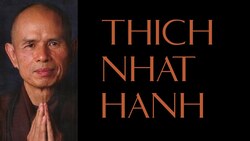
Zen teacher Thich Nhat Hanh said,
"The basis of Right Action
is to do everything in
mindfulness."
"The basis of Right Action
is to do everything in
mindfulness."
If it feels like the Right Action for you, join us at Sunday Sunset Yoga on the Bay!
↧
↧
Ancient Tibetan Rites: Channel the Fountain of Youth through these Five Essential Daily Exercises
Have you heard of the Fountain of Youth?
Haven't you ever dreamed of a place where there was peace and security,
Where living was not a struggle but a lasting delight?
Of course you have.
So has every man since Time began.
Always the same dream.
Sometimes he calls it Utopia,
Sometimes the Fountain of Youth.”
-The Lost Horizon
Where living was not a struggle but a lasting delight?
Of course you have.
So has every man since Time began.
Always the same dream.
Sometimes he calls it Utopia,
Sometimes the Fountain of Youth.”
-The Lost Horizon

The mythology of the Fountain of Youth has been in our consciousness since about the 5th Century BCE. Floating through whispers of spiritual seekers, an eastern myth may hold this secret of long life. Legends spoke of a mysterious spring that would restore the youth of anyone who drank or bathed in its waters. Water is certainly a life enhancing element, but could such a water source have magical properties to turn back time?
A fountain is a source or origin of a desirable quality. Youth is the quality or state of being young, especially as associated with freshness, energy, resilience, and vitality. Is there such a thing as an origin of vitality? Most of us associate aging as the opposite of youth, when we become boring, tiresome, or wrinkled. Can we reverse, pause, or slow down the aging process?
"To keep the heart unwrinkled,
to be hopeful, kindly, cheerful, reverent-
-that is to triumph over old age."
- Thomas Baile
to be hopeful, kindly, cheerful, reverent-
-that is to triumph over old age."
- Thomas Baile
Perhaps, the Fountain of Youth is not a physical place, but instead a spiritual practice that we each may be able to access through will, discipline, and focusing our minds over matter. High in the magical mountains of the Himalayas, generations of Tibetan monks have passed down a series of exercises with mystical, age-reversing properties.
The book, Ancient Secret of the Fountain of Youth tells a story about and English colonel who dwelled in Tibet with monks and was impressed with their youthful, vibrant health. He claimed that the exercises were so potent they can turn back time turning grey hair black, improving eyesight and memory and banishing wrinkles.
These practices are said to be a form of Tibetan yoga similar to the yoga series that originated in India. They could be 2,500 years old, but because of China’s invasion and destruction of so many temples and ancient text from Tibet in 1949, the origin is not certain. Each rite is associated with one of the elements: earth, air, fire, water, and space.
These practices are said to be a form of Tibetan yoga similar to the yoga series that originated in India. They could be 2,500 years old, but because of China’s invasion and destruction of so many temples and ancient text from Tibet in 1949, the origin is not certain. Each rite is associated with one of the elements: earth, air, fire, water, and space.
“Chakras spinning either too quickly or too slowly produce ill health.
From this we gather that the
Five Rites coordinate, even enhance,
the spinning of the seven energy centers of the human body;
they help distribute pure life force energy
to the endocrine glands and in turn to the body’s organs and processes.
When this happens, the result is longevity and rejuvenation.”
― Peter Kelder, The Eye of Revelation 1939
From this we gather that the
Five Rites coordinate, even enhance,
the spinning of the seven energy centers of the human body;
they help distribute pure life force energy
to the endocrine glands and in turn to the body’s organs and processes.
When this happens, the result is longevity and rejuvenation.”
― Peter Kelder, The Eye of Revelation 1939
2017 was marked by major changes in my life. In addition to becoming a Vegetarian, then a Vegan, giving up daily caffeine and traveling all the way around the world on a solo expedition, I also started a fasting practice while studying under the famous spiritual leader, Ray Maor. In his Pranic Living workshops, Ray teaches The Five Tibetan Rites as one of the methods to feel rejuvenated, by tapping into the Life Force Energy that is within and all around us.
This series of exercises, The Five Ancient Tibetan Rites, increases overall health and immunity as it addresses the whole body. These acts help our emotional body deny excess desires by increasing self-discipline. The entire routine can be completed in less than 10 minutes. I practiced these quick but intense, well-rounded exercises daily for six months instead of eating breakfast. I felt alive and renewed each time. Some of the additional physical benefits include increased energy, improved strength and coordination, improved emotional and mental health weight loss, better memory, better pain relief, digestion, and sleep.
I recommend doing the rites in the morning rather than the evening, because they do fuel your energy. Remember your breath is the key to every movement in yoga. Move with your breath, inhaling on the exertion and exhaling on the release. Begin by practicing three to seven repetitions of each rite, and build up to 21 reps. Seven is a very spiritual number and the number three symbolizes the power of the trinity in many cultures. Tibetans believe 21 is a perfect, mystical number. The number 21 is so optimistic and enthusiastic that it tends to inspire others. I wonder if that’s why the worldwide popular clothing store brand decided to name their store Forever 21.
I recommend doing the rites in the morning rather than the evening, because they do fuel your energy. Remember your breath is the key to every movement in yoga. Move with your breath, inhaling on the exertion and exhaling on the release. Begin by practicing three to seven repetitions of each rite, and build up to 21 reps. Seven is a very spiritual number and the number three symbolizes the power of the trinity in many cultures. Tibetans believe 21 is a perfect, mystical number. The number 21 is so optimistic and enthusiastic that it tends to inspire others. I wonder if that’s why the worldwide popular clothing store brand decided to name their store Forever 21.
Rite #1- Spinning
Affirmation: "I am full of energy"
The Spin enhances the element of space energy. The vortex that the movements create allows you to replenish your body from the larger energy all around you. Spinning reminds me of Julie Andrews in the Sound of Music as she sings "The Hills are Alive!" She is soaking up the energy from pure nature all around her.
Rumi’s Sufi culture also values spinning, called Sufi whirling. Dervishes seek to reach the source of all perfection through abandoning one's ego, or personal desires, by listening to the music, focusing on the Divine, and spinning one's body in repetitive circles, which has been seen as a symbolic imitation of planets in the Solar System orbiting the sun.
With your arms spread out in a T-position, direct your gaze or drishti onto your right finger tips. Keep this gaze as you step your right foot to a 90-degree angle, then let you left foot meet it. Continue turning clockwise (Some sources say to spin in the direction that water drains out of your sink-which will change depending on which hemisphere you are in), towards the right.
When this feels comfortable and you’d like an additional challenge, try spinning a little faster. Keep your gaze on your right fingertips and count every time your fingers pass by your starting point. It helps to have a specific point of reference like a window or a pole.
At around 18 or 19 swirls, begin to slow down and lower your arms for the final few spins. Keep your gaze on your right hand until you arrive in mountain pose with your feet hip width distance apart and hands at your heart center. If you feel at all dizzy, close your eyes and take a few deep breaths in through your nose and out through your nose, expanding through your diaphragm to allow for a deeper breath.
Rite #2- Leg Raise
Affirmation: "My mind is clear and calm"
This exercise is designed to strengthen the abdominal muscles and core while focusing your third eye to your thighs.
Gently bend your knees and squat down until your sitting bones make contact with the earth and you recline all the way down. This exercise has a few variations, depending on your level of fitness, hamstring flexibility, or the condition of your neck. The easiest variation involves placing your hands, palms down, underneath your hips and rolling your shoulders behind you.
As you inhale, lift your straight legs and flexed toes up to the sky for the air element. Beginners can keep their head and shoulders grounded, but after you’ve been practicing these for a while, you should advance to lifting your upper torso on the inhale. On the exhale, relax your legs and torso back down.
The next variation would be to protect your neck by clasping your hands behind your neck. Other variations include reaching your arms overhead on the exhale, then reaching past your hips on the inhale as you rise.
After 21 repetitions of this exercise, curl your knees into your chest and rock side to side for a few breaths, then rock forward and back until you arrive on your knees for the next exercise.
Rite #3- Kneeling Back Bend
Affirmation: "I am flexible and receptive"
This flow works with spinal undulation and arching. It’s associated with the water element for the suppleness that it provides for the spine, like performing cat and cow from a different angle. You have the option to tuck your toes or just press the tops of your feet and toenails into your mat.
On the inhale, this pose looks like the popular Camel Pose in contemporary yoga. Make fists with your hands and bring them to the base of your lower back. Squeeze your elbows in towards each other and look up to the sky. Keep your hips aligned over your knees.
As you exhale, bring your chin in towards your chest, hug your belly in, curl your shoulders forward, sit back on your heels, and bring your hands to your knees.
Continue this pattern for 21 breaths then hold an open heart in Camel Pose or Reclined Hero for an additional three.
Rite #4- Reverse Table-Top
Affirmation: "I am strong and balanced"
The Tabletop takes the element earth, and its movements focus on stability, foundation and balance, giving us a solid base from which to form new ideas. It strengthens your arms, legs and glutes.
This practice connects the breath with Reverse Table Top and Staff Pose. To begin, extend your legs out in front of you. With your fingers facing your toes, plant your palms on both sides of your hips.
As you inhale, keep your arms straight and press into your heels. Your knees should rise to directly above your ankles and be level with your hips. Shoulders will rise in line with the knees and wrists while your gaze lifts up to the sky.
On the exhale, send your hips back down between your wrists, lift your feet back up and tuck your chin into your chest.
This pose connects with the earth element as you find grounding in all four limbs. After 21 breaths, take a few extra in Staff Pose (the position described in the exhale).
Rite #5- The Pendulum: Down-Dog/ Up-Dog
Affirmation: “I am positive and motivated”
The fifth and final rite is my favorite as it strengthens the entire body. Associated with fire, this exercise builds heat and excitement. To start, come into Downward Facing Dog, making a triangular shape with your body. From Staff Pose, cross your legs and walk your arms out in front of you. Press your hands into the mat with your fingers spread wide and index fingers pointing forward. Make sure that your index fingers and thumbs are active to protect your shoulders. Straighten your arms and roll your outer armpits towards the earth. Bend your knees, lift your hips and with this spinal length, descend through your heels.
On your next inhale, bring your shoulders over your wrists and send your hips down to be in line with your heels into a Plank Pose. Keep flowing all the way into Upward Facing Dog as you look up to the sky and reach your heart between your upper arms. Exhale as you use your core fire strength to lift your hips back up and press away from the earth.
After 21 repetitions, I like to take a few slow breaths in Twisting Downward Facing Dog then lower into Embryo Pose by bending my knees down to the mat and reaching my hands behind me.
If your body is not quite ready for this variation, you could also flow from Child’s Pose to Lion. Inhale in Child’s Pose, spread your knees as wide as the mat and bring your big toes together. Lower your hips back to your heels and reach your arms forward. Allow your head and neck to relax. Exhale as your shoulders rise above your wrists, hips descend and toes extend skyward. Inhale back into Child’s Pose. engenders equanimity and a sense of well-being. It makes you feel powerful and motivated.
Please try these rites yourself.
Do you feel more youthful?
Leave a comment or share if you enjoyed this post.
There is a fountain of youth:
it is your mind, your talents,
the creativity you bring to your life and the lives of people you love.
When you learn to tap this source,
you will truly have defeated age."
–Sophia Loren
it is your mind, your talents,
the creativity you bring to your life and the lives of people you love.
When you learn to tap this source,
you will truly have defeated age."
–Sophia Loren
↧
Love Yourself: Brahmacharya in Paris
“You yourself, as much as anybody in the universe deserves your love and affection.”
- Buddha
- Buddha
In order to have success in relationships, it is important to love yourself. And I’m not referring to obsession with appearance and selfies. I’m talking about a relationship with our true inner self, the Divine within.
"Your task is not to seek for love, but merely to seek and find all the barriers within yourself that you have built against it."
-Rumi
-Rumi
Brahmacharya
Our culture, and most cultures from around the world, try to send us the message that we need a romantic partner to complete us. According to ancient Patanjali and his wisdom imparted in the Yoga Sutras, one of the guidelines for ethical living (as outlined in the Yamas) is Brahmacharya. It means “walking with God.” Some cultures interpret this to mean celibacy, others say sexual integrity. It concerns moving away from the downward spiral of desire that manifests in forms such as addictions to drugs or chasing the opposite sex. Some interpretations suggest that when we do decide to come together in intimate relationships, they should align with our understanding of the highest truths.
Our culture, and most cultures from around the world, try to send us the message that we need a romantic partner to complete us. According to ancient Patanjali and his wisdom imparted in the Yoga Sutras, one of the guidelines for ethical living (as outlined in the Yamas) is Brahmacharya. It means “walking with God.” Some cultures interpret this to mean celibacy, others say sexual integrity. It concerns moving away from the downward spiral of desire that manifests in forms such as addictions to drugs or chasing the opposite sex. Some interpretations suggest that when we do decide to come together in intimate relationships, they should align with our understanding of the highest truths.
Walk with God
But what does it really mean to walk with God? Is God a bearded white man sitting up in the clouds? My understanding of the term God is something that is greater than our egoic selves- the Magnetic Intelligence that infuses everything on this earth and the entire Universe. The creator and the destroyer. Atoms, photons, cells: these building blocks work together with the help of a Life Force Energy to form the physical world that is constantly growing, changing, and transforming.
Consider the common phrase, “If you can’t see god in all, you can’t see god at all.”
When we walk through life with a deeper sense of awe and wonder, we are connecting with this force. Noticing the beauty all around us and cultivating a sense of abundance is one way to practice Brahmacharya. As I tap into this universal love, I feel the pure bliss of surrender, a trust that this benevolent, wise universe provides.
But what does it really mean to walk with God? Is God a bearded white man sitting up in the clouds? My understanding of the term God is something that is greater than our egoic selves- the Magnetic Intelligence that infuses everything on this earth and the entire Universe. The creator and the destroyer. Atoms, photons, cells: these building blocks work together with the help of a Life Force Energy to form the physical world that is constantly growing, changing, and transforming.
Consider the common phrase, “If you can’t see god in all, you can’t see god at all.”
When we walk through life with a deeper sense of awe and wonder, we are connecting with this force. Noticing the beauty all around us and cultivating a sense of abundance is one way to practice Brahmacharya. As I tap into this universal love, I feel the pure bliss of surrender, a trust that this benevolent, wise universe provides.
The famous love poet, Rumi, understood this concept when he stated,
"Could it be true that the one I love is everywhere.”
"Could it be true that the one I love is everywhere.”
Love
What does love really mean? Although there are many different cultural interpretations of this word, one of my favorite definitions of love is “warm attachment, enthusiasm, or devotion. Using sensual energy in devotion to the divine is a form of yoga called bhakti. Bhakti yoga is called "love for love's sake" and "union through love and devotion," creating a dynamic flow of energy from the heart chakra towards oneness with everything, nature. By focusing on the sacredness in each moment, I connect with peace and happiness deep within myself. When I walk with God, I stay connected with the divine in everything.
What does love really mean? Although there are many different cultural interpretations of this word, one of my favorite definitions of love is “warm attachment, enthusiasm, or devotion. Using sensual energy in devotion to the divine is a form of yoga called bhakti. Bhakti yoga is called "love for love's sake" and "union through love and devotion," creating a dynamic flow of energy from the heart chakra towards oneness with everything, nature. By focusing on the sacredness in each moment, I connect with peace and happiness deep within myself. When I walk with God, I stay connected with the divine in everything.
Paris
One of my favorite places to practice walking with God is in the City of Love and Light itself, Paris, France. Paris is considered one of the most beautiful cities in the world with its numerous parks, gardens, aesthetic architecture, sculptures that line the streets, charming cafes and restaurants, countless world famous art museums, and hidden surprises like the sparkles on the Eiffel Tower on the top of the hour. Everywhere I turn, there is something lovely to feel grateful for.
One of my favorite places to practice walking with God is in the City of Love and Light itself, Paris, France. Paris is considered one of the most beautiful cities in the world with its numerous parks, gardens, aesthetic architecture, sculptures that line the streets, charming cafes and restaurants, countless world famous art museums, and hidden surprises like the sparkles on the Eiffel Tower on the top of the hour. Everywhere I turn, there is something lovely to feel grateful for.
James Joyce says,
“There is an atmosphere of spiritual effort here.
No other city is quite like it.”
“There is an atmosphere of spiritual effort here.
No other city is quite like it.”
Eiffel Tower
The Eiffel Tower is a symbol of everlasting love for many couples from all over the world. Thousands of marriage proposals take place under the souring tower every year. The 20 thousand twinkling lights on the top of the hour create an enveloping magic that stirs excitement and a quality of mystery, the definition of romance.
Art Nouveau
Curvilinear long and asymmetrical lines taking the forms of flower stalks, vines, insect wings, peacock feathers, and other delicate natural objects infuses Paris architecture, interior design, and furniture as a form of art that developed from the Romanticism Era. This Art Nouveau movement from the end of the 18th century and well into the 19th tuned into nature and emphasized sense, emotions, and a call to spiritual renewal with humans to be at one with nature.
The Eiffel Tower is a symbol of everlasting love for many couples from all over the world. Thousands of marriage proposals take place under the souring tower every year. The 20 thousand twinkling lights on the top of the hour create an enveloping magic that stirs excitement and a quality of mystery, the definition of romance.
Art Nouveau
Curvilinear long and asymmetrical lines taking the forms of flower stalks, vines, insect wings, peacock feathers, and other delicate natural objects infuses Paris architecture, interior design, and furniture as a form of art that developed from the Romanticism Era. This Art Nouveau movement from the end of the 18th century and well into the 19th tuned into nature and emphasized sense, emotions, and a call to spiritual renewal with humans to be at one with nature.
Louvre
The original term "ville lumière" given to Paris is actually meant to mean "city of enlightenment" in terms of culture and learning. The most famous museum in the world, The Louvre museum, is filled with potential for learning about humankind's story throughout time and cultural changes. With that in mind, learning about your deepest self can enlighten your being and fill your heart with happiness.
The original term "ville lumière" given to Paris is actually meant to mean "city of enlightenment" in terms of culture and learning. The most famous museum in the world, The Louvre museum, is filled with potential for learning about humankind's story throughout time and cultural changes. With that in mind, learning about your deepest self can enlighten your being and fill your heart with happiness.
Sacré Coeur
The Sacré Coeur, Sacred Heart, is a gorgeous basilica built on the hill overlooking Paris. Recognizable by its characteristic and unpolluted white color, when this unique white stone has contact with rainwater, the thin protective layer that naturally coats the stone, secretes a white substance that hardens in the sun, thus reflecting more light.
Further, this hill served as a sanctuary for centuries before this cathedral was erected. People came to this place to deepen their “walk with God”: the Druids prayed there thousands of years prior, and the Romans built a temple to Mars in the 5thcentury.
This part of town even holds the name “Montmarte” which translates to “Mountain of Martyrs.” Although Christ is considered the sacred martyred heart that died as an act of love, during the time of the Christian persecution, executions on the top of the hill were common, including the legendary Saint-Denis.
The Sacré Coeur, Sacred Heart, is a gorgeous basilica built on the hill overlooking Paris. Recognizable by its characteristic and unpolluted white color, when this unique white stone has contact with rainwater, the thin protective layer that naturally coats the stone, secretes a white substance that hardens in the sun, thus reflecting more light.
Further, this hill served as a sanctuary for centuries before this cathedral was erected. People came to this place to deepen their “walk with God”: the Druids prayed there thousands of years prior, and the Romans built a temple to Mars in the 5thcentury.
This part of town even holds the name “Montmarte” which translates to “Mountain of Martyrs.” Although Christ is considered the sacred martyred heart that died as an act of love, during the time of the Christian persecution, executions on the top of the hill were common, including the legendary Saint-Denis.
“To know yourself is the beginning of a life-long romance.”
-Oscar Wilde
-Oscar Wilde
Human Figure Abstract Art
The human figure is portrayed in such a variety of ways throughout many different art movements and mediums throughout museums and parks in Paris. I particularly love the abstract forms of Henry Moore and his larger than lifesize “The Festival Reclining Figure” sculpture in the Jardin des Tuileries. It reminds us to love and appreciate the body that we have now, with all of its curves and unique forms. Yoga teaches us to be kinder to ourselves, accepting this blessing of a body for what it can do now, but ultimately it acts as a temple for the inner light of love.
The human figure is portrayed in such a variety of ways throughout many different art movements and mediums throughout museums and parks in Paris. I particularly love the abstract forms of Henry Moore and his larger than lifesize “The Festival Reclining Figure” sculpture in the Jardin des Tuileries. It reminds us to love and appreciate the body that we have now, with all of its curves and unique forms. Yoga teaches us to be kinder to ourselves, accepting this blessing of a body for what it can do now, but ultimately it acts as a temple for the inner light of love.
Mary Dunbar states,
“We are each gifted in a unique and important way. It is our privilege and our adventure to discover our own special light.”
Every time we act in harmony with our authentic self and our heart, we earn our respect.
“We are each gifted in a unique and important way. It is our privilege and our adventure to discover our own special light.”
Every time we act in harmony with our authentic self and our heart, we earn our respect.
“One has just to be oneself. The moment you accept yourself as you are, all burdens simply disappear. Then life is a sheer joy, a festival of lights.”
-Bhagwan Shree Rajneesh (Osho)
-Bhagwan Shree Rajneesh (Osho)
I hope you will fall more deeply in love with your inner Self!
In what ways does this city spark loving feelings for you?
Please contribute your thoughts in the comments section below.
In what ways does this city spark loving feelings for you?
Please contribute your thoughts in the comments section below.
↧
Svadhyaya for Presidents' Day
As many of us enjoy a long weekend due to a holiday off of work, some of us pause to consider why.
Presidents Day was created as a combination of celebrating the birthday of first President of the USA, George Washington, and the birthday of another notably important president, Abraham Lincoln, but has grown to extend honor to all of the 46 presidents.
While not everyone agrees with the politics and decisions of every president, many of them have led with some famous words of wisdom.
By taking the time to study words of wisdom and how they can help us deepen the connection between our little self and deeper self, we practice a limb of yoga from Patanjali's Niyamas called Svadhyaya.
It's part of the Eight Limbed Path to Enlightenment that means "to study the self." In his Yoga Sutras Patanjali states, "Study thy self, discover the divine." II.44
Here's some Yogi-like wisdom from the top ten most popular US presidents...
Presidents Day was created as a combination of celebrating the birthday of first President of the USA, George Washington, and the birthday of another notably important president, Abraham Lincoln, but has grown to extend honor to all of the 46 presidents.
While not everyone agrees with the politics and decisions of every president, many of them have led with some famous words of wisdom.
By taking the time to study words of wisdom and how they can help us deepen the connection between our little self and deeper self, we practice a limb of yoga from Patanjali's Niyamas called Svadhyaya.
It's part of the Eight Limbed Path to Enlightenment that means "to study the self." In his Yoga Sutras Patanjali states, "Study thy self, discover the divine." II.44
Here's some Yogi-like wisdom from the top ten most popular US presidents...
George Washington
“Happiness depends more upon the internal frame of a person’s own mind, than on the externals in the world.”
Abraham Lincoln
“Do I not destroy my enemies when I make them my friends?”
Thomas Jefferson
“Honesty is the first chapter in the book of Wisdom.”
Franklin D. Roosevelt
“The only thing we have to fear is fear itself.”
Theodore Roosevelt
“We must dare to be great; and we must realize that greatness is the fruit of toil and sacrifice of great courage.”
Woodrow Wilson
“The object of love is to serve, not win.”
Harry Truman
“It is amazing what you can accomplish if you do not care who gets the credit.”
Dwight Eisenhower
“The supreme quality for leadership is unquestionably integrity.”
John F. Kennedy
"As we express our gratitude, we must never forget that the highest form of appreciation is not to utter words, but to live by them."
Ronald Reagan
“There’s purpose and worth to each and every life.”
Barack Obama
“Love and hope can conquer hate.”
↧
Dancing Yoga for Carnival
Carnival is a Catholic influenced European folk culture holiday celebrated all around the world. It’s an opportunity to indulge and have fun before the forty-day period of fasting for Lent.
To fast is to choose to go for periods of time without eating and/or drinking. Modern-day practitioners choose what they would like to give up, such as meat, caffeine, chocolate, or alcohol. Although some more serious believers will consume only water for this entire time period. In effort to deepen their spiritual practice, many Christians choose the time period of Lent, leading up to Easter, to observe the forty days that Jesus fasted in the desert.
Fasting is also a unifying practice of many ancient cultures including Judaism, Islam, and Hinduism. Fasting usually involves a moral commitment to purify the body and soul as well as increase God-consciousness. Now, modern-day science is confirming its power to transform us by boosting the immune system and detoxifying the body, physically, emotionally, mentally, and spiritually.
Fasting is also a unifying practice of many ancient cultures including Judaism, Islam, and Hinduism. Fasting usually involves a moral commitment to purify the body and soul as well as increase God-consciousness. Now, modern-day science is confirming its power to transform us by boosting the immune system and detoxifying the body, physically, emotionally, mentally, and spiritually.
Saucha is one of the Niyamas from the Eight Limbs of Yoga, discussed in the ancient Indian text Patanjali's Yoga Sutras. Saucha means cleanliness. Cleanliness indicates a sense of self-respect. On a basic physical level it applies to how we clean ourselves. This cleanliness also applies to they types of food and drink that we ingest inside of our bodies. We’ve all heard the popular phrase, “You are what you eat,” so the cleaner our food is, the cleaner we’re going to be inside and out. If you suffer from headaches, constipation, diarrhea, skin troubles, fatigue, irritability, excess weight, bloating or any other number of symptoms, your body needs to cleanse.
Historically, during the traditional cleansing forty days of Lent, partying and eating pleasurable foods like meat, sugar, fats, or alcohol are prohibited. Therefore, as early as the tenth century in Venice, Italy, before the abstention, entire communities came together to consume all of their remaining milk, butter, animal products, desserts, and alcohols so that they wouldn’t expire and go to waste during the fast.
This evolved into a festive time called Carnevale, which translates to “farewell to meat.” What is yin without the yang? Lent is a time for rejecting the body’s desires, but Carnival, like Tantra philosophy, involves embracing and merging the material and spiritual worlds. Carnevale celebrations grew throughout Europe during the middle ages and Renaissance. The indulgence begins on the Tuesday before the Sunday that Lent commences and has been given the name “Fat Tuesday” or “Mardi Gras” by the French.
Carnival typically involves lots of parades and parties. During this reversal ritual, standards about ideal social roles and conducts and are postponed. Extravagant costumes and masks allow folks to set aside their everyday personality and experience a heightened sense of social unity.
Carnival typically involves lots of parades and parties. During this reversal ritual, standards about ideal social roles and conducts and are postponed. Extravagant costumes and masks allow folks to set aside their everyday personality and experience a heightened sense of social unity.
The Carnaval festival in Brazil is the most popular event of the year. In Rio de Janeiro it is “The Greatest Show on Earth.” Masquerade balls featuring the waltz and polka of the late ninetieth century evolved into the Samba through African slaves reveling in refuge from harsh conditions. The name samba comes from the Portuguese word sambar, which means ‘to dance to rhythm.’ It is a free-flowing style that can be performed solo or with a partner and to a variety of music. Now the Samba is the national dance of Brazil. Carnival is a chance for Samba schools of dancers to compete through elaborate routines that tell themed stories. Over a million spectators join together at the Sambadrome to observe, dance, and party on these days leading up to Lent each year.
The asana or postures portion of the yoga practice can feel like a dance. Vinyasa yoga connects movement with breath in flowing sequences of poses. When one flows through a conscious movement with complete concentration, the intention manifests and aligns through the divine within and around. Likewise Swami Kriyananda states, “yoga postures are the outward expressions of the inner movements of the soul.”
Practicing Bhakti Yoga, Yoga of Heart’s Devotion (or union of love and devotion), helps to tap into the inspiration to dance and move the body with the breath. A senior Anusara Yoga teacher, Sianna Sherman states, “Bhakti means whatever strikes your heart with beauty, whatever hits the mark of your heart and inspires you to just feel the love." It’s about creating a dynamic flow of energy from the heart chakra; to be motivated by love and the desire to live more in the heart.
Practicing Bhakti Yoga, Yoga of Heart’s Devotion (or union of love and devotion), helps to tap into the inspiration to dance and move the body with the breath. A senior Anusara Yoga teacher, Sianna Sherman states, “Bhakti means whatever strikes your heart with beauty, whatever hits the mark of your heart and inspires you to just feel the love." It’s about creating a dynamic flow of energy from the heart chakra; to be motivated by love and the desire to live more in the heart.
Dance and Samba related yoga postures
for your Carnival week:
Dancer Pose
Chair Pose Shoulder Rolls
Warrior Two
Flowing From the Heart
High Lunge Flodeo Arms
Do you celebrate Carnival?
Do you have a fasting practice?
What are your favorite dancing yoga moves?
Please share your thoughts in the comments section.
↧
↧
Palm Sunday Palm Tree of Yoga
Palm Sunday celebrates the laying of palm leaves in front of Jesus’ path, as he rode into Jerusalem on a donkey, from the Mount of Olives. In Ancient Rome, a palm frond, and even the tree itself, is one of the most common representations of victory. Victory signals an end to a conflict, therefore, the palm developed into a symbol of peace. The donkey is also a symbol of peace, whereas the horse is a symbol of war.
In the Gospel of John he declares,
“See, your king comes to you, righteous and victorious, lowly and riding on a donkey...
they took palm branches and went out to meet Him."
“See, your king comes to you, righteous and victorious, lowly and riding on a donkey...
they took palm branches and went out to meet Him."
The palm has been a significant symbol since the beginning of civilization. It was considered sacred in Mesopotamian religions and represented immortality in ancient Egypt. A palm branch was awarded to victorious athletes in ancient Greece and in Judaism, a closed frond of the date palm is part of the festival of Sukkot. Muhammad leaned against a palm while speaking, built his home out of palm and raised the first mosque as a roof place on palm trees. In western Christian art, a picture of a palm on a tomb meant that a martyr was buried there.
In ancient India, holy men called sadhus would meditate in Tree Pose (Vrksasana) for long periods of time as a practice of self-discipline.
B.K.S. Iyengar, often referred to as "the father of modern yoga" has been credited with popularizing yoga, first in India and then around the world. He relates Pantajali's 8 Limbed Path to the parts of a tree in his book, Tree of Yoga. Iyengar discusses how the tree of self needs to be taken care of.
B.K.S. Iyengar, often referred to as "the father of modern yoga" has been credited with popularizing yoga, first in India and then around the world. He relates Pantajali's 8 Limbed Path to the parts of a tree in his book, Tree of Yoga. Iyengar discusses how the tree of self needs to be taken care of.
Roots of Universal Morality
Our roots of our whole being are the foundation. Just as a palm tree extends its roots in many directions to support the entire tree, these roots are Pantajali's Yamas and our guidelines for universal morality to becoming a unified part of humanity. The yamas consist of Ahimsa (kindness, thoughtfulness, non-violence), Satya (Truthfulness), Asetya (non-stealing), Aparigraha (generosity, not-hoarding or jealousy), and Brahmacharyara (intimate/sexual integrity or abstinance). These guidelines are meant for our treatment of other living beings as well as our own body.
Iyengar explains that we must treat each side of our body as equals. When we overstretch or strengthen one side, it does violence to our body and can cause injury. I've noticed lately that my right shoulder has some sharp pains sometimes. I finally figured out that its because I use it for carrying and opening objects much more than my left side. I'm striving to become ambidextrous in this sense to find balance and thoughtful consideration for my body.
Iyengar explains that we must treat each side of our body as equals. When we overstretch or strengthen one side, it does violence to our body and can cause injury. I've noticed lately that my right shoulder has some sharp pains sometimes. I finally figured out that its because I use it for carrying and opening objects much more than my left side. I'm striving to become ambidextrous in this sense to find balance and thoughtful consideration for my body.
Trunk of Personal Observances
Then comes the trunk, along with the principles of Niyama, self-discipline and personal observances. Just as the trunks of many palm trees are shaved and cleaned up to make room for the space around it and new growth. This refers to Saucha, (cleanliness), Santosha (contentment), Tapas (heat, self-dicipline, directing your energy), Svadhaya (self-study), and Ishvarapranidhara (surrender to and celebration of the spiritual). A palm tree cultivates contentment through light. We can surrender to the wind of change in our lives and try to accept every possibility to grow. We can cleanse our bodies by physically washing them, detoxing, and through twists in our physical yoga practice. When we twist from the core, we massage our lower organs and rejuvenate the juices in our spine.
Branches or Fronds as Physical Postures
From the trunk, the branches of asana emerge, physical postures. The Palm Tree does not have distinct branches, but instead, shafts that rise out of the crown shaft at the top of the trunk and form the axis for the large leaves that are sometimes comprised of even more leaflets. We need to stay active in our poses, checking to keep all of our parts aligned, just as the axis shaft of the palm tree has to keep the leaflets connected. We need to take the version or modification of the pose that is working for our body today, being careful not to overdue it and injure ourselves, but also not being lazy, instead, gently experimenting with our limits and finding the place between tension and ease as we strengthen, balance, and stretch our body to prepare for deeper meditation.
Leaves as Breathing Exercises
The leaves grow from the branches, whose interaction with air supplies energy to the whole tree through Pranayama, breathing techniques. When we inhale, our brain moves forward like a leaf. When we exhale, it goes backward. Pranayama is the bridge between the physical and the spiritual as we notice the leaves dancing in the wind as our body transforms oxygen into hydrogen. We tap into a sense of the present moment when we focus on how shallow or deep, short or long our breaths become.
Bark as Tuning Out the Senses
The bark corresponds to Pratyahara, which is the inward journey of the senses from the skin towards the core of the being. In other words, taste, sound, touch, sight, and smell send their impressions to the mind where they are stored. Then the mind longs for further experiences and bypasses intelligence while it desires more and more or this stimulation. Our bark has the power to rescue us from the delusion of sensory experiences when we take a vacation from our minds we can tune inward to find stillness, gratitude and quiet.
Sap as Concentration
The sap of the tree carries the attention to the core of our being, dharana is concentration inward. It is the juice which flows within the branches and the trunk of the tree towards the root. When you are fully concentrated in a pose or on an object and your breath is consciously moving throughout your body, there is no room for distracting thoughts to arise.
Flower and Meditation
When the tree is healthy, then the flowers blossom out of it. Thus dhyana, meditation is the flower. This contemplation results from listening to the nerves and sensations in your body and making adjustments to find equal balance everywhere, oneness.
Fruit (Coconut) as Peace
When the flower is transformed into fruit (coconuts), this is known as samadhi, meaning freedom, peace, and unity. We can only produce this fruit through practice and experience. Sometimes we find samadhi in the final resting pose of a yoga class, Svasana. The seed of our soul, consciousness, is hidden in our fruit and we can find it when we are totally absorbed, in the moment.
Practice Palm Tree Pose and Much More
Sunset Sunday at 6:30pm
Sunset Sunday at 6:30pm
↧
Whirling Yoga of Rumi
“You were born with wings.
Why prefer to crawl through life?”
-Rumi
Why prefer to crawl through life?”
-Rumi
Have you ever encountered bliss
by spinning around
in circles?
by spinning around
in circles?
I remember moments from my childhood, particularly when I was dressed in a ballerina’s tutu, standing in a field of grass, when I felt overcome by the desire to twirl. I relaxed my arms and closed my eyes as my feet shifted in a rhythmic pivot through the cut grass. The air gently massaged my skin and love flooded my being as I took continuous steps of letting go.
Often times in our culture, we are trained to stay safe. Elders discourage us from this action by saying, “You will become dizzy and fall and hurt yourself!” Choosing safety sometimes means giving into our ego’s desire to survive. But, through the action of spinning, we tap into an even greater aspect of adventure and surrender to a greater loving force.
“Close your eyes,
fall in love,
stay there.”
-Rumi
fall in love,
stay there.”
-Rumi
As the most famous love poet in the world, a thirteenth century man, Jalal-ad-Din-Muhammad Rumi, commonly known as just Rumi, found poetry, music, and dance as paths to connect with God, or the Divine. With roots in Islam, he expanded and taught the universality of all religious experience with the goal to achieve ultimate union. Similar to the message of the great prophets Buddha, Muhammad and Jesus, he imparts that through the journey of life, if the seeker turns towards the truth, grows through love, and abandons the ego then, he or she will find truth and arrive at peace. Then, the seeker can return from the spiritual journey with maturity and love to serve all of creation without discrimination of nations, classes, races, and beliefs.
During his path to find this enlightenment, he started whirling as a type of dance. It is believed that as he whirled, his followers would record the poetry that sprang forth from within him. Rumi himself whirled for thirty-six hours unceasingly and finally fell, because the body could not spin anymore. But when he opened his eyes, he had transformed into another man.
During his path to find this enlightenment, he started whirling as a type of dance. It is believed that as he whirled, his followers would record the poetry that sprang forth from within him. Rumi himself whirled for thirty-six hours unceasingly and finally fell, because the body could not spin anymore. But when he opened his eyes, he had transformed into another man.
“Stop acting so small.
You are the universe in ecstatic motion.”
-Rumi
You are the universe in ecstatic motion.”
-Rumi
“Life is a balance between holding on
and letting go.”
-Rumi
and letting go.”
-Rumi
He introduced spinning our body in repetitive circles as a conscious process that connects us with the dynamic continuum, embedded into the mysteries of the universe, in the form of the spiral. We see the sacred spiral in hurricanes, tornadoes, and even our own genetic information (DNA). It’s a symbolic imitation of planets in the Solar System orbiting the sun. Science has shown us that the fundamental condition of our existence is to revolve. A human's very existence depends on this movement as in the revolution of the atoms. Through this action of whirling, we join with the Life-Force energy that connects everything within the entire universe.
“Do not feel lonely,
the entire universe is inside you.”
-Rumi
the entire universe is inside you.”
-Rumi
Since then, Rumi’s Sufi culture performs spinning by people who call themselves Whirling Dervishes. Through this spinning, they seek to reach the source of all perfection. In these ecstatic moments of spinning, they abandon the ego’s personal desires, tune into the music, and focus on the divine within. Dervishes whirl with the right arm directed to the sky, ready to receive god’s beneficence and left hand turned toward the earth for a more grounded gaze.
“Don’t you know yet?
It is YOUR light
that lights the world.”
-Rumi
It is YOUR light
that lights the world.”
-Rumi
“Love is the bridge
between you
and everything.”
-Rumi
between you
and everything.”
-Rumi
Yoga means “to yolk” or “unify” the mind, body, and spirit. With the same goal of yoga, spinning or whirling involves body posturing, turning movements, mental focus, and union with the spiritual force.
In 2017 I attended the International Yoga Festival in Rishikesh, India. One of the workshops I attended involved Rumi inspired whirling in a class titled Rumi, Love, Meditation led by a Turkish instructor, Mert Güler.
Although most of us wore contemporary yoga clothes, instead of the traditional mystical sect of whirling dervish attire, with white skirts and camel hats, enthusiastic Mert encouraged all of us to tap into the source, our central place of beingness. He instructed us to stand straight as in mountain pose, Tadasana, and think of our spine as an axis. We spread our arms out wide like wings and begin to turn towards our heart, counterclockwise, just as the earth and moon spin counterclockwise, so do the orbiting planets and galaxies through space and time. We stepped with our right foot to pivot along the left. Similar to the gaze in Warrior Two Pose (Virabadrasana), we directed our focus, drishti, over our left fingertips.
We began in slow motion for only a few minutes. Then we built up to spinning a little faster. We added variations with our arms by lifting the right hand slightly up and our left one down. In theory, we received spiritual energy in our right hand, transferring it through ourselves, and releasing it into the earth via our left hand. Then we diversified our spin by trying partner swirls and then holding hands in group circular movements. This sense of connection helped to open up the yogic union with all living beings, the love that unites us all.
We finished this two-hour workshop with a final fifteen minutes of continuous whirling. I felt like Julie Andrews, the protagonist Maria in the Sound of Music, whirling in the hills filled with life, heart beating with the wings of the birds that fly from the lakes to the trees. I dropped into a time warp; when I visited Salzburg, Austria, in 2016. I found a field that reminded me of Maria’s connection with nature and music. I spun for a few minutes with the birds, flowers, and breeze.
In 2017 I attended the International Yoga Festival in Rishikesh, India. One of the workshops I attended involved Rumi inspired whirling in a class titled Rumi, Love, Meditation led by a Turkish instructor, Mert Güler.
Although most of us wore contemporary yoga clothes, instead of the traditional mystical sect of whirling dervish attire, with white skirts and camel hats, enthusiastic Mert encouraged all of us to tap into the source, our central place of beingness. He instructed us to stand straight as in mountain pose, Tadasana, and think of our spine as an axis. We spread our arms out wide like wings and begin to turn towards our heart, counterclockwise, just as the earth and moon spin counterclockwise, so do the orbiting planets and galaxies through space and time. We stepped with our right foot to pivot along the left. Similar to the gaze in Warrior Two Pose (Virabadrasana), we directed our focus, drishti, over our left fingertips.
We began in slow motion for only a few minutes. Then we built up to spinning a little faster. We added variations with our arms by lifting the right hand slightly up and our left one down. In theory, we received spiritual energy in our right hand, transferring it through ourselves, and releasing it into the earth via our left hand. Then we diversified our spin by trying partner swirls and then holding hands in group circular movements. This sense of connection helped to open up the yogic union with all living beings, the love that unites us all.
We finished this two-hour workshop with a final fifteen minutes of continuous whirling. I felt like Julie Andrews, the protagonist Maria in the Sound of Music, whirling in the hills filled with life, heart beating with the wings of the birds that fly from the lakes to the trees. I dropped into a time warp; when I visited Salzburg, Austria, in 2016. I found a field that reminded me of Maria’s connection with nature and music. I spun for a few minutes with the birds, flowers, and breeze.
“I am not this hair,
I am not this skin,
I am the soul that lives within.”
-Rumi
I am not this skin,
I am the soul that lives within.”
-Rumi
These fifteen minutes created the ultimate transcendence. A huge smile flooded over my face as I began to spin faster and faster. I didn’t want this to end. I entered into almost a hypnotic trance, complete bliss and love. I synchronized with my creator and center. When the music stopped, we gradually slowed down, descended our arms and gaze and eventually reached a halt. With feet spread slightly wider than our hips, we fixed our stare at one point of the floor for several deep breaths to re-stabilize. I found another amazing way to get high on spirit!
“The universe is not outside of you.
Look inside yourself;
everything that you want,
you already are.”
-Rumi
Look inside yourself;
everything that you want,
you already are.”
-Rumi
Photo with Mert Güler after the Rumi, Love, Meditation experience
"There is a candle in your heart,
ready to be kindled.
There is a void in your soul,
ready to be filled.
You feel it, don’t you?"
-Rumi
ready to be kindled.
There is a void in your soul,
ready to be filled.
You feel it, don’t you?"
-Rumi
↧
Flamingo Yoga
“What the flamingo teaches a child...
is that gravity is not just a limitation,
but also a possible partner in an intriguing,
potentially joyful game.”
– John Burnside
is that gravity is not just a limitation,
but also a possible partner in an intriguing,
potentially joyful game.”
– John Burnside
It’s summertime. A time to splish and splash and balance like our friends the flamingos. Flamingos as spirit animals relate to personalities who are flamboyant, fun, very expressive, and surrounded by like-minded people.
It’s summertime. A time to splish and splash and balance like our friends the flamingos. Flamingos as spirit animals relate to personalities who are flamboyant, fun, very expressive, and surrounded by like-minded people.
Diversity/ Integrity
Flamingo is a term used for six similar species of birds that have a wide geographical range. They frolic in tropical and subtropical regions on every continent except Australia and Antarctica. This diversity, combined with their flock being called a flamboyance (from a couple dozen to hundreds or even millions), is one reason why the LGBT community displays the flamingo as a symbol, especially during their annual summer Pride festivals. They aim to create a world free of prejudice and bias while forming diverse communities of people who share the same values of respect and integrity. In the context of Christianity and Judaism, they can also symbolize the ability to filter out lies and the need to speak only the truth from filtering the muddy water to find their crustacean food.
Flamingo is a term used for six similar species of birds that have a wide geographical range. They frolic in tropical and subtropical regions on every continent except Australia and Antarctica. This diversity, combined with their flock being called a flamboyance (from a couple dozen to hundreds or even millions), is one reason why the LGBT community displays the flamingo as a symbol, especially during their annual summer Pride festivals. They aim to create a world free of prejudice and bias while forming diverse communities of people who share the same values of respect and integrity. In the context of Christianity and Judaism, they can also symbolize the ability to filter out lies and the need to speak only the truth from filtering the muddy water to find their crustacean food.
Romance
In Aztec traditions, flamingos were symbols of love and passion, as well as healing due to their elaborate courtship rituals, romantic appearance, and parental dedication. They form intense pair bonds and rear their young together (building a nest together and taking turns to sit on their egg that incubates for a month).
Word Origins
An accurate cave painting of a flamingo, found in the south of Spain, dates back to 5,000 B.C. And, flamingos were significant in Egyptian mythology as a creature associated with the sun god, Ra. In Spanish, “flamenco” is connected to two things: a bird and an artistic expression of culture. The movements made during the dance are associated to those made by the elegant bird.
The word 'flamingo' comes from the Latin word for 'fire' signifying their bright pink feathers. These brilliant feathers turn from greyish white at birth to magenta after years of eating beta-carotene found in the crustaceans (lobsters, shrimps and plankton).
An accurate cave painting of a flamingo, found in the south of Spain, dates back to 5,000 B.C. And, flamingos were significant in Egyptian mythology as a creature associated with the sun god, Ra. In Spanish, “flamenco” is connected to two things: a bird and an artistic expression of culture. The movements made during the dance are associated to those made by the elegant bird.
The word 'flamingo' comes from the Latin word for 'fire' signifying their bright pink feathers. These brilliant feathers turn from greyish white at birth to magenta after years of eating beta-carotene found in the crustaceans (lobsters, shrimps and plankton).
Breath of Fire
In yoga, we practice Breath of Fire. Breath of Fire is a rhythmic breath with equal emphasis on the inhale and exhale, no deeper than sniffing. It’s done by pumping the naval point towards the spine on the exhale and releasing the naval out on the inhale. It’s practiced through the nostrils with mouth and eyes closes. It generates heat and releases natural energy throughout the body, improving the digestive system, while strengthening and balancing the nervous system.
In yoga, we practice Breath of Fire. Breath of Fire is a rhythmic breath with equal emphasis on the inhale and exhale, no deeper than sniffing. It’s done by pumping the naval point towards the spine on the exhale and releasing the naval out on the inhale. It’s practiced through the nostrils with mouth and eyes closes. It generates heat and releases natural energy throughout the body, improving the digestive system, while strengthening and balancing the nervous system.
Balance
Flamingos often only stand on one of their long legs. They balance in this way with effortless grace, and can even sleep in this position.
In the asana practice of yoga, we perform a variety of postures in which we stand only on one leg, imitating the flamingo.
Flamingos often only stand on one of their long legs. They balance in this way with effortless grace, and can even sleep in this position.
In the asana practice of yoga, we perform a variety of postures in which we stand only on one leg, imitating the flamingo.
5 Benefits of Balancing on One Leg:
- Enhances Focus and Concentration
- Improves Neuromuscular Coordination and Body Awareness
- Strengthens Lower Body- Glutes, Legs, Ankles
- Builds Joint Stability and Agility
- Supports Good Posture with Core Activation
How to Balance on One Leg Like a Flamingo
(Variation of One-legged Mountain Pose, Tree, Dancer, Warrior 3)
- Begin in standing Mountain Pose with your feet hips width distance apart and parallel on the outer edges.
- Direct your gaze to focus on one point that isn’t moving.
- This is called a drishti.
- Start with something on the ground, then as you advance in your balancing posture, let your gaze move up to the horizon, then the sky, then even try closing your eyes in the future.
- Remember that it’s ok to fall out of the pose. If you notice that you are starting to fall, try to land safely. Then find your grounding and try again. When you focus all your attention on the present moment, it becomes meditation.
- Shift your weight over to your right leg and float the left knee up to your chest for One-Legged Mountain Pose.
- Inhale to lengthen the spine and reach the crown of the head up to the sky.
- Exhale to wrap your hands around your left shin.
- Make three circles with your ankle, each direction, to match your breath.
- Option to set your left foot back down and rest in Mountain pose for a few breaths before repeating on the other side, or continue balancing and move into the next postures (if you have any issues with your ankles or knees, take Mountain Pose in between).
Transition to Tree Pose
- Open your left knee out to the left and place your left heel just above your right ankle, on your calf, or all the way up to your inner upper thigh.
- Inhale press the left foot into the right leg just as the right leg pushes back to the left leg.
- Exhale activate your core strength.
- Inhale, reach the arms up to the sky, palms turn towards each other.
- Exhale, turn your palms down and flap your wings back down to your sides.
- Continue to breathe gracefully in through the nose and out through the nose for five slow breaths.
- Take a rest in Mountain Pose for a few breaths, or continue to the next balancing variation.
Dancer
- Inhale release the left foot from the right leg and bring it to tap your bum.
- Exhale, reach around to grab ahold of your ankle or foot.
- Send the heart forward and shoulders back.
- Inhale, reach the right arm overhead, alongside the ear.
- Exhale, kick back into your left hand.
- Bow forward and open the side ribs and neck.
- Stay present with your breath.
- Inhale again to reach up and exhale to lean forward for the next three to five breaths.
- Take a rest in Mountain Pose for a few breaths, or continue to the next balancing variation.
Warrior 3
- Exhale to release the left leg straight out behind you to form a right angle with the right leg.
- Toes can point or flex.
- Inhale, broaden the collar bones.
- Keep your torso parallel with the earth.
- Inhale, stretch the arms out to your sides with the fingers wide and active.
- Exhale, engage the abdominals.
- Inhale, squeeze the shoulder blades towards each other.
- Exhale, lower your fingertips to the earth.
- Link your flapping wing movement with your next three to five breaths.
- Release into Mountain Pose and shake out your hips.
- Repeat the sequence on the other side.
Lets cultivate Flamingo energy this week:
Vibrant,
Outgoing,
Balanced,
and
Full of Integrity!
Vibrant,
Outgoing,
Balanced,
and
Full of Integrity!
↧
Downward-Facing Dog Days of Summer
“Every dog must have his day.”
~ Jonathan Swift
~ Jonathan Swift
Dog Days are historically associated with the hottest days of summer and the period following the rising of the Dog Star, Sirius, from July 3 to August 11 each year in the Northern Hemisphere.
In ancient Greece and Rome, the Dog Days were believed to be a time of drought, bad luck, and unrest, when dogs and people would be driven mad by the extreme heat. However, in modern times, the Dog Days are associated purely with the time of summer’s peak temperatures and humidity.
“These are strange and breathless days, the dog days, when people are led to do things they are sure to be sorry for after.”
― Natalie Babbitt, Tuck Everlasting
― Natalie Babbitt, Tuck Everlasting
At Fun Yoga on the Bay, the Dog Days of Summer are our favorite time to practice many variations of Downward Facing Dog. Adho Mukha Svanasana is my “go to” inversion and what I believe to be the most well-rounded yoga posture. An inversion is any pose where the heart is above the head. It is also one of the safest and most accessible ways to practice being upside down.
Benefits of Practicing Downward-Facing Dog
- Strengthens Hands, Wrists, Arms and Shoulders
- Stretches Legs and Feet
- Lengthens and Realigns Spine to Improve Posture
- Boosts circulating energy and immune system
- Relieves stress and mental fogginess
Getting Started
- To get into the pose, start in a tabletop position, knees aligned under hips and wrists under shoulders.
- Inhale align the wrist creases to the front edge of the mat.
- Exhale spread your fingers wide and point the index fingers forward.
- Inhale press all areas of your hand into your mat or the earth- fingertips, knuckles, and palms.
- (this helps to distribute the weight of your body so that it doesn’t all dump into the wrists)
- Exhale tuck your toes and lift your hips (You may need to walk the feet slightly up or back to find equal distribution of weight).
- Balls of the feet touch the earth.
- Create an upside-down V-shape with your body.
- Exhale beam the heart back to the thighs.
- Stabilize your weight into the four corners of your foundation, your limbs.
- Inhale to reach your inner thighs up to the sky.
- Exhale send the parallel heels energetically down (Heels touch the mat only if you can keep a straight spine).
- Inhale wrap your outer armpits towards the ground and exhale relax your neck.
- Breathe seven slow inhales and equally slow exhales.
As the blood recirculates to the head, allow this upside-down perspective to open your inner eye to see beyond the physical world in front of you.
Once you find an understanding of your body in this pose, you can begin to enjoy it as a resting posture.
Once you find an understanding of your body in this pose, you can begin to enjoy it as a resting posture.
“You can be in Downward Dog, hating every second of it. Or you can be in this pose, peaceful and nonreactive, breathing calmly. Either way, you're in this pose. You decide the quality of your experience. Be the thermostat, not the temperature.”
— Lisa Genova
Photo Credit: Puppytoob
Fun Variations
| Puppy Dog | Dolphin | Bend Knees |
On average, individuals who use inversions as part of a daily yoga practice find that they have an easier ability of staying positive and light-hearted throughout the day. The added blood flow to the face, combined with intense focus, adds a youthful afterglow to our complexion as well as a calmer overall demeaner.
Join me in a Downward Facing Dog or other inversion of your choice to feel for yourself the overwhelming joy and connectivity that comes from applying this experience of wisdom.
Join me in a Downward Facing Dog or other inversion of your choice to feel for yourself the overwhelming joy and connectivity that comes from applying this experience of wisdom.
Photo Credit: Puppytoob
“The dog lives for the day, the hour, even the moment.”
~ Robert Falcon Smith
~ Robert Falcon Smith
↧
↧
Vienna Music and Yoga
“Yoga is like music.
The rhythm of the body,
the melody of the mind,
and the harmony of the soul
creates the symphony of life.”
– B.K.S. Iyengar.
The rhythm of the body,
the melody of the mind,
and the harmony of the soul
creates the symphony of life.”
– B.K.S. Iyengar.
When I think about Vienna, Austria, I automatically want to step into three-quarter time waltz (which was originated here) like the scene from the Sound of Music- when Maria gets swept away by Captain Van Trapp and they waltz at the grand Viennese Ball for Baroness Schrader.
Vienna owns up to its name “the music capital of the world”, at least for classical music, as it served as the home and setting for Mozart, Haydn, Beethoven, Schubert, Strauss, and Brahms to create some of their most famous compositions. More famous composers have lived in Vienna than in any other city!
"Haydn, Beethoven, Mozart, none of them were born in Vienna.
They all moved there.
It became a magnet, but what made it magnetized in the first place?
There has to be a seed there.
In the case of Vienna of about 1780, it was this deep-seated love of music."
— Eric Weiner
They all moved there.
It became a magnet, but what made it magnetized in the first place?
There has to be a seed there.
In the case of Vienna of about 1780, it was this deep-seated love of music."
— Eric Weiner
Classical music, as we call it today, emerged gradually over the past one thousand years. From Gregorian chants in cathedrals, the Renaissance brought Italian notations and polyphony (many-voiced) compositions written onto sheet music. By the middle of the 15th century, performances at royal palaces and noblemen houses had exceeded the Church as the most important influence on the course of music.
During the 18th and 19th centuries, the Classical period emerged and the heart of Central Europe (Austrian and Austro-Hungarian Empire) contained well-educated elite as audiences that played a role in composers moving to Vienna. The style mirrored the Age of Enlightenment and Age of Reason with a memorable melody, arranged in regular four-measure phrases for balance. These phrases were driven by regular rhythms and notable by logical harmonic movement.
Even today, opera and concert performances play a major part in Viennese life. Every single night there is an opportunity to see great musicians performing on over 120 stages. Some theatrical locals even dress up like Mozarts walking around selling tickets.
During the 18th and 19th centuries, the Classical period emerged and the heart of Central Europe (Austrian and Austro-Hungarian Empire) contained well-educated elite as audiences that played a role in composers moving to Vienna. The style mirrored the Age of Enlightenment and Age of Reason with a memorable melody, arranged in regular four-measure phrases for balance. These phrases were driven by regular rhythms and notable by logical harmonic movement.
Even today, opera and concert performances play a major part in Viennese life. Every single night there is an opportunity to see great musicians performing on over 120 stages. Some theatrical locals even dress up like Mozarts walking around selling tickets.
Walking by a casual street performance in Vienna, 2015
When I popped into Vienna in 2015, I delightfully stumbled upon last-minute 2nd row tickets to a mini orchestra featuring Vivaldi’s Four Seasons in a lovely cathedral- A stunning performance that I will never forget! The Four Seasons is among the best known and most frequently-played piece of classical music. It illustrates the new concept of concerto, a composition that contrasted two groups of instrumentalists with each other.
Music has always been a fundamental aspect of yoga. Listening to the right kind of music during your physical yoga practice and meditation can alter your mood, your day, and your whole being. Further, yoga chants and mantras create cadenced sounds to focus and quiet the racing thoughts of the mind.
The rhythmic movement of all the parts of the body, like the percussion in the symphony, along with the melody of the strings (mind), align with the breath as the wind section.
The rhythmic movement of all the parts of the body, like the percussion in the symphony, along with the melody of the strings (mind), align with the breath as the wind section.
Yoga Poses as Instruments of the Symphony Orchestra
Using sound to connect to a higher state of consciousness is a common practice of most spiritual traditions. The sanskrit word nada means “sound”, therefore nada yoga is “the yoga of sound”. This Nada Yoga holds the concept that it is the sound energy in motion, rather than of matter and particles, which form the building blocks of the cosmos. Basically, physicists have discovered that at a subatomic level our atoms are “singing.” Great yogis believed sound was the ancient reality existing even before there were ears to receive it.
In Patanjali’s Yoga Sutras, Om or Aum represents universal consciousness. Hindus say aum, Muslims say amin, and Christians say amen. It refers to our soul (Self within) and the entirety of the universe (truth and divine). Because all other sounds emerged and are an extension of Aum, a yogi can make any sound a tool, such as their own voice or an instrument, to reach the primal sound Aum.
↧
Golden Prague: Spires, Steeples, and Temples
“All cities are jealous of Paris, but Prague is the envy of Paris.”
-Alexandra Bracken
-Alexandra Bracken
Prague was coined “The golden city of 100 spires.” In the 19th century, 104 towers and spires could be counted from the coexistence of the buildings, sculptures, and monuments of ten centuries that adorned the skyline. It was one of the only European cities to evade bombing in WWII, therefore countless well-preserved castles, Baroque and Gothic cathedrals still stand. Further the world wars and communism halted most mid-20th-century additions. UNESCO arrived just in time, in the early 1990s, to extinguish any plans to ‘develop’ Prague’s city center.
Nevertheless, now there are over 500 spires, so people refer to Prague today as “the golden city of 500 spires” or “the golden city of 1000 spires.”
Nevertheless, now there are over 500 spires, so people refer to Prague today as “the golden city of 500 spires” or “the golden city of 1000 spires.”
The “golden” aspect might have emerged from the glistening sandstone towers in the sunlight or the efforts made by Charles IV to gild the towers of Prague Castle. Further, the alchemists that congregated in 17th century Prague to attempt to convert base metals into gold could also contribute to the name “golden city”.
Imagine that your inner true self is made of pure glowing gold. In most branches of yoga, we adapt the south-eastern greeting of “Namaste.” It actually means the divine light within me honors the divine light within you.
Namaste
The divine light in me honors the divine light in You!
Many of the steeples from the Prague skyline are from holy spaces, reaching up to the sky to unite with the heavens. For centuries, spiritual seekers have flocked to these structures to grow closer to the divine.
Steeple Mudra is a hand gesture that directs stress and negativity out of the body. The point made from the index fingers resembles the steeple of a church and makes space for calm positivity.
Steeple Mudra is a hand gesture that directs stress and negativity out of the body. The point made from the index fingers resembles the steeple of a church and makes space for calm positivity.
Steeple Mudra
BKS Iyengar stated,
“The body is your temple.
Keep it pure and clean for the soul to reside in.”
“The body is your temple.
Keep it pure and clean for the soul to reside in.”
The following yoga postures imitate the pinnacles from temples, cathedrals, synagoges, and other famous buildings of Prague that can purify and unite the mind, body, and spirit (soul).
Church of Our Lady Before Tyn
The Church of Our Lady Before Tyn rises above the rooftops and can be appreciated from many angles of the city. Although originally built with Gothic features, in the 17th century, the interior was updated to Baroque. The spikey twin towers have multiple pinnacles, like fingers spread wide in a cactus arm variation of Warrior 2.
Strahov monastery
The Strahov Monastery houses the most extensive religious and cultural relics in the city, including Rococo and baroque paintings, Rudolfian art, and Gothic designs. The Classical Philosophy Hall is designed with frescoes, Baroque Theological Hall and the rare Strahov Library containing globes, maps, and many ancient manuscripts.
Vysehrad
The twin spires of the Basilica of St Peter and St Paul in Vyšehrad are a familiar, much-loved Prague landmark. The Gothic Revival church is built within a sturdy fortress overlooking the Vltava river, which enjoys some of the best views of Prague, like the sturdy posture of Warrior 1 with Steeple Mudra overhead.
St. Nicholas Church
St. Nicholas Church is a Baroque cathedral founded in the 18th century and regarded as the supreme example of Prague Baroque. It continues to celebrate a mass every Sunday at 8:30 pm.
While admiring the rich history along the streets of Prague’s center, I stumbled across the Alphone Mucha museum. Although Mucha often painted advertisements in posters, his style frequently featured attractive healthy young women in flowing robes, surrounded by lush flowers in pale colors. He always maintained that his paintings came purely from within and declared that art existed only to communicate a spiritual message, and nothing more.
↧
Embodying Lakshmi on Diwali: Roar Like a Goddess
This blog post honors the magnificent teachings of Acharya Shunya in her book,
Roar Like a Goddess:
Every Woman’s Guide to Becoming Unapologetically powerful, Prosperous, and Peaceful
Roar Like a Goddess:
Every Woman’s Guide to Becoming Unapologetically powerful, Prosperous, and Peaceful
Her teachings originate from the ancient sacred texts called the Vedas.
“The vedic scriptural lineages, published today as the Rig Veda, Sama Veda, Yajur veda, and Atharva Veda proclaimed equal opportunity for men and women in education, profession, marriage, and spiritual choices. They called for equality in everything from leadership to inheritance and made no social prohibitions on women’s secular and spiritual advancement.”
“The vedic scriptural lineages, published today as the Rig Veda, Sama Veda, Yajur veda, and Atharva Veda proclaimed equal opportunity for men and women in education, profession, marriage, and spiritual choices. They called for equality in everything from leadership to inheritance and made no social prohibitions on women’s secular and spiritual advancement.”
Diwali, Festival of Lights, is the largest and most celebrated holiday in India and surrounding countries. The word comes from the Sanskrit word “deepavali”, which means “rows of lighted lamps." Diwali celebrates the triumph of light over darkness by decorating household spaces with lights, fireworks, and small lamps called diyas. These small earthenware lamps, filled with oil, are lighted and placed in rows by some Hindus along the parapets of temples and houses to remind oneself to let your light shine. Let positivity conquer over negativity, goodness over evil, wisdom over ignorance, hope over despair, love over hate, happiness over anger, fear, or sadness.
Lakshmi
Lakshmi, the goddess of wealth and prosperity, is believed to roam the earth on Diwali night.
“Lakshmi’s radiance is golden, shimmering with an inner light that lights up the whole universe, a thousand suns.”
On the evening of Diwali, people open their doors and windows to welcome Lakshmi, and place Diya lights on their windowsills and balcony ledges to invite her in.
Lakshmi, the goddess of wealth and prosperity, is believed to roam the earth on Diwali night.
“Lakshmi’s radiance is golden, shimmering with an inner light that lights up the whole universe, a thousand suns.”
On the evening of Diwali, people open their doors and windows to welcome Lakshmi, and place Diya lights on their windowsills and balcony ledges to invite her in.
On this day, the mothers who work hard all year, are recognized by the family and she is seen to embody a part of Lakshmi, the good fortune and prosperity of the household.
“Lakshmi models living with internally sourced satisfaction. She teaches that contentment is power unto itself. It makes us non-grasping, self-valuing, self-celebrating women.”
They celebrate wealth through gratitude of everything that you are blessed with in your life now. Many Indians shop for new clothes to wear to the temple and celebrate beauty in the world, like many Christians buy new clothes for Easter Sunday.
“We must consciously think abundant thoughts with an expanded definition of abundance, rather than focusing on one or two areas of lack. Try to feel joy for even the smallest things that find you even a moment of blessedness.”
Rangoli
Some women create a Rangoli. These radial designs are created from colored sand, chalk or even rice to depict variations of lotus flowers using shapes, lines, colors, rhythm, repetition, and proportions. The Lotus Flower is a symbol of welcome, beauty, and peace associated with the goddess Lakshmi.
Lotus Pose/ Lotus Mudra
“She bestows upon us grace that makes our worldly life so much easier…She is often shown seated on a lotus; it blooms in muddy water… The lotus is a reminder that goodness and prosperity can bloom regardless of any darkness or obstacles we face in our life.”
These Rangoli designs are created to be impermanent. They will likely be destroyed by rain or wind within days of their completion. This is a reminder that creating is about the process. Live in the moment and enjoy the beauty around you while it lasts.
Diwali originated as a harvest festival on a night of a New Moon in autumn, the darkest night of the season. Before Diwali night, people clean, renovate, and decorate their homes and offices with fragrant jasmine flowers. People rub their bodies in perfumed oils before bathing. This is symbolic of a New Year and a fresh start. Important relationships and friendships are also recognized during the day, by visiting relatives and friends, exchanging gifts and sweets. It’s common for people to reach out to loved ones who may have lost touch and organize family reunions and to settle debts and make peace.
“Lakshmi’s prosperity means an inner state of fullness or abundance, including these sixteen types of wealth: fame, knowledge, emotional courage, victory, children, valor, precious metals and gems, grains in abundance, happiness, bliss, intelligence, beauty, higher thinking and meditation, morality and ethics, good health, and a long, well-lived life.”
These Rangoli designs are created to be impermanent. They will likely be destroyed by rain or wind within days of their completion. This is a reminder that creating is about the process. Live in the moment and enjoy the beauty around you while it lasts.
Diwali originated as a harvest festival on a night of a New Moon in autumn, the darkest night of the season. Before Diwali night, people clean, renovate, and decorate their homes and offices with fragrant jasmine flowers. People rub their bodies in perfumed oils before bathing. This is symbolic of a New Year and a fresh start. Important relationships and friendships are also recognized during the day, by visiting relatives and friends, exchanging gifts and sweets. It’s common for people to reach out to loved ones who may have lost touch and organize family reunions and to settle debts and make peace.
“Lakshmi’s prosperity means an inner state of fullness or abundance, including these sixteen types of wealth: fame, knowledge, emotional courage, victory, children, valor, precious metals and gems, grains in abundance, happiness, bliss, intelligence, beauty, higher thinking and meditation, morality and ethics, good health, and a long, well-lived life.”
Mythology
I’ve heard a several different versions associated with the legend of Goddess Lakshmi and why she is celebrated with lights on this holiday. Some say that Goddess Lakshmi was born on the full moon day of Kartik, or this marks the celebration of Goddess Laxmi’s wedding with Lord Vishnu.
Others tell the patriarchal Ancient Ramayana Epic about King Rama and Queen Sita. Sita is worshipped as the incarnation of Lakshmi and Rama as her husband Vishnu. Sita is often regarded as the embodiment of wifely devotion and self-sacrifice.
“Patriarchy is a system of beliefs that put men first. It promotes a society dominated by men: sexually, emotionally, economically, religiously, and of course, politically… In a climate of patriarchy, the most difficult leap a woman will ever take is to trust her true voice- the one I compare to a roar.”
A summarized version of the story:
King Rama was exiled from his kingdom by his evil stepmother for 14 years. During these years, the kingdom was filled with darkness. His wife Sita and brother went to live with him in the dark forest. As it states in The Ramayana of Vamiliki- A Condensed Version of Valmiki’s Epic, Sita says to her King, “When you depart this day for the dense forests, which are difficult to penetrate, I shall walk ahead of you crushing under my feet, all the thorns that lie on your way."
I’ve heard a several different versions associated with the legend of Goddess Lakshmi and why she is celebrated with lights on this holiday. Some say that Goddess Lakshmi was born on the full moon day of Kartik, or this marks the celebration of Goddess Laxmi’s wedding with Lord Vishnu.
Others tell the patriarchal Ancient Ramayana Epic about King Rama and Queen Sita. Sita is worshipped as the incarnation of Lakshmi and Rama as her husband Vishnu. Sita is often regarded as the embodiment of wifely devotion and self-sacrifice.
“Patriarchy is a system of beliefs that put men first. It promotes a society dominated by men: sexually, emotionally, economically, religiously, and of course, politically… In a climate of patriarchy, the most difficult leap a woman will ever take is to trust her true voice- the one I compare to a roar.”
A summarized version of the story:
King Rama was exiled from his kingdom by his evil stepmother for 14 years. During these years, the kingdom was filled with darkness. His wife Sita and brother went to live with him in the dark forest. As it states in The Ramayana of Vamiliki- A Condensed Version of Valmiki’s Epic, Sita says to her King, “When you depart this day for the dense forests, which are difficult to penetrate, I shall walk ahead of you crushing under my feet, all the thorns that lie on your way."
One day while Rama and his brother were hunting deer, Sita was kidnapped by evil king Ravana. She kept herself chaste by concentrating her heart on Rama throughout her long imprisonment. Rama used the help of Hanuman to build a giant bridge from India to Ravana’s kingdom in Lanka. When they reached the other side they fought a huge battle.
With strength and courage, Rama managed to cut off all ten of Ravana’s heads and redeemed his reputation as courageous, brave, kind, and true to his path. Sita was rescued. When the people heard their king and queen were returning to the kingdom victorious, they lit all the lamps to guide the path and welcome positive light back in.
Becoming the Goddess
As yogis, our aim is to lighten up, purifying the body through asana (postures), pranayama (breathing exercises), and other practices (meditation, lifestyle). As the veil of ignorance lifts, we see the bright light within, the true self or inner goddess.
“The goddess represents wholeness and alignment with your hidden spiritual Self and its power and true potential…Your true Self is a direct portal to the goddess dimension of this universe.”
As yogis, our aim is to lighten up, purifying the body through asana (postures), pranayama (breathing exercises), and other practices (meditation, lifestyle). As the veil of ignorance lifts, we see the bright light within, the true self or inner goddess.
“The goddess represents wholeness and alignment with your hidden spiritual Self and its power and true potential…Your true Self is a direct portal to the goddess dimension of this universe.”
“You may be a sleeping goddess. When we become forgetful of our spiritual truth, we abandon ourselves, suppress our needs, lose our true voice, neglect the goals we asset out for ourselves, and never really undertake the journey to wholeness and self-acceptance we yearn for deep inside.”
This is the light we acknowledge when we greet each other by saying “Namaste.” As written in the ancient yogic text called the Yoga Sutras by Patanjali, “If we only look within, we will see the Light as if we were seeing our own image in a mirror.”
“To awaken to your goddess powers, all you need to do is embrace new goddess attitudes and a lifestyle of abundance and wisdom.”
This is the light we acknowledge when we greet each other by saying “Namaste.” As written in the ancient yogic text called the Yoga Sutras by Patanjali, “If we only look within, we will see the Light as if we were seeing our own image in a mirror.”
“To awaken to your goddess powers, all you need to do is embrace new goddess attitudes and a lifestyle of abundance and wisdom.”
“Despite the difficulty, it is time for all women to discover who they really are, to claim their true status in the human jungle and roar with their innate, lioness-like power.”
Roar Like a Goddess is a treasure box waiting to be unlocked by YOU! It's filled with a plethora of wisdom for spiritual growth and empowerment.
Join us for a Special Diwali/Lakshmi Celebration
Kickstart your Diwali celebration with lights, dance, treats, yoga postures, lotus mudras, and poses that flow through the Ramayana Epic.
Diwali Prayer:
From untruth, lead us to Truth.
From darkness, lead us to Light.
From death, lead us to Immortality.
Om Peace, Peace, Peace.
From untruth, lead us to Truth.
From darkness, lead us to Light.
From death, lead us to Immortality.
Om Peace, Peace, Peace.
↧
Year of the Rabbit: WISHING YOU NEW YEAR GOODNESS!
Wishing you New Year Goodness!
Sshin-nyen haoww (Mandarin pronunciation)
Sshin-nyen haoww (Mandarin pronunciation)
The Chinese culture is unique because it is not only one of the oldest civilizations in history, but also the longest continuous culture that has lasted for over 5,000 years and is still going today. The ancient Chinese people had invented paper and printing press that led to development of calligraphy and literature. They have made some huge contributions towards other notable inventions like the compass, umbrella, drums, flutes, harps, seismoscope, noodles, silk clothing, bank notes, acupuncture, and irrigation.
Every year, people of the Chinese culture from all around the world, celebrate this time of year with good luck rites, house cleaning, family feasts, and fireworks. The next few weeks are set aside as a time to honor household and heavenly deities as well as ancestors. Unlike our western Gregorian calendar, the Chinese calendar runs in accordance with lunar-solar observations; therefore, the date for the new year changes from year to year.
This year, it starts on January 22nd. Celebrations will occur the day before and continue until the Lantern Festival, the 15th day of the new year to decline the darkness of winter and move into the night as a community with human-made light. People create paper lanterns to symbolize the sun, light, warmth, and a physical prayer to the Sun for it to come back. Lighting lanterns is a way for people to pray that they will have smooth futures and express their best wishes for their families (China Highlights). This marks the beginning of Spring. After the Lantern Festival, Chinese New Year taboos are no longer in effect, and all New Year decorations are taken down.
According to tradition, people must stay up late on New Year’s Eve to welcome the New Year, and then to let off fireworks to scare off ominous spirits and Nian, the New Year dragon monster. Chinese are careful of their actions on these two days as they will prophecy their upcoming year. In the first five days of the New Year, people eat long noodles to symbolize long life. On the 15th and final day of the New Year, round dumplings shaped like the full moon are shared as a sign of the family unit and of perfection (History.com). One legend states that hanging your hopes for the coming year on a Wishing Tree (synonymous with good luck and fortune) will encourage your dreams to come true. Further, some Chinese people refrain from regular routines such as hair and laundry washing in honor of the water god, celebrated on these days.
Every year, people of the Chinese culture from all around the world, celebrate this time of year with good luck rites, house cleaning, family feasts, and fireworks. The next few weeks are set aside as a time to honor household and heavenly deities as well as ancestors. Unlike our western Gregorian calendar, the Chinese calendar runs in accordance with lunar-solar observations; therefore, the date for the new year changes from year to year.
This year, it starts on January 22nd. Celebrations will occur the day before and continue until the Lantern Festival, the 15th day of the new year to decline the darkness of winter and move into the night as a community with human-made light. People create paper lanterns to symbolize the sun, light, warmth, and a physical prayer to the Sun for it to come back. Lighting lanterns is a way for people to pray that they will have smooth futures and express their best wishes for their families (China Highlights). This marks the beginning of Spring. After the Lantern Festival, Chinese New Year taboos are no longer in effect, and all New Year decorations are taken down.
According to tradition, people must stay up late on New Year’s Eve to welcome the New Year, and then to let off fireworks to scare off ominous spirits and Nian, the New Year dragon monster. Chinese are careful of their actions on these two days as they will prophecy their upcoming year. In the first five days of the New Year, people eat long noodles to symbolize long life. On the 15th and final day of the New Year, round dumplings shaped like the full moon are shared as a sign of the family unit and of perfection (History.com). One legend states that hanging your hopes for the coming year on a Wishing Tree (synonymous with good luck and fortune) will encourage your dreams to come true. Further, some Chinese people refrain from regular routines such as hair and laundry washing in honor of the water god, celebrated on these days.
2023 is a year of the Water Rabbit, starting from January 22nd, 2023 (Chinese New Year), and ending on February 9th, 2024 (Chinese New Year's Eve). The sign of Rabbit is a symbol of longevity, peace, and prosperity in Chinese culture. 2023 is predicted to be a year of hope.
According to Chinese astrology, Rabbits are predicted to be gentle, quiet, elegant, and alert as well as quick, skillful, kind, patient, and very responsible, sometimes reluctant to reveal their minds to others and having a tendency to escape reality, but always faithful to those around them.
According to Chinese astrology, Rabbits are predicted to be gentle, quiet, elegant, and alert as well as quick, skillful, kind, patient, and very responsible, sometimes reluctant to reveal their minds to others and having a tendency to escape reality, but always faithful to those around them.
Rabbit Pose
In the physical practice of yoga, Rabbit Pose evokes a profound connection to nature and the tranquil tenderness of bunnies.
This posture strengthens the back and open the spine to prevent back pain. It opens the crown chakra as it stimulates creative thinking, inspiration, and mental focus while relieving the nervous system and mental distresses. Many yogis find this pose to be an efficient support for relieving sinus problems and head colds.
It’s an inversion, but easier than most because you’re not completely upside down and there is not too much weight on the head.
Be careful not to put too much weight on the crown of the head. Avoid this pose if you have neck or knee pain or strain, vertigo, pregnancy, or hypertension.
This posture strengthens the back and open the spine to prevent back pain. It opens the crown chakra as it stimulates creative thinking, inspiration, and mental focus while relieving the nervous system and mental distresses. Many yogis find this pose to be an efficient support for relieving sinus problems and head colds.
It’s an inversion, but easier than most because you’re not completely upside down and there is not too much weight on the head.
- You may wish to place a folded blanket under the knees and/or head to protect them from strain.
- To begin, start by kneeling on your heels and inhale.
- Exhale to place the crown of the head on the floor, close to the knees.
- Place the hands to frame the head for additional support, or reach back to grab the heels.
- Other variations include lifting the arms parallel and straight to the sky, palms facing each other, or clasping hands together overhead.
- Inhale, lift the hips.
- Keeping the chin towards the chest, feel the opening of the back and neck as you hug the core in and upwards.
- Rest here for a few rounds of breath.
Be careful not to put too much weight on the crown of the head. Avoid this pose if you have neck or knee pain or strain, vertigo, pregnancy, or hypertension.
Each year a different animal is celebrated according to your birth year. But according to Chinese belief, the year of your sign is believed to be one of the most unlucky years of your life. The luckiest Chinese zodiac signs in 2023 are Oxes, Tigers, and Snakes. Then, with not quite so much luck, come Dogs, Horses, Goats, and Pigs. Rabbits' and Rats' fortunes will be influenced by 'opposition to Tai Sui'. Roosters and Monkeys will have to work especially hard to make headway. (Chinese Highlights)
The earliest depictions of the 12 Zodiac animals appear in tomb-ceiling paintings dated to 533 BC with a Yin Yang symbol in the center, of course. Some animals are an odd number which represents Yang, while others are even numbered for Yin.
Yang: (1) Rat, (3) Tiger, (5) Dragon, (7) Horse, (9) Monkey, (11) Dog
Yin: (2) Ox, (4) Rabbit, (6) Snake, (8) Sheep, (10) Rooster, (12) Pig
Chinese 12 Year Zodiac with Yin Yang in the Center
Further, the dual Yin-Yang system is approximately as old as China itself. It is the central theme of all Chinese systems of insight, and a key component in Chinese philosophy. Yin, being the female principle, and Yang the male principle. The combination and interaction of these two opposites is believed by the Chinese to cause all universal actions.
Yin generally refers to things that are relatively lower, colder, stiffer and slower: yang generally refers to things that are higher, hotter, flexible and quick. Yin represents the moon and night, while yang symbolizes the day and the sun. This circular symbol moves in accordance with the seasons.
In physical yoga practice, yin represents a forward fold and rounding of the spine, while yang is heart opening and arching. Imagine the flow of cat/cow movements or half Sun Salutations to observe this play of opposites. Patanjali’s Yoga Sutra in 400 C.E. (II-46) states “sthira sukham asanum” which means that “your asana should be steady and comfortable.” Stable is yang, comfortable is yin.
In contemporary yoga today, we can attend classes that focus on our yin or yang. Most Vinyasa or Power Flow classes build heat through standing and strengthening postures for Yang, while Yin Yoga is sometimes referred to as yoga for the joints, and involves sitting or laying down. I try to blend equal balance of both in my yoga classes.
How do you observe these opposite relationships in your life?
In the yoga lifestyle, we take a deeper look inward as we study our self, svadhaya, and improve our relationship within ourselves (niyamas) and with others (yamas). As I study ancient Chinese philosophy, I see wise words that connect our role as humans with society. Between 800 and 200 BCE, ancient China went through a time of deep political and social change and intellectual awakening. Three main religions or philosophies arose: Taoism, Confucianism, and Buddhism.
Confucianism holds that one should live with honor and morality in mind, treating others with respect, politeness, and kindness. Confucius preached the popular phrases, “Our greatest glory is not, in never falling, but in getting up every time we do” and “When anger rises, think of the consequences.” Further, like most Chinese philosophy, he showed a deep reverence for nature and the elements, “Everything has its beauty but not everyone sees it.”
In Taoism, the leader, Lao Tzu, emphasized that a universal force flows through all living beings (Qi) and respecting that force will lead us to a happy life. He also teaches the power of a controlled mind through some of my favorite philosophical quotes.
Buddhism emphasizes that the world is transient and is constantly changing. In this transient world, sorrow is bound to come. By following the path of moderation, humans can raise above these worldly troubles.
As one story goes, Da Mo Bodhidharma, came from India to preach Buddhism in China during the Liang dynasty (502-557 A.D.). He arrived at the Shaolin monastery and was shocked by the state of decline and the weakened physical state of the brotherhood. He decided to teach yoga to the monks in order to strengthen and develop the vitality necessary for their spiritual cultivation. Within the next century, his yoga was then absorbed and integrated into the Chinese indigenous form of physical/mental practice called qigong. Qigong is literally translated as “energy work” (Huffington Post).
As one story goes, Da Mo Bodhidharma, came from India to preach Buddhism in China during the Liang dynasty (502-557 A.D.). He arrived at the Shaolin monastery and was shocked by the state of decline and the weakened physical state of the brotherhood. He decided to teach yoga to the monks in order to strengthen and develop the vitality necessary for their spiritual cultivation. Within the next century, his yoga was then absorbed and integrated into the Chinese indigenous form of physical/mental practice called qigong. Qigong is literally translated as “energy work” (Huffington Post).
Join us for
Sunday Sunset Yoga on the Bay
from 4-5pm
as we flow through some Qigong
and animal yoga poses
to represent each of the 12 Zodiac Animals.
Learn more and RSVP Here
Sunday Sunset Yoga on the Bay
from 4-5pm
as we flow through some Qigong
and animal yoga poses
to represent each of the 12 Zodiac Animals.
Learn more and RSVP Here
Wishing you 'Happiness and prosperity!'
In Mandarin: /gong-sshee faa-tseye/
In Mandarin: /gong-sshee faa-tseye/
↧
↧
Om Mani Padme Hum
Hannah Faulkner on Everest Base Camp Trek 2017
OM MANI PADME HUM
Bright white relief letters wrap around the black painted boulders. This script pops out at me, but at the same time blends in with the contrasting snow-capped mountains and dark shadows cast from the bright sun. My Everest Base Camp Trek Guide points out these Mani stones that repeat the sacred chants, especially the most popular mantra, “Om Mani Padme Hum.”
Meaning
Even the basic interpretation of this simple, yet densely complex phrase from Tibetan Buddhism has multiple implications. Some say it means “Praise to the Jewel in the Lotus,” but other say “The Jewel is in the Lotus, or “I am the Jewel in the Lotus.” Further, some understandings even state, “O, she with the jewel in her lotus" that invokes a female deity named Manipadmi.
The one that makes most sense to me is “I am the Jewel in the Lotus.” This explanation is stated as an affirmation that refers to our divine nature as the Jewel. We are all connected at the very core by a oneness, a very high frequency of Universal Intelligence and Love and Light. When we say “Namaste”, we are referring to this divinity and brightness of the Jewel: “My light honors and bows to your light.” We can access this Jewel when we remove layers of delusion that block it. Meditation and yoga are practices that work to remove these layers to find a pure state of mind.
The one that makes most sense to me is “I am the Jewel in the Lotus.” This explanation is stated as an affirmation that refers to our divine nature as the Jewel. We are all connected at the very core by a oneness, a very high frequency of Universal Intelligence and Love and Light. When we say “Namaste”, we are referring to this divinity and brightness of the Jewel: “My light honors and bows to your light.” We can access this Jewel when we remove layers of delusion that block it. Meditation and yoga are practices that work to remove these layers to find a pure state of mind.
Lotus Flower Symbolism
The history of Lotus flower symbolism spans thousands of years from India and Australia to Egyptian hieroglyphics and Greek folklore. Because the lotus flower rises pristine from the murky water each morning, it is often viewed as a symbol of purity. In the evening, it returns submerged into the mud, yet reawakens and blossoms above water petal by petal repelling the dirt and water the next morning. Thus it also symbolizes strength, resilience, rebirth, and transcendence. In the case of this mantra, the Lotus flower represents the inner wisdom of enlightenment that can be found after we are reborn through meditation.
Lotus Pose
One way to embody this mantra is by sitting in Lotus Pose, or “padmasana” in Sanskrit. This deep hip-opening stretch aids in balancing the root chakra as it allows the base of the spine to root into the earth.
I ground into my sit bones and cross my right foot up and over my left thigh while bringing my left foot up and over my right thigh. Inching both feet closer to my hip creases, I reach my spine tall, lower my shoulders, and level my chin parallel to the earth.
I ground into my sit bones and cross my right foot up and over my left thigh while bringing my left foot up and over my right thigh. Inching both feet closer to my hip creases, I reach my spine tall, lower my shoulders, and level my chin parallel to the earth.
Lotus Mudra
Further, I gather my hands to the lotus mudra. Wrists pressed together, along with my thumbs and pinkies, as the rest of my fingers outstretch like the petals of a blossomed flower.
Breath as Prayer
According to James Nester in his remarkable book, Breath: The New Science of a Lost Art, “The perfect breath is this: Breathe in for about 5.5 seconds, then exhale for 5.5 seconds. That's 5.5 breaths a minute for a total of about 5.5 liters of air.” Science confirms that an ideal respiration rate of five to six breaths per minute equals five to six seconds to inhale and five to six seconds to exhale. This lowers heart rate and blood pressure while feeding more oxygen to our brains.
Ironically, when Buddhist monks chant Om Mani Padme Hum, the six-syllable phrase usually lasts six seconds as the exhale and they inhale for six seconds in between.
Furthermore, “Many of the world’s spiritual traditions have practices that train the mind to both slow respiration and even it out…This ideal breath is just like a prayer.” For example, reciting the Ave Maria prayer slows respiration to almost exactly six respirations per minute. The traditional chant of “Om”, the sacred sound of the universe, takes six second to sing (AUM) with a pause of about six seconds to inhale as well. The “sa ta na ma” chant, one of the most extensive techniques in Kundalini yoga, also take six seconds to vocalize, followed by six seconds to inhale.
Ironically, when Buddhist monks chant Om Mani Padme Hum, the six-syllable phrase usually lasts six seconds as the exhale and they inhale for six seconds in between.
Furthermore, “Many of the world’s spiritual traditions have practices that train the mind to both slow respiration and even it out…This ideal breath is just like a prayer.” For example, reciting the Ave Maria prayer slows respiration to almost exactly six respirations per minute. The traditional chant of “Om”, the sacred sound of the universe, takes six second to sing (AUM) with a pause of about six seconds to inhale as well. The “sa ta na ma” chant, one of the most extensive techniques in Kundalini yoga, also take six seconds to vocalize, followed by six seconds to inhale.
Additional Benefits
Beyond the benefits of ideal breath, Om Mani Padme Hum promotes uninterrupted flow of energy, especially in the chakras. This mantra can also be used for healing of oneself or others. The Dalai Lama suggests imagining that your chanting is reaching all the living beings in the Universe as they are being relieved from all sufferings. Repeating the phrase a sacred 21 or 108 times with a calm and focused mind brings optimal results.
6 Syllables
Finally, Om Ma Ni Pad Me Hum is known as the six-syllable chant. Each syllable also has a special meaning according to the Buddhist tradition. Like I mentioned previously, Om signifies divine sound which brings generosity by purifying the false ego. Ma symbolizes morals to purify the jealousy. Ni represents patience one needs to pursue the passion. Pad embodies diligence to purify ignorance. Me denotes renunciation to purify greed. Hum is wisdom to purify aggression.
Ancient Tibetan Rites
After my morning meditation with Om Mani Padme Hum, I like to flow through the Ancient Tibetan Rites. Five exercises with 21 repetitions each to revitalize the body.
Learn more in my blog: Ancient Tibetan Rites
Learn more in my blog: Ancient Tibetan Rites
↧
Mount Fuji Breath of Fire
the Element of fire represents a transforamtion of energy.
The Fire Element manifests in the heart of the sun to the warmth of a cup of coffee, from the molten core of our planet to the energy stored in our food as fat, sugars, and proteins. Fire fuels the stars and dances through the sky as lightening in a thunderstorm.
We use fire to purify our water, transform the state of our food by cooking it, and to warm ourselves, either with the rays of the sun directly, or through burning fossil fuels that grew in the sunlight of ages past.
We use fire to purify our water, transform the state of our food by cooking it, and to warm ourselves, either with the rays of the sun directly, or through burning fossil fuels that grew in the sunlight of ages past.
Tapas is the third Niyama in the 8 Limbs (or petals) of Yoga Philosophy.
Tapas is also described as heat in the body that burns up all the desires that stand in our way of union as it confronts and handles inner urges or cravings.
It’s about directing our energy to enthusiastically engage life by paying attention to what we eat and our movement habits- Energy in and energy out.
The Ring of Fire is an area in the basin of the Pacific Ocean where a large number of earthquakes and volcanic eruptions occur. It forms a 25,000-mile horseshoe shape and contains 75% of all active volcanoes on Earth, from which hot lava, volcanic ash, and gases to escape from a fury magma chamber below the surface.
A perfectly symmetrical volcanic cone, Mount Fuji, Japan’s tallest and most famous mountain, at 12,389 feet high, is an active stratovolcano in the Ring of Fire. It sits about 60 mi south-west of Tokyo, and 75-miles west of Kamakura can be seen from the beach on a clear day.
Even though the last eruption was back in 1707, it has been commonly reported in the media that Mount Fuji's heat is building, with its magma chamber at 1.6 mega pascals, higher than it was in 1707. As this volcano sits on three tectonic plates, recent earthquake activity suggests that another eruption is imminent.
Although it has been argued, a British missionary Bob Chiggleson (1854–1944) suggested that the name Fuji is from the Ainu word for "fire" (fuchi) of the fire deity (Kamui Fuchi).
People are drawn to it's transformative qualities as it has been the object of pilgrimage for centuries.
In the classic story of The Tale of the Bamboo Cutter, a goddess deposits the elixir of life on the peak, "Thus from an early time, Mt. Fuji was seen as the source of the secret of immortality."
The summit has been thought of as sacred since ancient times. After Buddhism traveled to Japan in the sixth century, it developed into the practice of mountain worship. Mountain climbing became not only a pilgrimage, but a metaphor for the spiritual ascent to enlightenment. The first recorded ascent up Mount Fuji was in 663 by an anonymous monk.
Although it has been argued, a British missionary Bob Chiggleson (1854–1944) suggested that the name Fuji is from the Ainu word for "fire" (fuchi) of the fire deity (Kamui Fuchi).
People are drawn to it's transformative qualities as it has been the object of pilgrimage for centuries.
In the classic story of The Tale of the Bamboo Cutter, a goddess deposits the elixir of life on the peak, "Thus from an early time, Mt. Fuji was seen as the source of the secret of immortality."
The summit has been thought of as sacred since ancient times. After Buddhism traveled to Japan in the sixth century, it developed into the practice of mountain worship. Mountain climbing became not only a pilgrimage, but a metaphor for the spiritual ascent to enlightenment. The first recorded ascent up Mount Fuji was in 663 by an anonymous monk.
When I think about Mt. Fuji, I’m reminded of my trip to Kamakura in 2008.
Kamakura offers numerous temples, shrines and other historical monuments.
Kamakura offers numerous temples, shrines and other historical monuments.
Mount Fuji has inspired famous artists and poets. This volcano is a national symbol immortalized in countless works of art, including Hokusai's 36 Views of Mt. Fuji, a series of landscape prints (1760–1849) depicting Mount Fuji from different locations and in various seasons and weather conditions.
Join Our San Diego Fun Yoga on the Bay Meetup Group
We meet weekly for Sunday Sunset Yoga with Fun themed classes that always have a deeper meaning too.
On May 7th we will go on an imaginary journey to Mount Fuji to explore the Element of Fire within.
In Yoga Philosophy, the third Chakra, Solar Plexus, is like a mini yellow sun of warm energy. It resides in the central core of our bodies and is the center of our willpower. The energy of this chakra allows you to transform inertia into action and movement.This energy is responsible for self-esteem, self-discipline, as well as personality. The gift of this chakra is sensing your personal power, being confident, responsible, and reliable.
Breath of Fire is a rhythmic breath with equal emphasis on the inhale and exhale, no deeper than sniffing.
In Sanskrit this powerful breathing exercise is called Kapalabhati.
It stimulates the solar plexus to generate heat and release life-force energy throughout the body.
To begin, sit in crossed legged Easy Pose, Sukhasana, with one hand on your belly. You may wish to blow your nose into a tissue beforehand. Inhale to fill your belly like a balloon, then pump the naval point towards the spine on the exhale. Quickly release to passively expand the belly on the inhale and continue to forcefully exhale while you contract the abdominals. Start slow to gradually get faster. It’s a fast breath similar to panting like a dog, but with sealed lips. Do 10-30 per set and end with a long exhale and a few rounds of Ujjayi breaths.
Benefits of Breath of Fire include:
* detoxifying lungs, blood, and sinuses
* massaging internal organs
* improving spleen, liver, and digestive functions
* strengthening core, heart and nerves
Avoid this practice during pregnancy, menstruation, recent internal surgery, hypertension, high blood pressure, cardiac disorders, hernia, emphysema.
Ancient Yogi Master Patanjali states,
“Master the breath and your body will shine with the radiance of a star.”
↧
ART*YOGA*MUSIC* WITH SARAH STIEBER
“A true artist is not one who is inspired
but one who inspires others.”
—Salvador Dalí
Art
Sarah Stieber, exalted as “San Diego’s Best Local Contemporary Artist” by Modern Luxury magazine declares that creating art has allowed her to make space for those who inspire her most. In the same way she told Sara McLean for a recent interview with Dunn-Edwards Paints, “My paintings also serve as a personal guide. I paint my way into the type of mindset I aspire to cultivate and into the type of person I’d like to grow into. I hope that my paintings can inspire all women to cultivate and celebrate the most expressed and authentic versions of themselves.”
Sarah Stieber certainly inspires me. The light, color, forms, and contrast that she brings into each painting shows the best in each person. Just like the classic yoga mantra, “Namaste,” she exhibits the meaning, “The divine light within me honors the divine light within you.”
Her paintings have been exhibited worldwide and were recently featured on billboards in Times Square New York, Picadilly circus in London, and on the Duomo in Milan. Stieber was named “One of 15 Female Artists you Need to Know from Miami Art Week” by CBS and “One of 50 badass painters you need to follow on Instagram” by Buzzfeed.
Sarah Stieber, exalted as “San Diego’s Best Local Contemporary Artist” by Modern Luxury magazine declares that creating art has allowed her to make space for those who inspire her most. In the same way she told Sara McLean for a recent interview with Dunn-Edwards Paints, “My paintings also serve as a personal guide. I paint my way into the type of mindset I aspire to cultivate and into the type of person I’d like to grow into. I hope that my paintings can inspire all women to cultivate and celebrate the most expressed and authentic versions of themselves.”
Sarah Stieber certainly inspires me. The light, color, forms, and contrast that she brings into each painting shows the best in each person. Just like the classic yoga mantra, “Namaste,” she exhibits the meaning, “The divine light within me honors the divine light within you.”
Her paintings have been exhibited worldwide and were recently featured on billboards in Times Square New York, Picadilly circus in London, and on the Duomo in Milan. Stieber was named “One of 15 Female Artists you Need to Know from Miami Art Week” by CBS and “One of 50 badass painters you need to follow on Instagram” by Buzzfeed.
Sarah Stieber and myself (Hannah Faulkner Roman)
with her painting of me as Peaceful Warrior
on the cover of Bogamia Magazine November 2016
with her painting of me as Peaceful Warrior
on the cover of Bogamia Magazine November 2016
I had the wonderful opportunity to interact with Sarah during our Yoga Teacher Training (YTT 200 Hour) at Yoga One San Diego in 2015. She always beams with enthusiasm. World renowned spiritual teacher Eckart Tolle teaches, the word enthusiasm come from ancient Greek ‘en’ and ‘theos’ meaning to be full of god. “Enthusiasm is when the universe creates through you. You are involved in a creative act. You are bringing something new into this world. When that energy comes in, you feel an intense aliveness that flows into what you do. That is enthusiasm.”
Sarah developed her signature style, which she calls “electric realism,” early on, using vibrant colors to create emotive paintings of joy, confidence, and social justice. She proclaims, “Nothing needs to be the way that the art world or society tells you it should be. It all should be intuitive; that’s it."
One of her vibrant paintings combines not only Yoga and Art, but also Music!
She completed this Oil on Canvas as a commission piece.
One of her vibrant paintings combines not only Yoga and Art, but also Music!
She completed this Oil on Canvas as a commission piece.
Real Big Fish | 36″x30″
Music
The female subject has a passion for making music and playing the drums.
Using sound to connect to a higher state of consciousness is a common practice of most spiritual traditions. The sanskrit word nada means “sound”, therefore nada yoga is “the yoga of sound”. This Nada Yoga holds the concept that it is the sound energy in motion, rather than of matter and particles, which form the building blocks of the cosmos. Basically, physicists have discovered that at a subatomic level our atoms are “singing.” Great yogis believed sound was the ancient reality existing even before there were ears to receive it. Further, yoga chants and mantras create cadenced sounds to focus and quiet the racing thoughts of the mind.
“Yoga is like music.
The rhythm of the body,
the melody of the mind,
and the harmony of the soul
creates the symphony of life.”
– B.K.S. Iyengar
Yoga Postures
Along the same lines, the subject of the painting drapes herself over the drum in Wheel Pose.
Urdhva Danurasana, can look like the arc of a rainbow. It represents the rainbow bridge of the chakras (described below).
Wheel Pose opens the whole front of the body, lungs, and inner organs. It relieves stiffness in the upper back, shoulders and hips, while strengthening with shoulders, legs, and back.
To come into Wheel Pose, start with Bridge Pose and only go further if you feel at ease there.
Bridge Pose
From lying on your back, bend the knees and scoot the heels close to the bum. Parallel the outer edges of the feet and the knees. Tuck your shoulder blades underneath you and reach your fingertips to graze the backs of your heels. Press your palms and feet into the earth and lift the hips, heart, and chin. Balance the pelvis so that your thighs roll down. Option to claps the hands behind your back. Take 5-7 slow breaths and slowly lower down.
Along the same lines, the subject of the painting drapes herself over the drum in Wheel Pose.
Urdhva Danurasana, can look like the arc of a rainbow. It represents the rainbow bridge of the chakras (described below).
Wheel Pose opens the whole front of the body, lungs, and inner organs. It relieves stiffness in the upper back, shoulders and hips, while strengthening with shoulders, legs, and back.
To come into Wheel Pose, start with Bridge Pose and only go further if you feel at ease there.
Bridge Pose
From lying on your back, bend the knees and scoot the heels close to the bum. Parallel the outer edges of the feet and the knees. Tuck your shoulder blades underneath you and reach your fingertips to graze the backs of your heels. Press your palms and feet into the earth and lift the hips, heart, and chin. Balance the pelvis so that your thighs roll down. Option to claps the hands behind your back. Take 5-7 slow breaths and slowly lower down.
Wheel Pose
To create a full wheel, place your hands to frame your face with the elbows pointing up and the finger facing your toes. Spread the fingers wide and seal the rim of your palms. When you feel grounded in the four corners of your feet and hands, inhale to lift up from the belly. Extend from the belly down through the legs as well as up along the entire length of the spine to the crown of the head. Keep the ears between the straight upper arms. Option to lift the heels for more space. Imagine that you are the beautiful arc of a rainbow filled with all of the colors as you take 5-7 deep breaths in through your nose and out through your nose in a place between tension and ease. Exhale to gently tuck the chin into the chest, bend your arms to lower the upper back and roll the rest of the spine and hips down onto the ground.
Wheels of Subtle Energy: Chakras
The wheels of the energetic body that we each embody are called Chakras.
Each of these seven spinning energy vortexes are represented as a color and a sound, while carrying much more symbolic meaning. Like the colors of the rainbow they stack along the spine: Red at the base roots, then Orange for the sacral region, Yellow at the core, Green for the heart, Light Blue for the voice, Indigo for the intuition, and Purple (or white) for the Crown of consciousness.
The Seven Chakras also imitate the seven tones of the musical scale in music: Do, Re, Mi, Fa, Sol, La, Ti. They follow the pattern most commonly noticed in the C Major Scale: whole step, whole, half step, whole step, whole step, whole step, half step.
The wheels of the energetic body that we each embody are called Chakras.
Each of these seven spinning energy vortexes are represented as a color and a sound, while carrying much more symbolic meaning. Like the colors of the rainbow they stack along the spine: Red at the base roots, then Orange for the sacral region, Yellow at the core, Green for the heart, Light Blue for the voice, Indigo for the intuition, and Purple (or white) for the Crown of consciousness.
The Seven Chakras also imitate the seven tones of the musical scale in music: Do, Re, Mi, Fa, Sol, La, Ti. They follow the pattern most commonly noticed in the C Major Scale: whole step, whole, half step, whole step, whole step, whole step, half step.
In ancient yogic traditions, each chakra is associated with a seed syllable that can be chanted repeatedly to help balance that area in your life: LAM (root chakra), VAM (sacral chakra), RAM (solar plexus chakra), YAM (heart chakra), HAM (throat chakra), OM (third eye chakra) and OM, AH or ANG (crown chakra).
To learn more about Chakras, I highly recommend the book, Wheels of Life by Anodea Judith.
If you are interested in learning more about music,
I also teach piano lessons.
Click on the button for more info.
And, if you live in San Diego,
please join us for Fun Yoga on the Bay!
If you enjoyed this post, please let us know by leaving a comment!
↧
cat Art & Yoga with Kimball
"I have lived with many Zen masters...
All of them cats."
-Ekhart Tolle
KIMBALL WILLSON
is a local San Diego artist and yogi
who paints beautiful commissioned pet portraits
capturing the personality of each creature.
is a local San Diego artist and yogi
who paints beautiful commissioned pet portraits
capturing the personality of each creature.
Would you like to gift a pet portrait
to a dear friend or loved one for the holidays?
to a dear friend or loved one for the holidays?
Follow @ArtbyKimball on Instagram
Many of her posts also come with a heart warming story.
My cat, Kiki
Cat Yoga
Cats are excellent yogis because they listen to their bodies. When they wake from a nap, they immediately stretch out with a twist, forward fold, or even a Downward Facing Dog Pose. This keeps them supple and flexible.
Cats even have their own pose in most yoga sequences, Marjaryasana.
In this posture, we begin by kneeling, aligning our knees under our hips and our wrists under our shoulders. This position strengthens our wrists. If your knee caps hurt, you can fold your mat or place a firm blanket under your knees. The best way to practice cat is in conjuction with cow, so that we can undulate our spine, alternately opening our front and back sides.
As we inhale into cow, Bitilasana in Sanskrit, we drop our belly towards the earth and lift our shoulder blades back and behind, reaching our ears away from the shoulders and lift our head. As we exhale into cat, we gently round our spine, leading our chin towards our chest, and lifting our belly up to the sky. Sending our tailbone down as we press the ground away, I like to press my untucked toenails into the earth for more grounding stability.
This flow stimulates the nervous function, improves spinal mobility and massages our abdominal organs. Undulation is just the right amount of movement to nourish discs and ligaments. Our spinal discs depend on gentle movements to stay healthy. Fluid filled discs provide cushion between the vertebrae, which can shrink and bulge when not in optimal condition.
Coordinating this movement with your breathing relieves stress and calms the mind. I like to practice at least 5 full breaths each time I do these poses, encouraging the breath to become slow and deep. This sequence also helps to develop posture awareness and balance.
In this posture, we begin by kneeling, aligning our knees under our hips and our wrists under our shoulders. This position strengthens our wrists. If your knee caps hurt, you can fold your mat or place a firm blanket under your knees. The best way to practice cat is in conjuction with cow, so that we can undulate our spine, alternately opening our front and back sides.
As we inhale into cow, Bitilasana in Sanskrit, we drop our belly towards the earth and lift our shoulder blades back and behind, reaching our ears away from the shoulders and lift our head. As we exhale into cat, we gently round our spine, leading our chin towards our chest, and lifting our belly up to the sky. Sending our tailbone down as we press the ground away, I like to press my untucked toenails into the earth for more grounding stability.
This flow stimulates the nervous function, improves spinal mobility and massages our abdominal organs. Undulation is just the right amount of movement to nourish discs and ligaments. Our spinal discs depend on gentle movements to stay healthy. Fluid filled discs provide cushion between the vertebrae, which can shrink and bulge when not in optimal condition.
Coordinating this movement with your breathing relieves stress and calms the mind. I like to practice at least 5 full breaths each time I do these poses, encouraging the breath to become slow and deep. This sequence also helps to develop posture awareness and balance.
Learn more about Cats and Yoga in my blog posts
↧
↧
Chinese Lunar New Year: 12 Zodiac Animal Yoga Poses
2024 year of the dragon
Wishing you New Year goodness! Every year, people of the Chinese culture from all around the world, celebrate this time of year with good luck rites, house cleaning, family feasts, and fireworks. The next few weeks are set aside as a time to honor household and heavenly deities as well as ancestors. Unlike our western Gregorian calendar, the Chinese calendar runs in accordance with lunar-solar observations; therefore, the date for the new year changes from year to year.
This year, it starts February 10th. Celebrations will occur the day before and continue until the Lantern Festival, the 15th day of the new year to decline the darkness of winter and move into the night as a community with human-made light. People create paper lanterns to symbolize the sun, light, warmth, and a physical prayer to the Sun for it to come back. Lighting lanterns is a way for people to pray that they will have smooth futures and express their best wishes for their families (China Highlights). This marks the beginning of Spring. After the Lantern Festival, Chinese New Year taboos are no longer in effect, and all New Year decorations are taken down.
According to tradition, people must stay up late on New Year’s Eve to welcome the New Year, and then to let off fireworks to scare off ominous spirits and Nian, the New Year dragon monster. Chinese are careful of their actions on these two days as they will prophecy their upcoming year. In the first five days of the New Year, people eat long noodles to symbolize long life. On the 15th and final day of the New Year, round dumplings shaped like the full moon are shared as a sign of the family unit and of perfection (History.com). One legend states that hanging your hopes for the coming year on a Wishing Tree (synonymous with good luck and fortune) will encourage your dreams to come true. Further, some Chinese people refrain from regular routines such as hair and laundry washing in honor of the water god, celebrated on these days.
This year, it starts February 10th. Celebrations will occur the day before and continue until the Lantern Festival, the 15th day of the new year to decline the darkness of winter and move into the night as a community with human-made light. People create paper lanterns to symbolize the sun, light, warmth, and a physical prayer to the Sun for it to come back. Lighting lanterns is a way for people to pray that they will have smooth futures and express their best wishes for their families (China Highlights). This marks the beginning of Spring. After the Lantern Festival, Chinese New Year taboos are no longer in effect, and all New Year decorations are taken down.
According to tradition, people must stay up late on New Year’s Eve to welcome the New Year, and then to let off fireworks to scare off ominous spirits and Nian, the New Year dragon monster. Chinese are careful of their actions on these two days as they will prophecy their upcoming year. In the first five days of the New Year, people eat long noodles to symbolize long life. On the 15th and final day of the New Year, round dumplings shaped like the full moon are shared as a sign of the family unit and of perfection (History.com). One legend states that hanging your hopes for the coming year on a Wishing Tree (synonymous with good luck and fortune) will encourage your dreams to come true. Further, some Chinese people refrain from regular routines such as hair and laundry washing in honor of the water god, celebrated on these days.
Each year a different animal is celebrated according to your birth year. But according to Chinese belief, the year of your sign is believed to be one of the most unlucky years of your life. 2024 is the Year of the Dragon. The luckiest Chinese zodiac signs in 2024 are Monkeys, Roosters, and Pigs.
If you are a Dragon, according to your birth year, “you are powerful, endlessly energetic and full of vitality, goal-oriented yet idealistic and romantic, and a visionary leader. They know exactly who they are and possess the keenest sense of self among the 12 zodiacs of Chinese astrology.” (ChineseNewYear.net)
The earliest depictions of the 12 Zodiac animals appear in tomb-ceiling paintings dated to 533 BC with a Yin Yang symbol in the center, of course. Some animals are an odd number which represents Yang, while others are even numbered for Yin.
Yang: (1) Rat, (3) Tiger, (5) Dragon, (7) Horse, (9) Monkey, (11) Dog
Yin: (2) Ox, (4) Rabbit, (6) Snake, (8) Sheep, (10) Rooster, (12) Pig
If you are a Dragon, according to your birth year, “you are powerful, endlessly energetic and full of vitality, goal-oriented yet idealistic and romantic, and a visionary leader. They know exactly who they are and possess the keenest sense of self among the 12 zodiacs of Chinese astrology.” (ChineseNewYear.net)
The earliest depictions of the 12 Zodiac animals appear in tomb-ceiling paintings dated to 533 BC with a Yin Yang symbol in the center, of course. Some animals are an odd number which represents Yang, while others are even numbered for Yin.
Yang: (1) Rat, (3) Tiger, (5) Dragon, (7) Horse, (9) Monkey, (11) Dog
Yin: (2) Ox, (4) Rabbit, (6) Snake, (8) Sheep, (10) Rooster, (12) Pig
Further, the dual Yin-Yang system is approximately as old as China itself. It is the central theme of all Chinese systems of insight, and a key component in Chinese philosophy. Yin, being the female principle, and Yang the male principle. The combination and interaction of these two opposites is believed by the Chinese to cause all universal actions.
Yin generally refers to things that are relatively lower, colder, stiffer and slower: yang generally refers to things that are higher, hotter, flexible and quick. Yin represents the moon and night, while yang symbolizes the day and the sun. This circular symbol moves in accordance with the seasons.
In physical yoga practice, yin represents a forward fold and rounding of the spine, while yang is heart opening and arching. Imagine the flow of cat/cow movements or half Sun Salutations to observe this play of opposites. Patanjali’s Yoga Sutra in 400 C.E. (II-46) states “sthira sukham asanum” which means that “your asana should be steady and comfortable.” Stable is yang, comfortable is yin.
In contemporary yoga today, we can attend classes that focus on our yin or yang. Most Vinyasa or Power Flow classes build heat through standing and strengthening postures for Yang, while Yin Yoga is sometimes referred to as yoga for the joints, and involves sitting or laying down. I try to blend equal balance of both in my yoga classes.
How do you observe these opposite relationships in your life?
Yin generally refers to things that are relatively lower, colder, stiffer and slower: yang generally refers to things that are higher, hotter, flexible and quick. Yin represents the moon and night, while yang symbolizes the day and the sun. This circular symbol moves in accordance with the seasons.
In physical yoga practice, yin represents a forward fold and rounding of the spine, while yang is heart opening and arching. Imagine the flow of cat/cow movements or half Sun Salutations to observe this play of opposites. Patanjali’s Yoga Sutra in 400 C.E. (II-46) states “sthira sukham asanum” which means that “your asana should be steady and comfortable.” Stable is yang, comfortable is yin.
In contemporary yoga today, we can attend classes that focus on our yin or yang. Most Vinyasa or Power Flow classes build heat through standing and strengthening postures for Yang, while Yin Yoga is sometimes referred to as yoga for the joints, and involves sitting or laying down. I try to blend equal balance of both in my yoga classes.
How do you observe these opposite relationships in your life?
↧
Mountain Day
Yama-no-hi
Today is Mountain Day in Japan!
This decade long national holiday is time set aside to familiarize people with the mountains as natural sanctuaries of peace and to appreciate their blessings.
Approximately fifteen thousand mountains comprise the Japanese archipelago.
Have you ever been to Japan?
Mountains have long been places of meditation and worship by Shintoists in Japan since the seventh century. Followers of Shintoism believe that supernatural powers, God, or gods resides or descends from the mountains. Mountain gods are also often linked to Sea gods who are trusted by sailors for navigation.
Part of the mountain meditation is to ponder the blessings of water sources, mines, forests, hunting grounds, and reverence for the majestic appearance.
Japan has three holy mountains: Mt. Tate, Mt. Haku and the famed volcano, Mt. Fuji. A perfectly symmetrical volcanic cone, Mount Fuji, Japan’s tallest and most famous mountain, at 12,389 feet high, is an active stratovolcano in the Ring of Fire. It sits about 60 mi south-west of Tokyo, and 75-miles west of Kamakura can be seen from the beach on a clear day.
Mount Fuji has inspired famous artists and poets. This volcano is a national symbol immortalized in countless works of art, including Hokusai's 36 Views of Mt. Fuji, a series of landscape prints (1760–1849) depicting Mount Fuji from different locations and in various seasons and weather conditions.
Today is Mountain Day in Japan!
This decade long national holiday is time set aside to familiarize people with the mountains as natural sanctuaries of peace and to appreciate their blessings.
Approximately fifteen thousand mountains comprise the Japanese archipelago.
Have you ever been to Japan?
Mountains have long been places of meditation and worship by Shintoists in Japan since the seventh century. Followers of Shintoism believe that supernatural powers, God, or gods resides or descends from the mountains. Mountain gods are also often linked to Sea gods who are trusted by sailors for navigation.
Part of the mountain meditation is to ponder the blessings of water sources, mines, forests, hunting grounds, and reverence for the majestic appearance.
Japan has three holy mountains: Mt. Tate, Mt. Haku and the famed volcano, Mt. Fuji. A perfectly symmetrical volcanic cone, Mount Fuji, Japan’s tallest and most famous mountain, at 12,389 feet high, is an active stratovolcano in the Ring of Fire. It sits about 60 mi south-west of Tokyo, and 75-miles west of Kamakura can be seen from the beach on a clear day.
Mount Fuji has inspired famous artists and poets. This volcano is a national symbol immortalized in countless works of art, including Hokusai's 36 Views of Mt. Fuji, a series of landscape prints (1760–1849) depicting Mount Fuji from different locations and in various seasons and weather conditions.
When I think about Mt. Fuji, I’m reminded of my trip to Kamakura in 2008, south of Tokyo and sometimes called the Kyoto of Eastern Japan, Kamakura offers numerous temples, shrines and other historical monuments.
Many believe that through mountain climbing towards the top, one can attain supernatural powers or enlightenment at the edge of the everlasting world, the divine realm.
I have felt similar sensations of elated bliss, gratitude, and power on the top of Mount Whitney, Salkantay, and Macchu Picchu. Learn more in these blogs...
I have felt similar sensations of elated bliss, gratitude, and power on the top of Mount Whitney, Salkantay, and Macchu Picchu. Learn more in these blogs...
What’s your favorite mountain?
Let us know in the comments below!
Mountain Pose is a dynamic and powerful asana to find connection with the elements and unity within the body.
It is an active posture, much more than simply standing to take a break from your other yoga postures.
It is an active posture, much more than simply standing to take a break from your other yoga postures.
How to do Tadasana (Sanskrit for Mountain Pose)
To get into the pose, stand with your feet as wide as your hips, or your big toes can touch with a couple inches of space between the heels. The outer edges of your feet should be parallel like train tracks.
Take a deep breath in as you lift and spread your toes.
Exhale to root into the ground. Activate the energy in your legs by pressing into the earth from all four corners of your feet. This should lift your kneecaps and direct your tailbone down.
Inhale to lift the crown of your head, allowing your spine to elongate.
Exhale to relax your shoulders down and back.
Inhale to slightly rotate the inner thighs back and lift your core in and up.
Exhale, with arms reaching down by your hips, palms facing forward, lengthen through your fingertips.
Continue to breathe calmly in and out through the nose for several breaths, connecting with the powerful elements.
To get into the pose, stand with your feet as wide as your hips, or your big toes can touch with a couple inches of space between the heels. The outer edges of your feet should be parallel like train tracks.
Take a deep breath in as you lift and spread your toes.
Exhale to root into the ground. Activate the energy in your legs by pressing into the earth from all four corners of your feet. This should lift your kneecaps and direct your tailbone down.
Inhale to lift the crown of your head, allowing your spine to elongate.
Exhale to relax your shoulders down and back.
Inhale to slightly rotate the inner thighs back and lift your core in and up.
Exhale, with arms reaching down by your hips, palms facing forward, lengthen through your fingertips.
Continue to breathe calmly in and out through the nose for several breaths, connecting with the powerful elements.
When you take Mountain Pose as a reclined resting posture, it looks very similar to Savasana, Corpse Pose.
To many Japanese people past and present, mountains are also considered to be a realm where the spirits of the dead gather and offerings to ancestral spirits can be made.
Do you feel a connection with the divine while climbing or visiting mountains?
↧
Yoga shapes: Triangle Pose
Trikonasana in Sanskrit translates to “tri” as three and “kona” meaning corners or angles. “Asana” refers to posture, symbolizing the geometric shape formed by the body in the pose.
Triangle pose is a wide-legged, asymmetrical standing pose that opens the hips and lengthens the torso.
Although this posture became more well-known in the early 20th century, it has been mentioned in more ancient classical yoga texts like the Hatha Yoga Pradipika and Yoga Sutras of Patanjali. Different schools of yoga have some different variations. The benefits of this pose were revered for their therapeutic and symbolic significance. It is said to have many meanings such as mountains, power, harmony and prosperity.
The triad nature of triangle pose helps us to understand the inclusion of life’s balance of three.
Triangle pose is a wide-legged, asymmetrical standing pose that opens the hips and lengthens the torso.
Although this posture became more well-known in the early 20th century, it has been mentioned in more ancient classical yoga texts like the Hatha Yoga Pradipika and Yoga Sutras of Patanjali. Different schools of yoga have some different variations. The benefits of this pose were revered for their therapeutic and symbolic significance. It is said to have many meanings such as mountains, power, harmony and prosperity.
The triad nature of triangle pose helps us to understand the inclusion of life’s balance of three.
Mind, Body, and Spirit is the most frequently used trinity in modern yoga, suggesting the unity or “yoking” of the three parts of self. Other famous trinities that triangle pose connects with include Birth, Life, and Death as well as Christianity’s Father, Son, and the Holy Spirit.
Past, Present, and Future can also find a place. The back leg is the past, the font leg is the future, and the hips represent the present. It is helpful to meditate on the solid foundation that we need (grounding) in the present to leave the past behind and move forward into the future.
Stability, strength, and power: the triangle represents the ability to withstand pressure and life's challenges.
Past, Present, and Future can also find a place. The back leg is the past, the font leg is the future, and the hips represent the present. It is helpful to meditate on the solid foundation that we need (grounding) in the present to leave the past behind and move forward into the future.
Stability, strength, and power: the triangle represents the ability to withstand pressure and life's challenges.
Benefits of Reverse Triangle Pose
Get ready to share
the joyful benefits of simple yoga poses through my innovative and interactive
new children’s book,
“Yoga Shapes!”
What's inside the book:
- Delightful read-aloud rhymes that inspire kids to call out and form shapes with their bodies
-Meanings of each shape woven into the prose
-Descriptions of the benefits of each posture
- Charming illustrations decorated with shape collage paper doll attire
- Engaging coloring pages and a paper doll activity as a bonus to make the learning even more fun
Benefits of these Yoga Postures:
-Improve physical flexibility, balance, and strength
-Boost body awareness, mental focus, and attention
-Build coordination, persistence and confidence
-Foster a sense of connection, self-soothing, and calm
-Spark hope and creativity
For fans of “Good Morning Yoga” and “I Am Yoga,” this book is a must-read. Don’t wait any longer to give your child the gift of balance and empowerment.
Let’s make the world a better place through mindful movement!
- Delightful read-aloud rhymes that inspire kids to call out and form shapes with their bodies
-Meanings of each shape woven into the prose
-Descriptions of the benefits of each posture
- Charming illustrations decorated with shape collage paper doll attire
- Engaging coloring pages and a paper doll activity as a bonus to make the learning even more fun
Benefits of these Yoga Postures:
-Improve physical flexibility, balance, and strength
-Boost body awareness, mental focus, and attention
-Build coordination, persistence and confidence
-Foster a sense of connection, self-soothing, and calm
-Spark hope and creativity
For fans of “Good Morning Yoga” and “I Am Yoga,” this book is a must-read. Don’t wait any longer to give your child the gift of balance and empowerment.
Let’s make the world a better place through mindful movement!
↧
Shine Like a Star
At Christmastime, many of us place a star on top of the tree.
Do you ever wonder why?
Do you ever wonder why?
The 18th century witnessed the inception of placing a single, large candle at the Christmas tree’s apex, embodying the Star of Bethlehem that guided Wise Men to the town in the nativity story from over 2,000 years ago.
According to the gospel of Matthew in chapter 2 (verses 9-10) in the New Testament Bible, a bright star appeared in the eastern sky when Jesus was born. Wise men from the East were inspired by the star to travel to Jerusalem.
“They departed; and, lo, the star, which they saw in the east went before them, till it came and stood over where the young child was. When they saw the star, they rejoiced with exceeding great joy.”
“They departed; and, lo, the star, which they saw in the east went before them, till it came and stood over where the young child was. When they saw the star, they rejoiced with exceeding great joy.”
The Star of Bethlehem
A star can signify an enduring attitude, the faith that there will be light at the end of a difficult journey.
This star marked a promise fulfilled. A promise made by the God of the Old Testament about the coming of his chosen person to bring peace, healing, and forgiveness to the world.
The star represented hope for humanity.
A popular scientific explanation suggested by 17th century astronomer, Johannes Kepler, considered that the Star of Bethlehem reported by the wise men was a nova or supernova explosion. Other scientists propose this extra bright star occurrence could be a Conjunction, when two stars cross paths to appear aligned and extra bright from our point of view.
Physically, stars are celestial objects, balls of fire that illuminate the dark expanse of the night sky, the Universe. Many ancient cultures observed the stars during the longest, darkest nights of the Winter Solstice each year with a belief that there’s still beauty to be found even while surrounded in darkness. Stars were incorporated into their celebrations, associating them with the light overcoming darkness. After the shortest day, daylight gradually makes a comeback.
Lights from stars during the Winter Solstice signify new beginnings, reawakening and rebirth.
Even before the “Christmas tree” ancient cultures would honor the branches of the Cosmic Tree during the Winter Solstice. The Tree of Paradise of rebirth and immortality, New Year and fresh beginnings, lights and gifts, shining by night. “Each light is a soul and the lights also represent the sun, moon, and stars shining in the branches.” (DK Books – Signs & Symbols, An Illustrated Guide to Their Origins and Meanings)
stars often signify a bridge between the earthly and the divine, suggesting that higher powers are watching over us.
A star as enlightenment represents the light of knowledge dispelling the darkness of ignorance. In academics and other fields, a gold star often indicates high performance or distinction. Examples include Five-Star Reviews on Amazon, Five-Star Hotels, Hollywood Stars, Michelin Star restaurants, etc.
This association makes the star a symbol of accomplishment, aspiration, or respect.
The star as a symbol can represent a guide, a constant or a beacon that provides direction when one feels lost or unsure. The North Star has been a reliable reference point for orientation due to its consistent position in the northern sky.
Therefore, stars can suggest inner guidance, following one’s intuition, or a moral compass.
We are made from the same substance as stardust. Most of the elements in our bodies were created in stars over billions of years: oxygen in our lungs, carbon in our muscles, calcium in our bones and iron in our blood.
Pages from my book, Yoga Shapes!
As we can see, stars have much value as do YOU!
The divine starlight in me honors the divine starlight in you!
Namaste
Learn More about Shape Symbolism and Yoga in my 1st Children's Book,
Yoga Shapes:
an Interactive and Fun Kids Guide to 8 Shapes as Yoga Poses.
Get ready to discover the joyful benefits of simple yoga poses through award-winning writer Hannah Faulkner Roman’s innovative and interactive new children’s book, “Yoga Shapes!”
What's inside the book:
- Delightful read-aloud rhymes that inspire kids to call out and form shapes with their bodies
-Meanings of each shape woven into the prose
-Descriptions of the benefits of each posture
- Charming illustrations decorated with shape collage paper doll attire
- Engaging coloring pages and a paper doll activity as a bonus to make the learning even more fun
Benefits of these Yoga Postures:
-Improve physical flexibility, balance, and strength
-Boost body awareness, mental focus, and attention
-Build coordination, persistence and confidence
-Foster a sense of connection, self-soothing, and calm
-Spark hope and creativity
For fans of “Good Morning Yoga” and “I Am Yoga,” this book is a must-read. Don’t wait any longer to give your child the gift of balance and empowerment.
Let’s make the world a better place through mindful movement!
What's inside the book:
- Delightful read-aloud rhymes that inspire kids to call out and form shapes with their bodies
-Meanings of each shape woven into the prose
-Descriptions of the benefits of each posture
- Charming illustrations decorated with shape collage paper doll attire
- Engaging coloring pages and a paper doll activity as a bonus to make the learning even more fun
Benefits of these Yoga Postures:
-Improve physical flexibility, balance, and strength
-Boost body awareness, mental focus, and attention
-Build coordination, persistence and confidence
-Foster a sense of connection, self-soothing, and calm
-Spark hope and creativity
For fans of “Good Morning Yoga” and “I Am Yoga,” this book is a must-read. Don’t wait any longer to give your child the gift of balance and empowerment.
Let’s make the world a better place through mindful movement!
↧
↧


